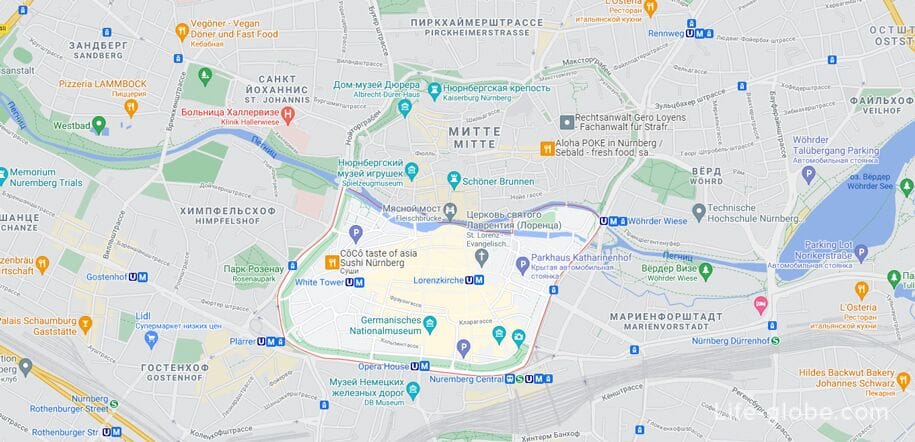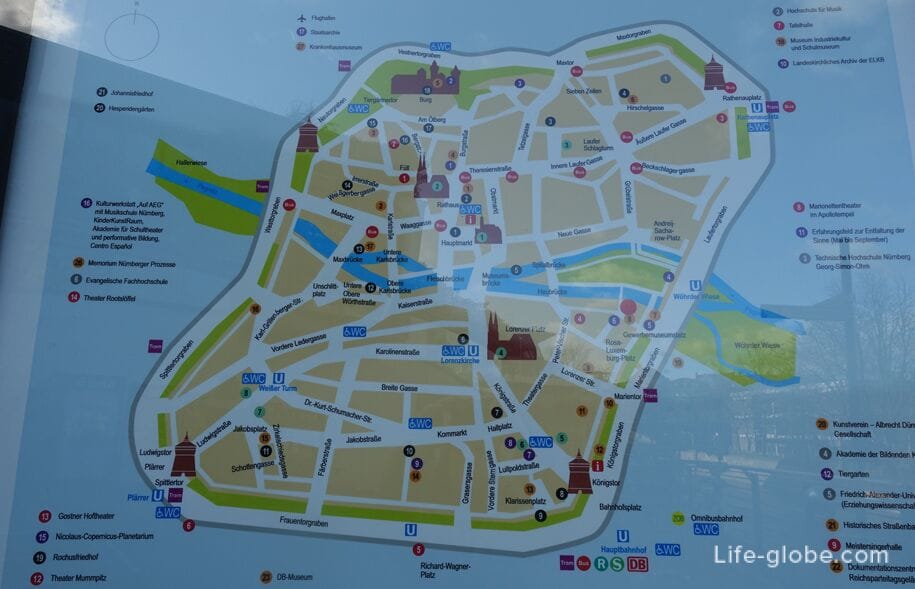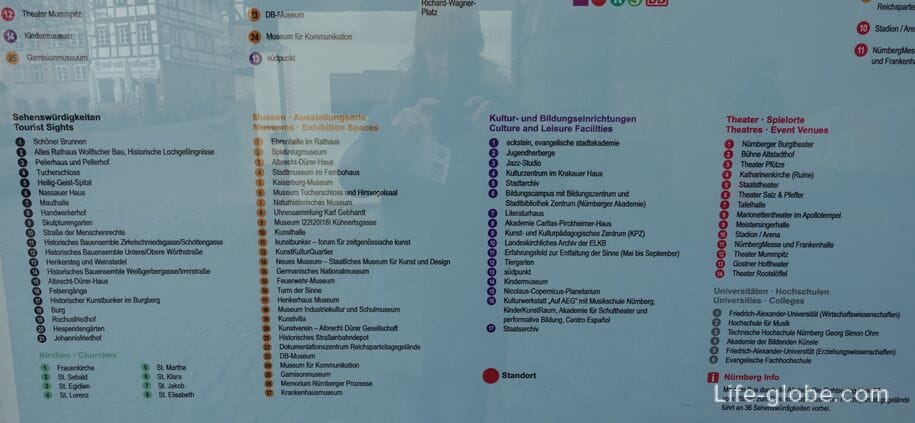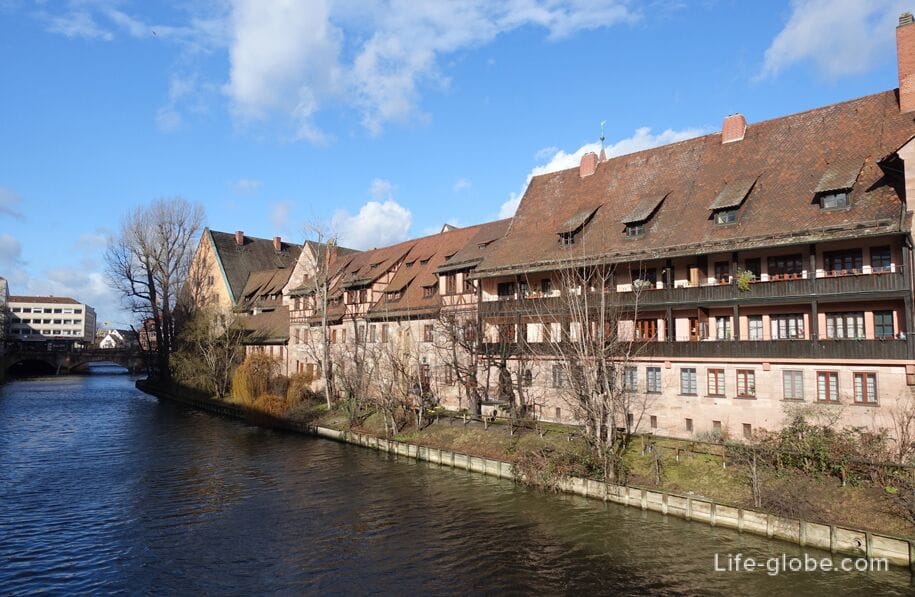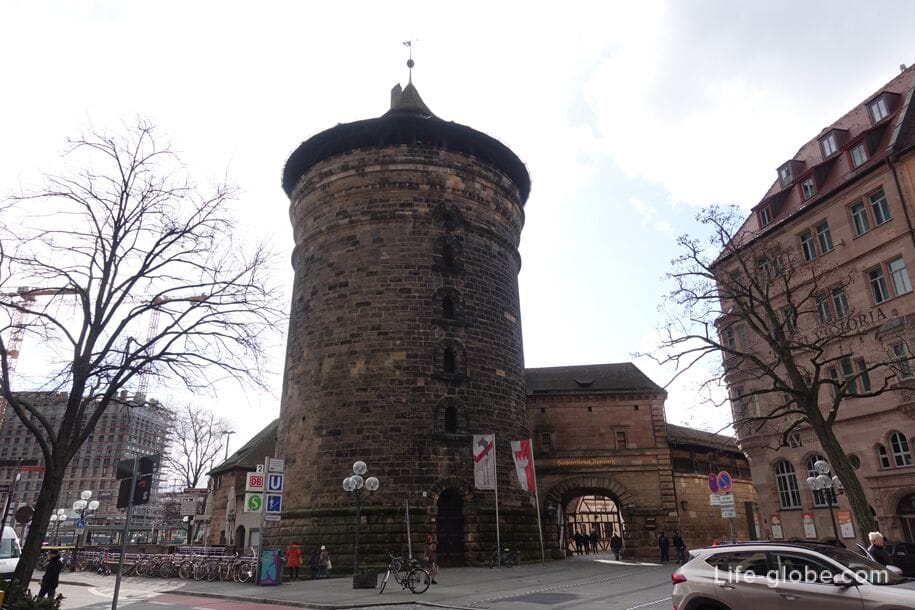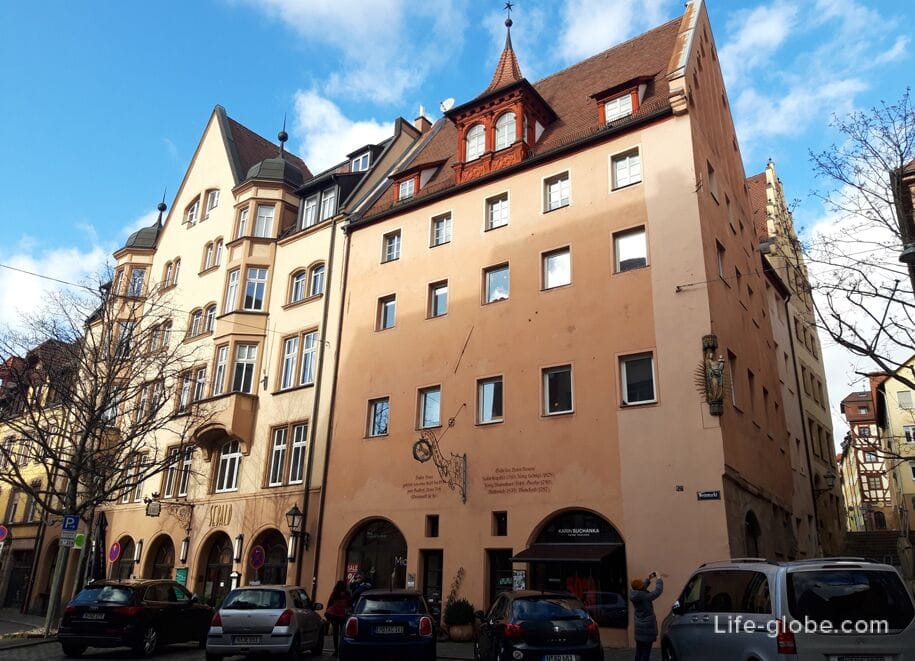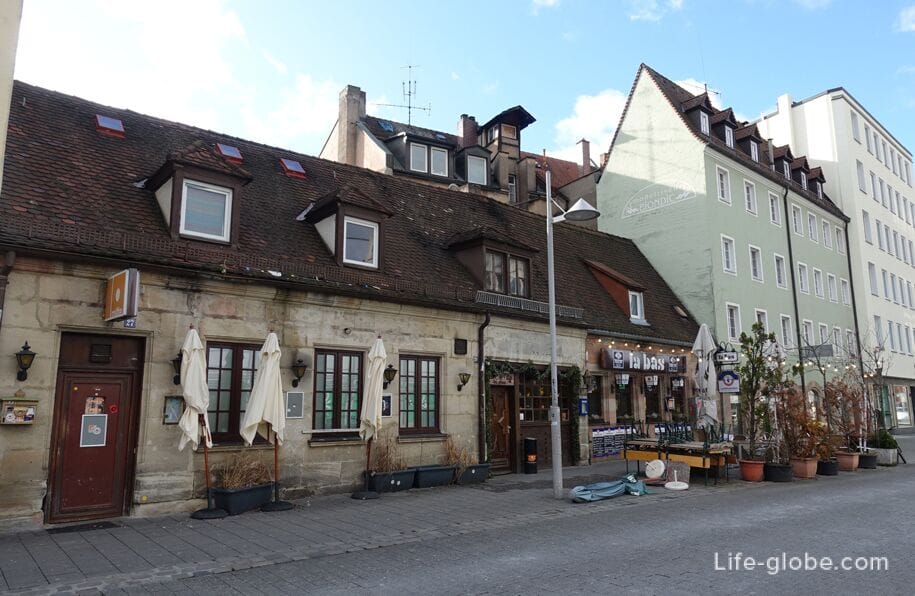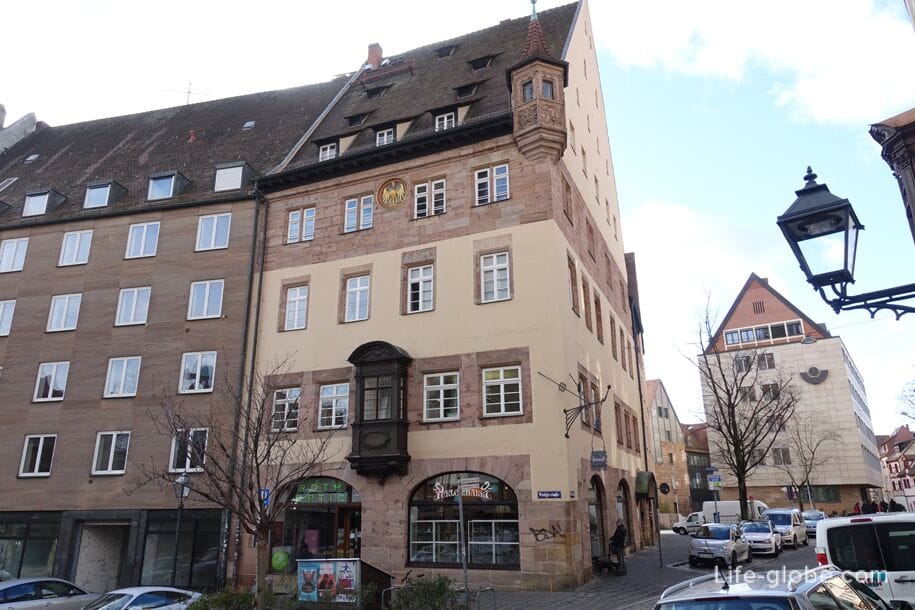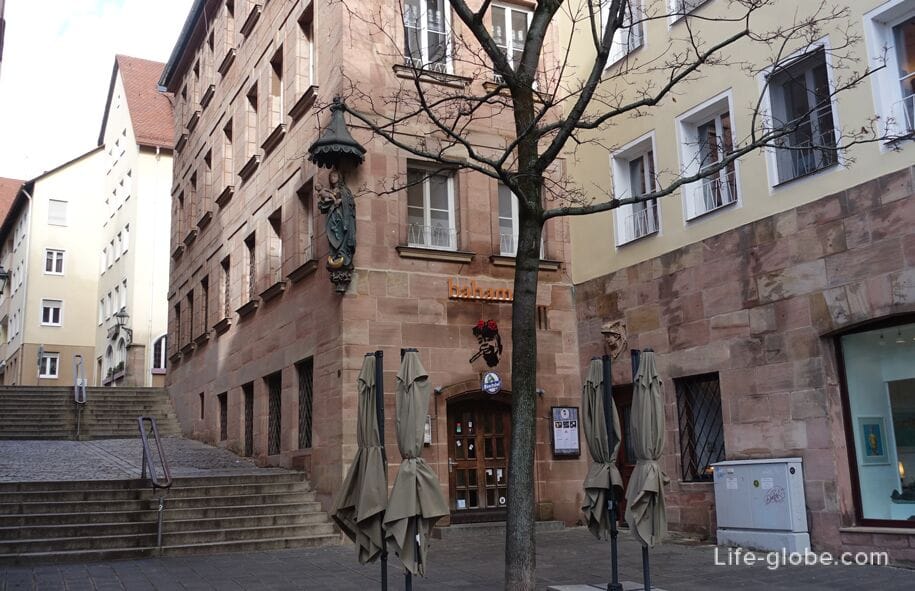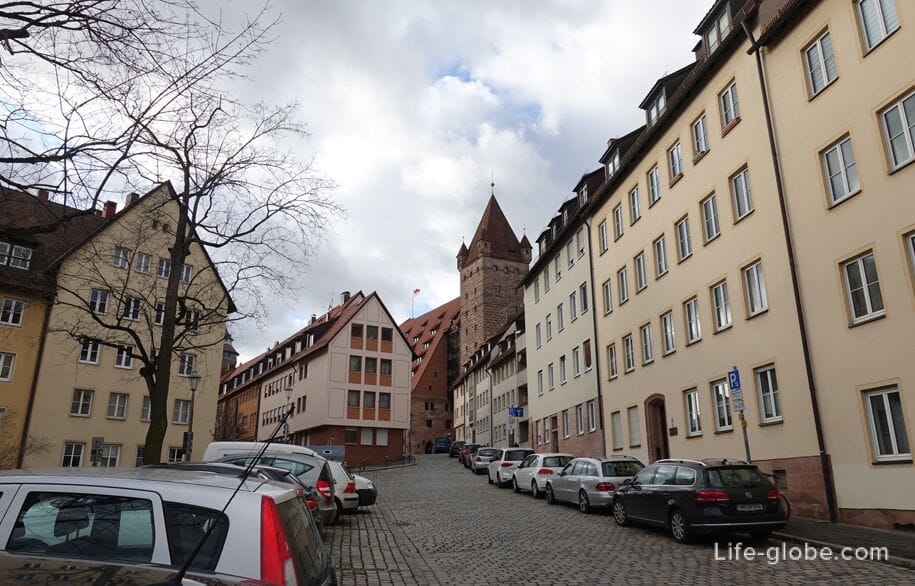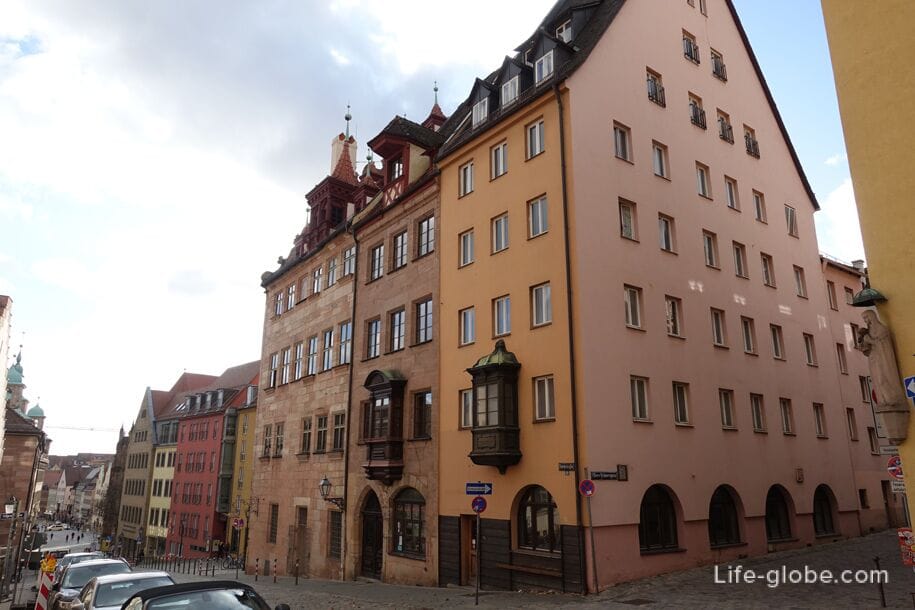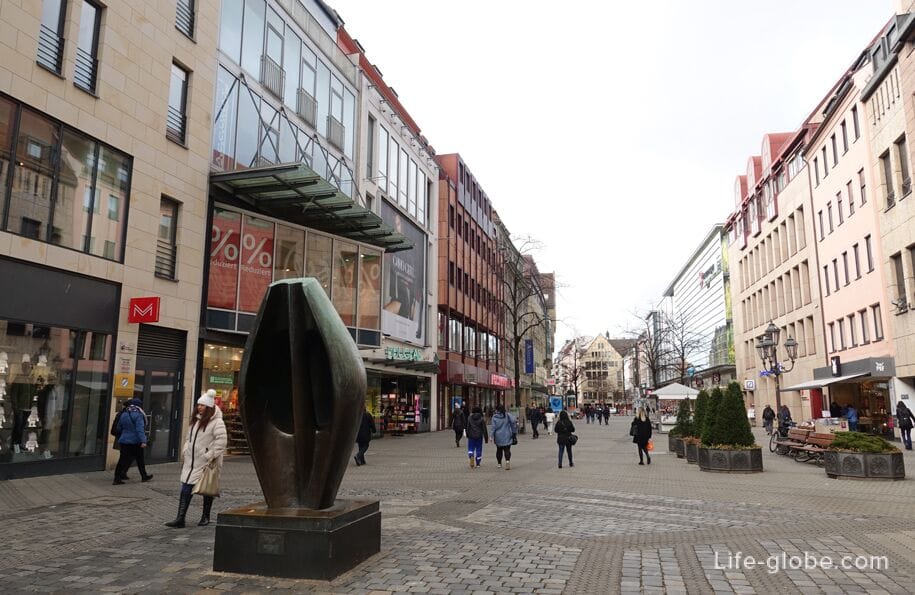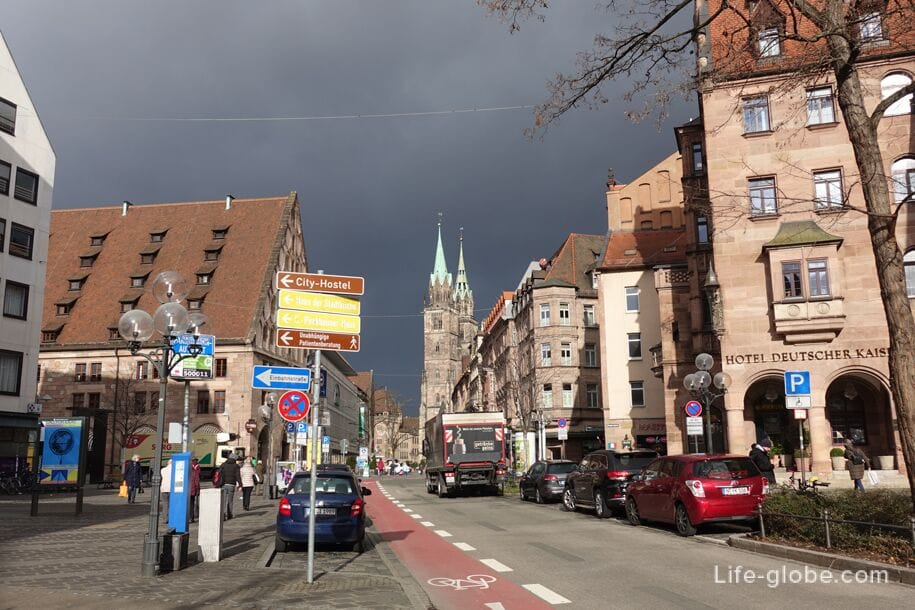
The Old City of Nuremberg (Old city Nuremberg, German name: Altstadt Nuremberg / Altstadt Nuremberg) is a part and historical center of the city of Nuremberg, which has features of medieval buildings and an abundance of attractions.
It is known that the first traces of a Slavic settlement in the city date back to about 850, while the foundation of the first city probably dates back to the dates between 1000 and 1040. Subsequently, the city developed and expanded, and was surrounded by a city wall with fortifications, which was modified over time and which can be seen today.
Although most of the old city of Nuremberg was destroyed or damaged during the Second World War, nevertheless, it is now restored and restored and, as before, has medieval features.
Today, the city of Nuremberg is unofficially considered the pearl of Bavaria and bears the title of "Treasury of the German Empire", and its old town is the heart of Nuremberg and one of the best in Germany.

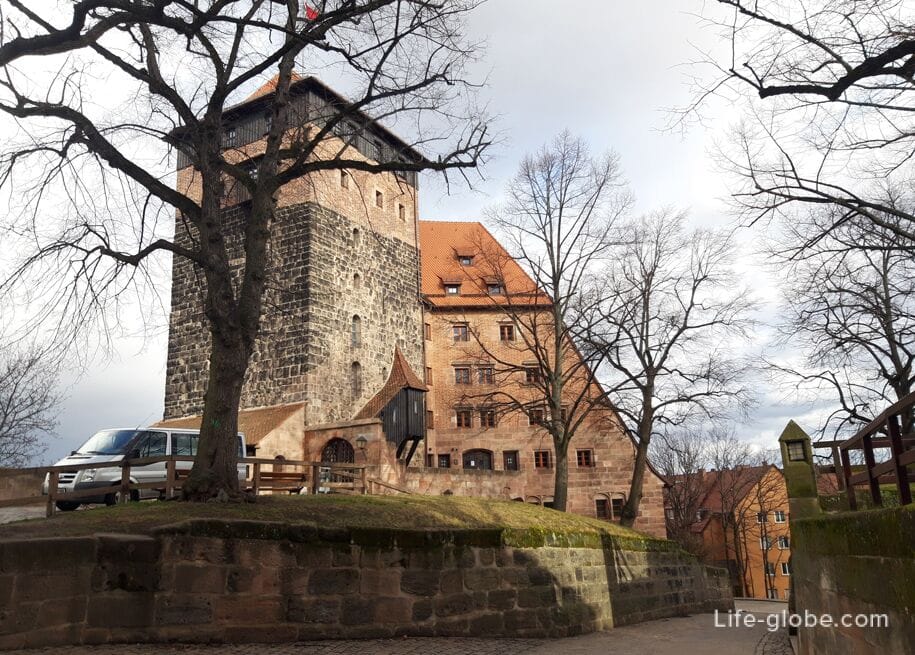
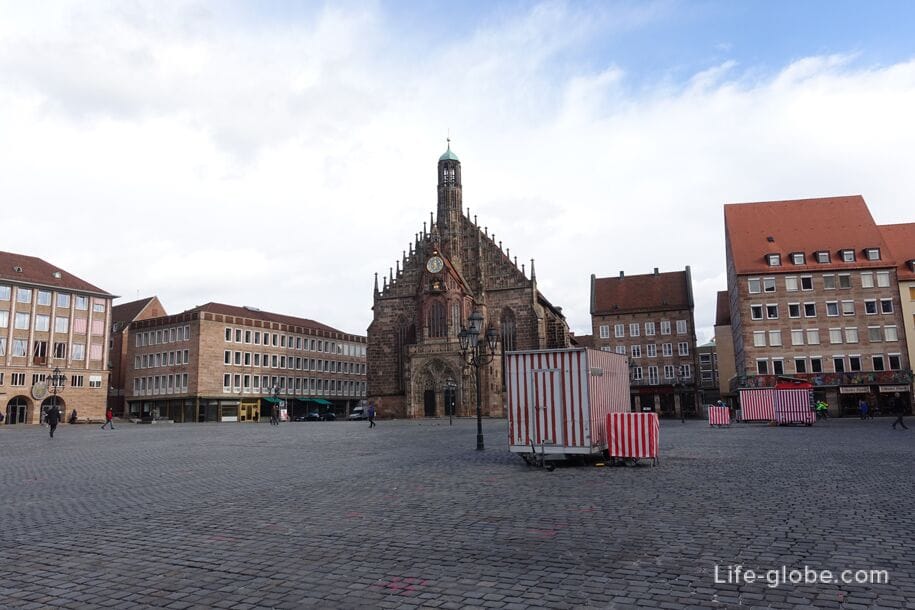
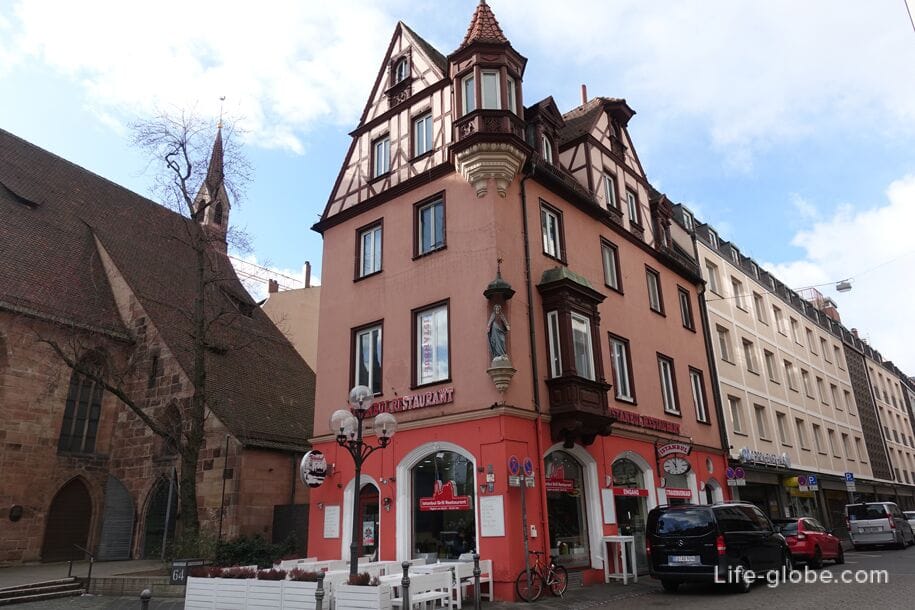
Nuremberg's main attractions are located in the old town and there are historical architectural monuments, including a fortress on a rock, half-timbered houses, elegant fountains, Gothic churches, town halls, museums and medieval dungeons, which are guided tours. And the city itself is almost completely surrounded by a former fortress wall with fortifications.
Also, the old city of Nuremberg is distinguished by paved streets, some of which are pedestrian; small but cozy squares; an abundance of cafes, bars and restaurants, there are taverns and summer beer gardens; souvenir shops, shops and small shopping centers. Accommodation facilities (hotels, apartments) are also located in the old town
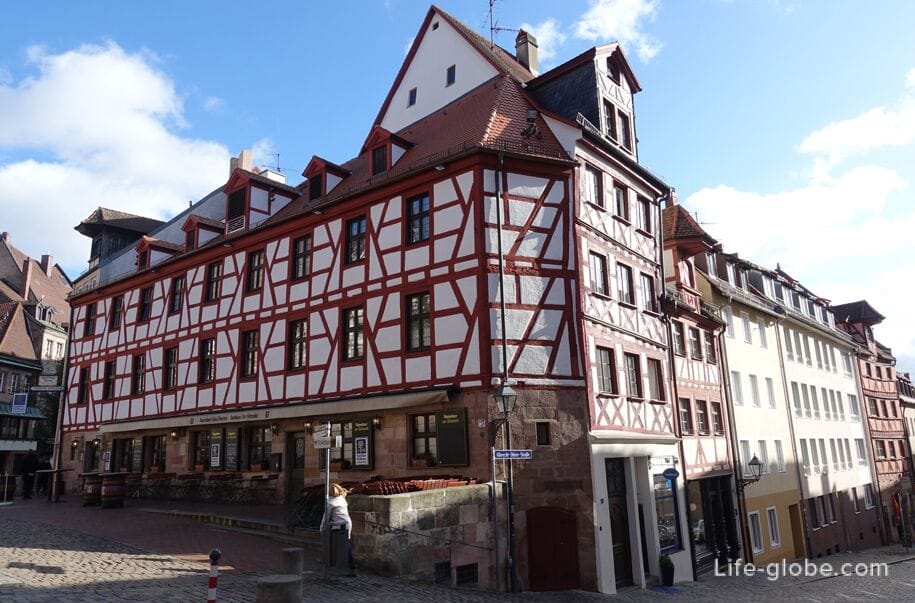
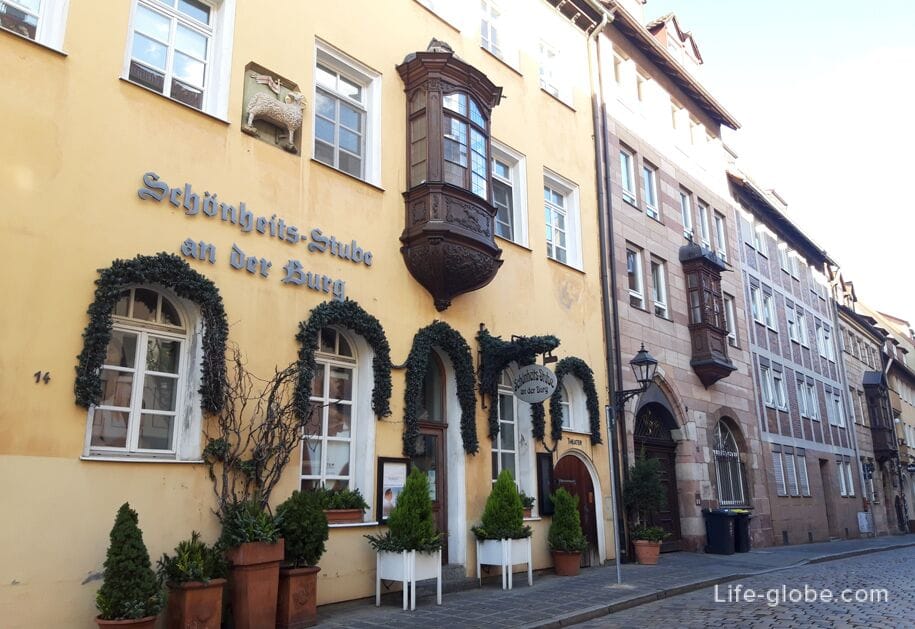
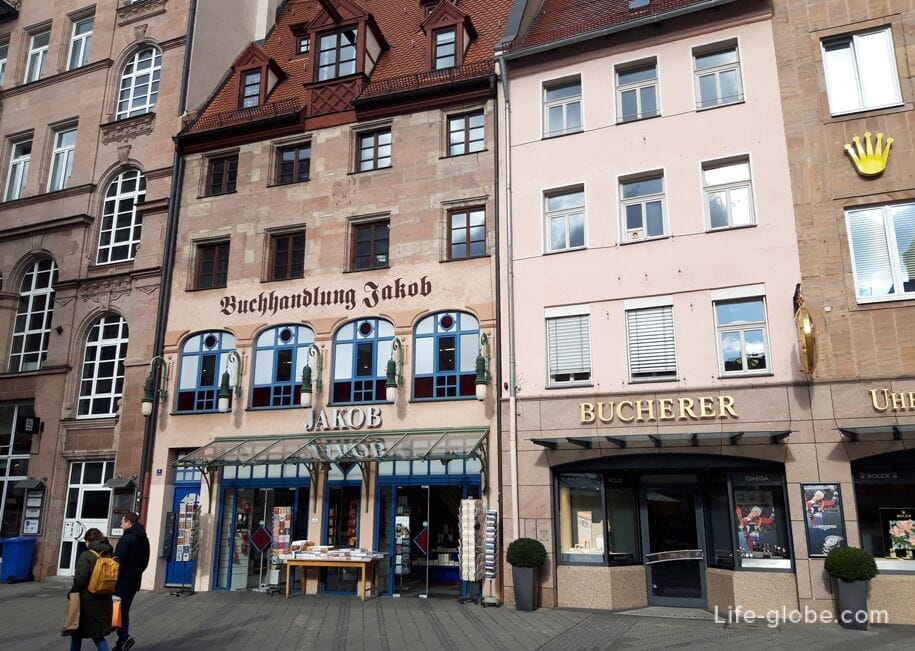

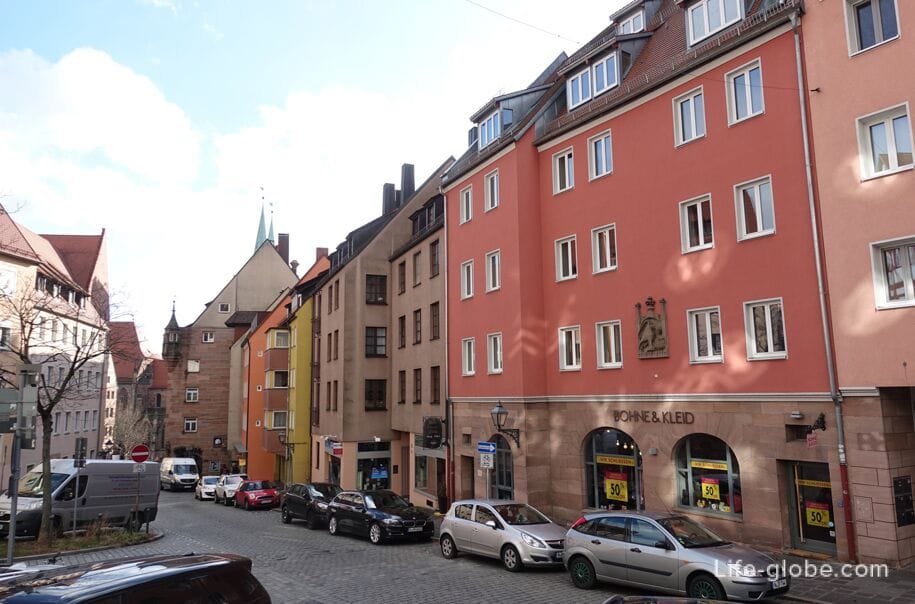
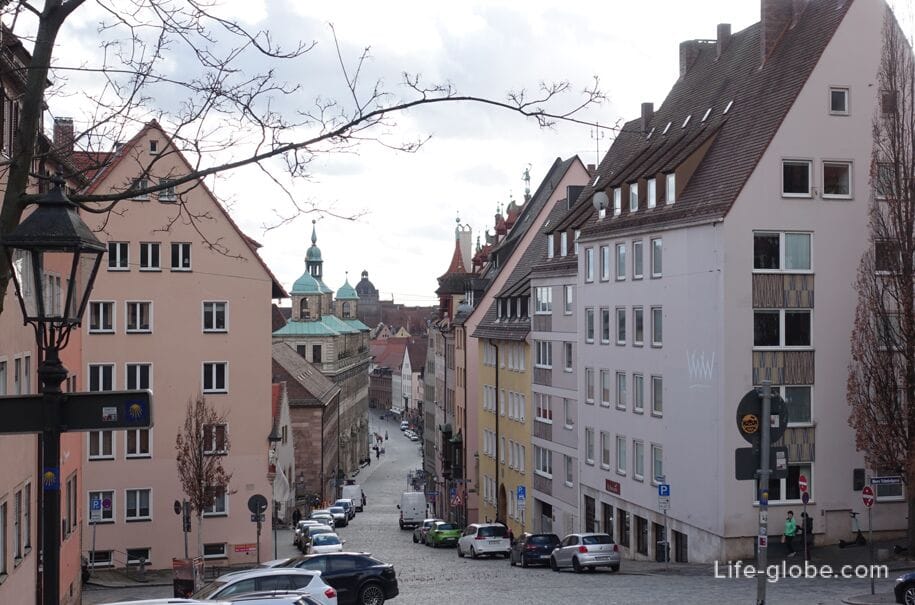

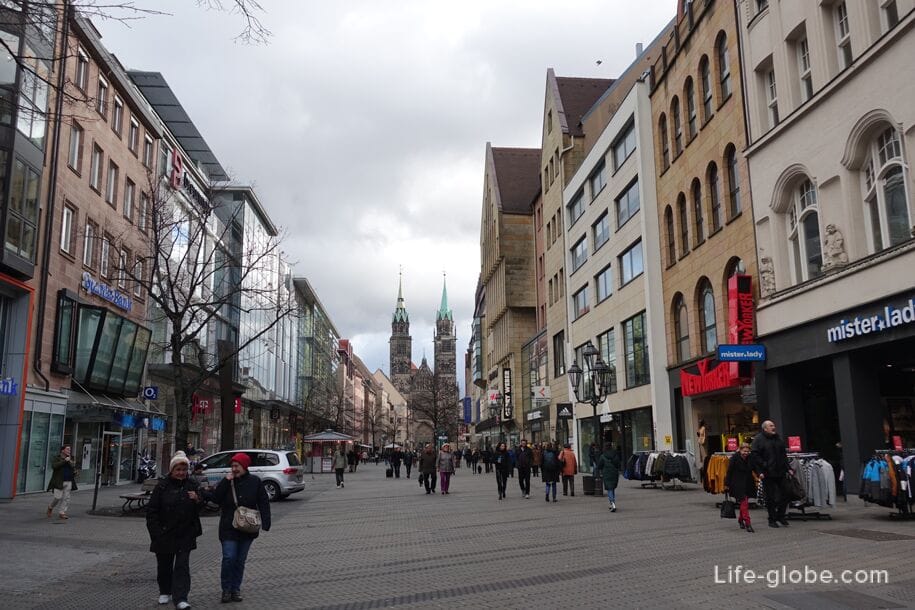

The Historical Mile of Nuremberg (Historische Meile Nürnberg) hiking route, which was created as part of the celebration of the 950th anniversary of the city of Nuremberg in 2000, has been laid along the most significant historical sites of the old city.
The route gives a brief idea of the main attractions of the medieval city. Learn more about the Historical Mile of Nuremberg...
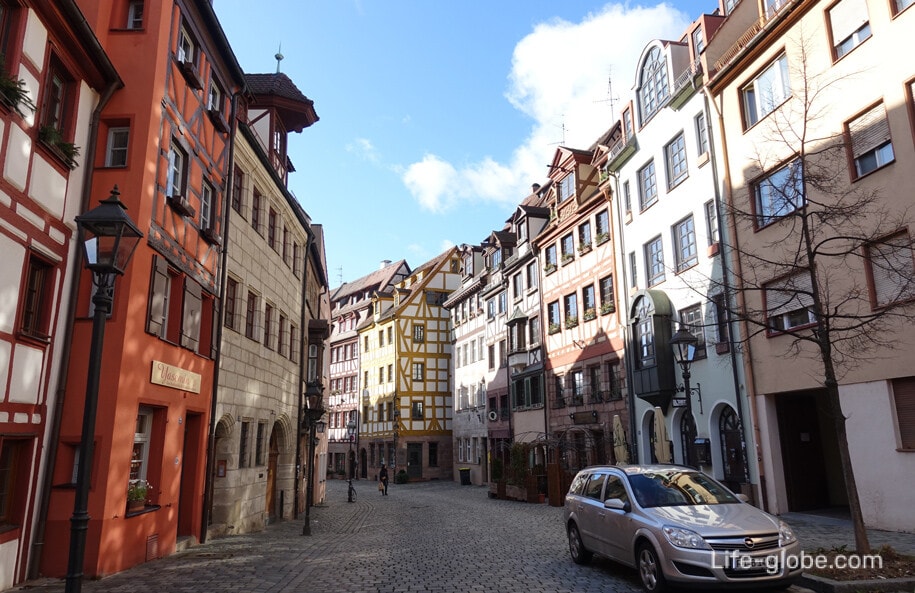
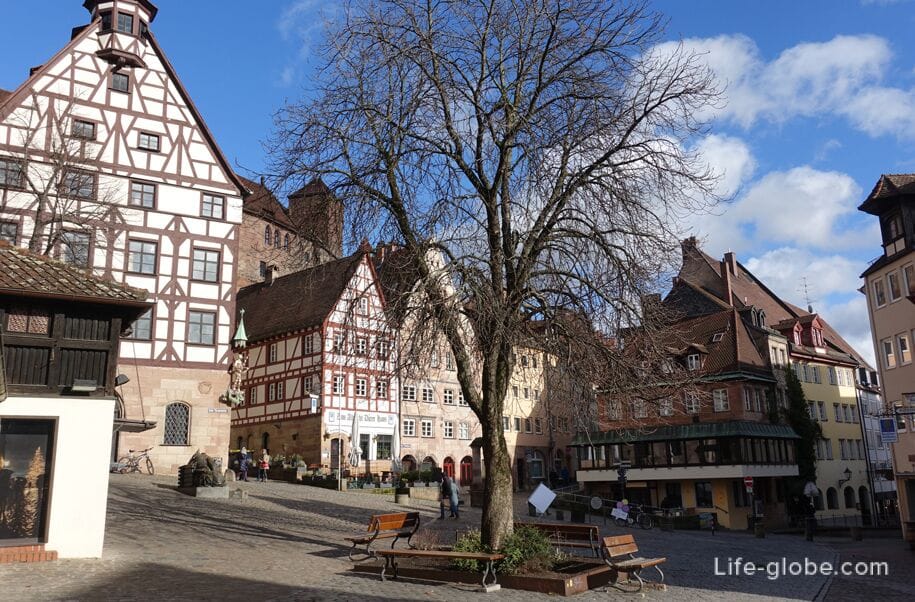
On Christmas Eve, Nuremberg hosts Christmas fairs (Nürnberger Weihnachtsmärkte), which become one of the most visited places in the city.
The Nuremberg Christmas markets are considered one of the most beautiful and colorful in Europe. About 2 million people visit Nuremberg during the Christmas fairs.
Christmas markets are located in the old town of Nuremberg. Learn more about the Christmas markets in Nuremberg...
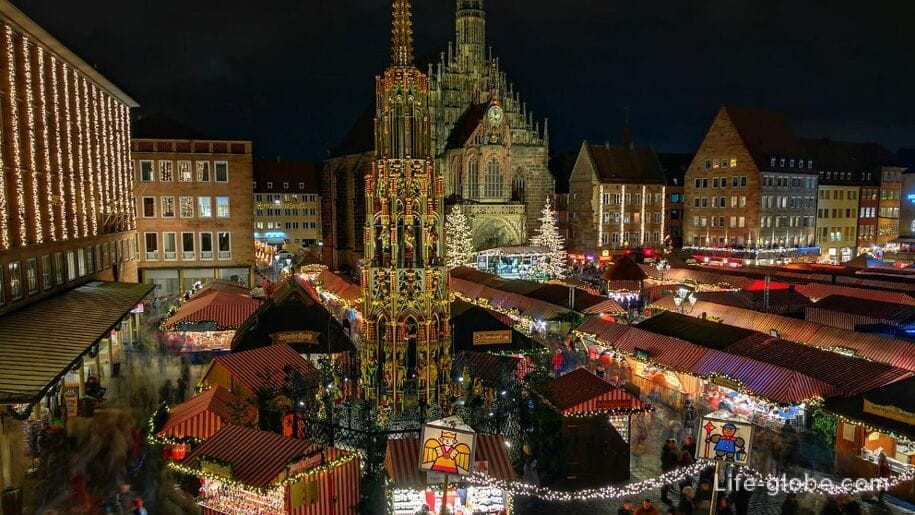
The last city wall with fortifications surrounding the current old city of Nuremberg was built by 1400 and had a length of 5 kilometers.
Today, the fortress wall of Nuremberg is one of the most important artistic and architectural monuments in the city. There are gates and towers in the wall, some of which are used by organizations and individuals. Behind, on and in front of the wall, as well as in the moat that has been preserved in places, now there are mainly pedestrian paths available for public use, and the moat itself is largely designed as a park. The former bastions to the west and north of Nuremberg Castle are arranged as a castle garden and are usually accessible during the warmer months. Learn more about the Nuremberg wall and fortifications...
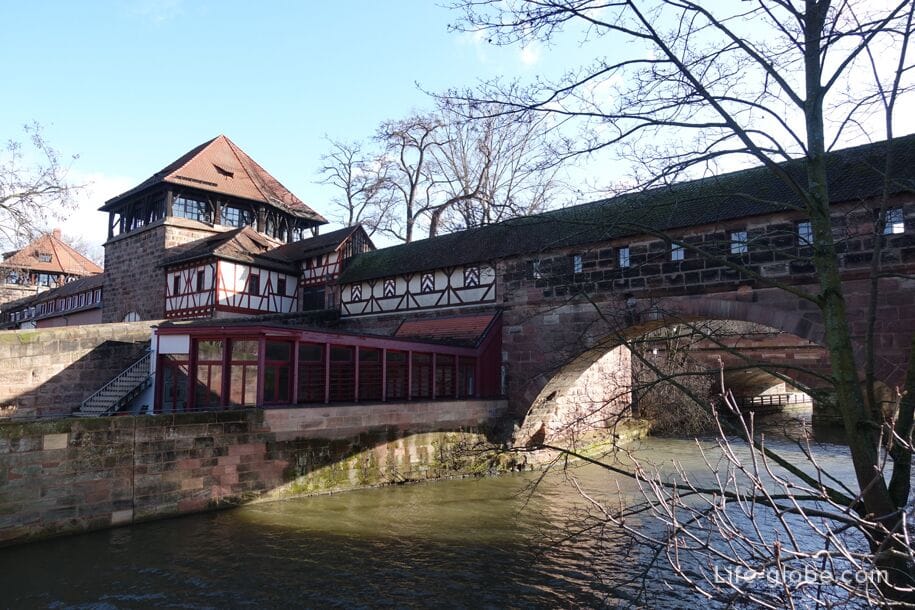
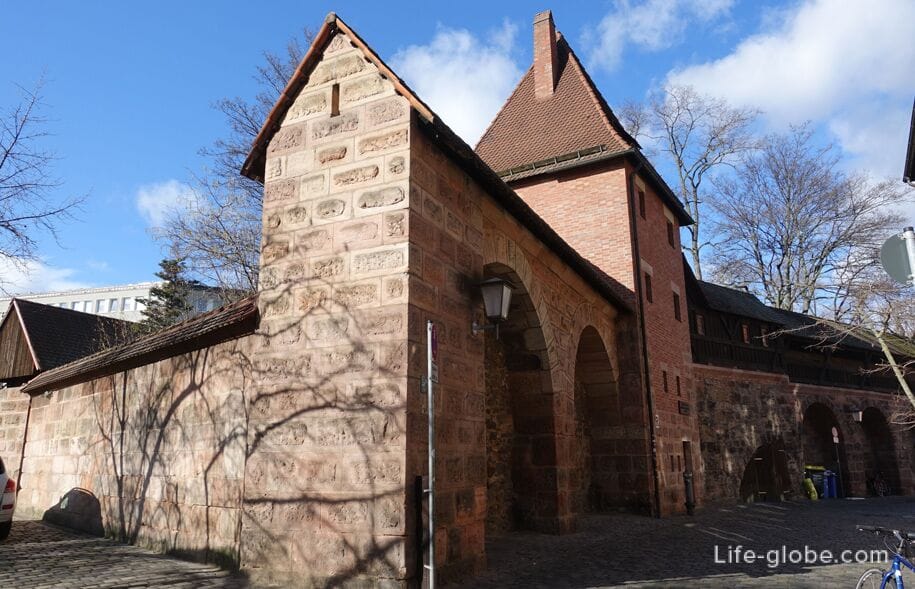
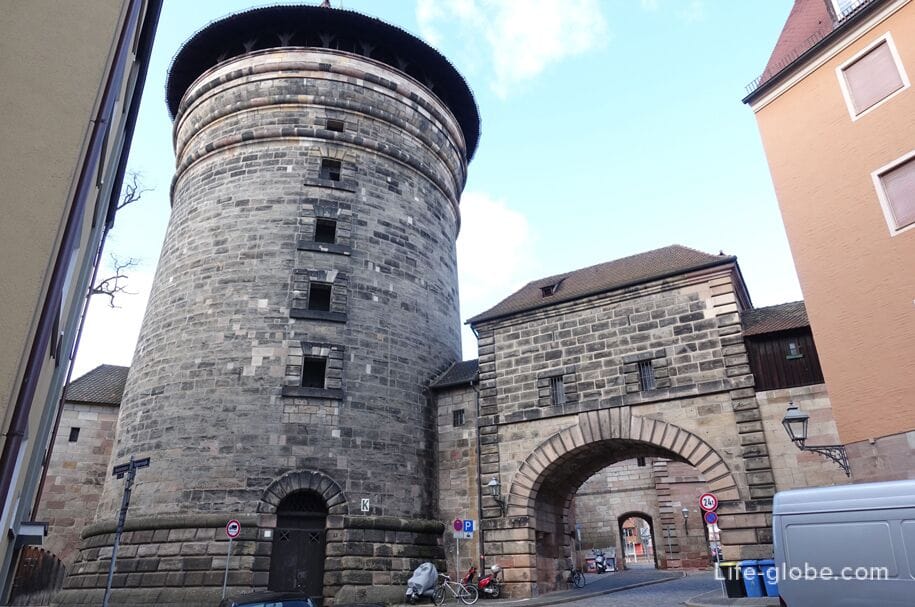
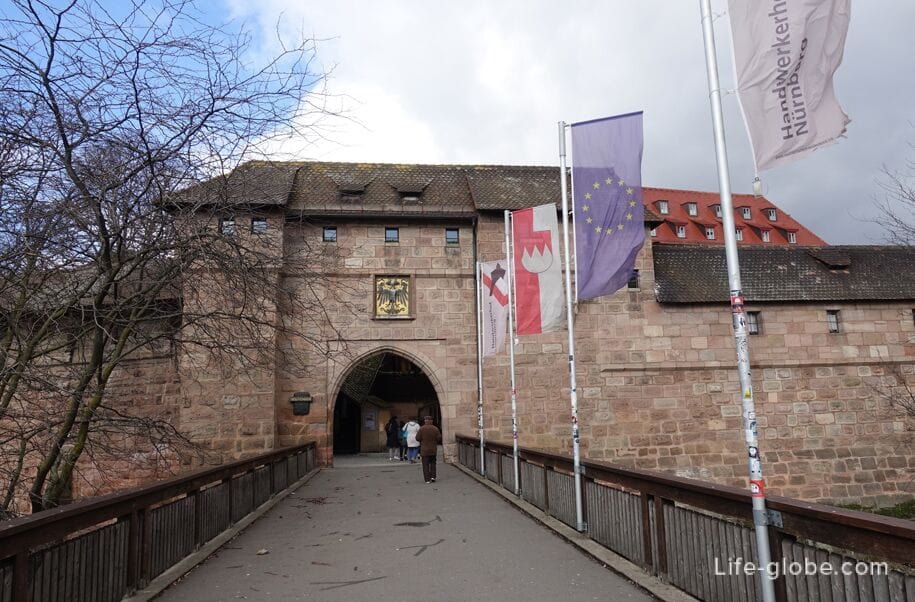
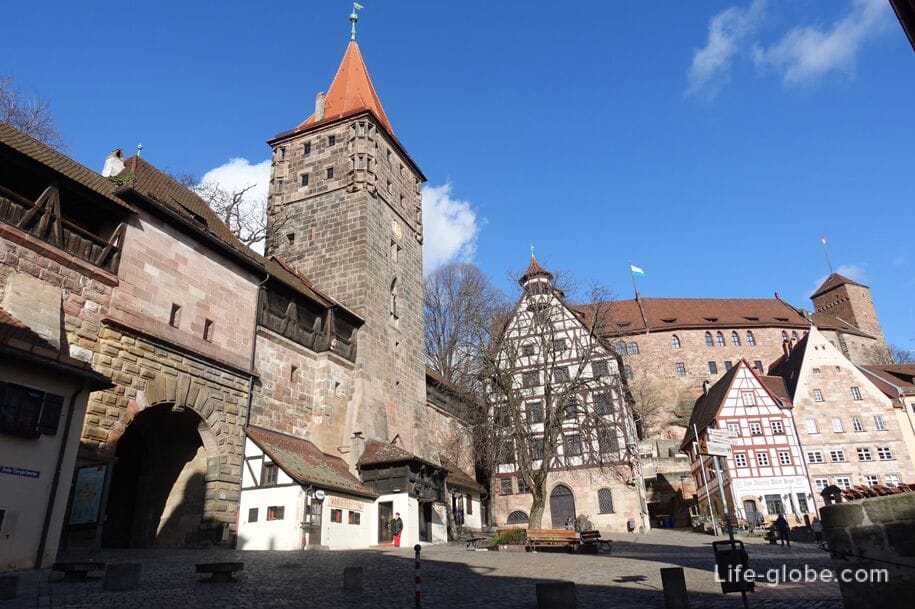
The Pegnitz River is the city river of Nuremberg and flows through the entire city.
The most famous part of the Pegnitz River flows in the historical center of Nuremberg and divides the old town into two halves of almost the same size: the northern Sebald (Altstadt - Sankt Sebald) and the southern Lorenz (Altstadt - Sankt Lorenz).
Embankments run along the river in the old town, historical buildings are located, and the river itself is crossed by bridges that have been part of the urban landscape since the Middle Ages. Learn more about the bridges and embankments of the Pegnitz River in the old town of Nuremberg...
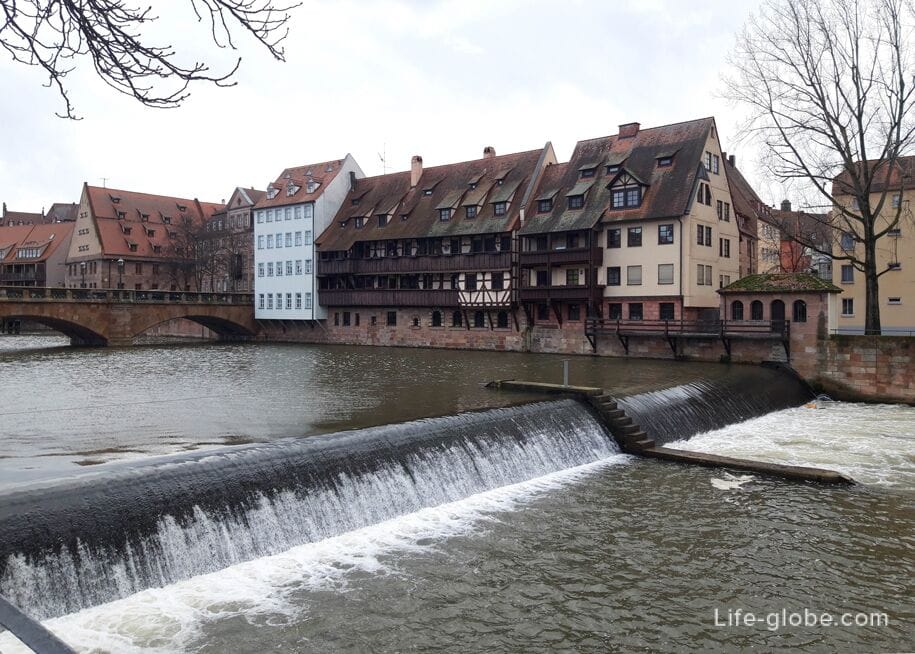
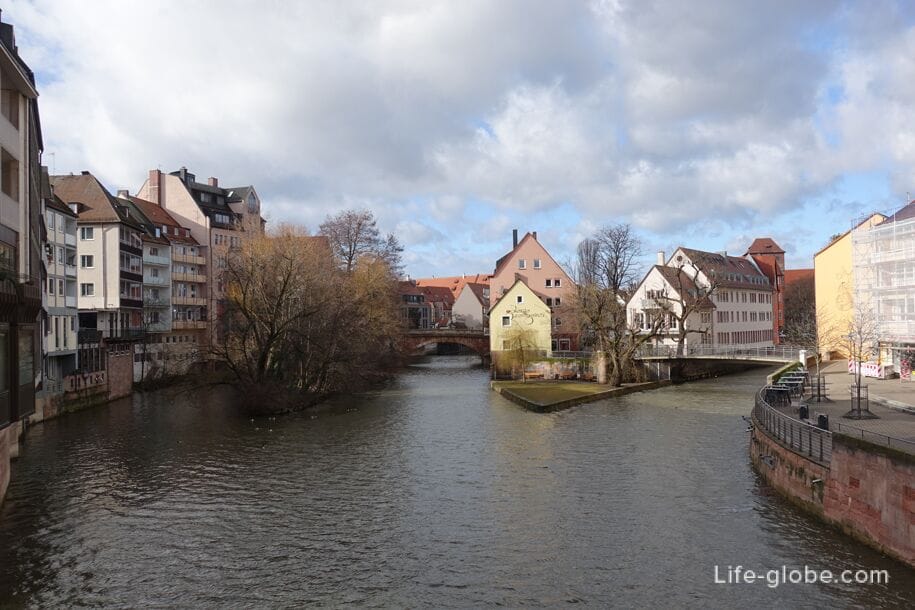
Of the most significant bridges over the Pegnitz , one can distinguish:
- The Museum Bridge (Museumsbrücke), which is the central and most visited in Nuremberg.
Initially, the site of today's bridge was believed to be the oldest bridge in Nuremberg across the Pegnitz River - a wooden bridge that was documented in the 13th century.
In 1700, the light saw a new stone bridge with two arched openings.
There are two Baroque-style pulpit structures with wrought-iron railings on the Museum Bridge: in honor of Emperor Leopold I and King Joseph I. More about the Museum Bridge...

- Meat bridge (Fleischbrücke / Fleischbrücke), which, because of its appearance, is also called a "Humpback Bridge".
The bridge lies at the narrowest point of the Pegnitz River.
It is assumed that the very first bridge at this place dates back to 1200, while the first documented mention of the Meat Bridge dates back to 1335.
The name of the bridge "Meat" comes from the Meat House/shop (Fleischhaus) located near the bridge, built in 1570-1571. Before that, there were wooden rows of a meat market near the bridge.
Today, the bridge is an example of Renaissance architecture in Nuremberg. More about the Meat Bridge...
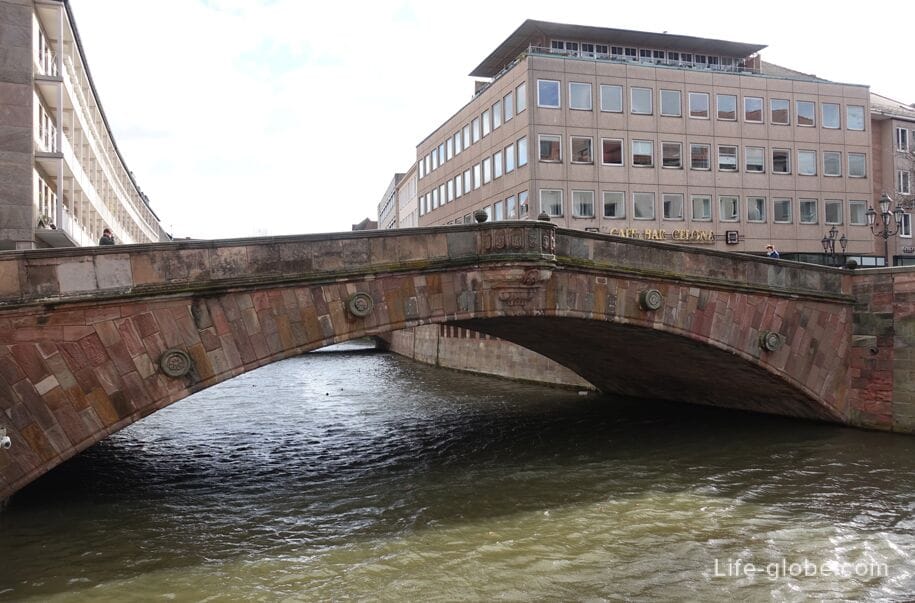
At the north-western end of the Meat Bridge is the portal of the "Bull" (Das Ochsenportal), which rests on one side on the former Meat House, and the other is adjacent to the Meat Bridge.
The portal is decorated with carvings and a stone figure of a reclining bull in the upper part. The portal was built in 1599 as the entrance gate to the Meat House building.
The portal was damaged during the Second World War. In 1950, the ox on the portal was replaced by a slightly modified copy.
The Latin inscription on the portal reads: "Omnia habent ortus suaque incrementa sed ecce quem cernis nunquam bos fuit hic vitulus", which translates roughly as: "All things have their origin (beginning) and growth, but look: the bull you see here has never been a calf";
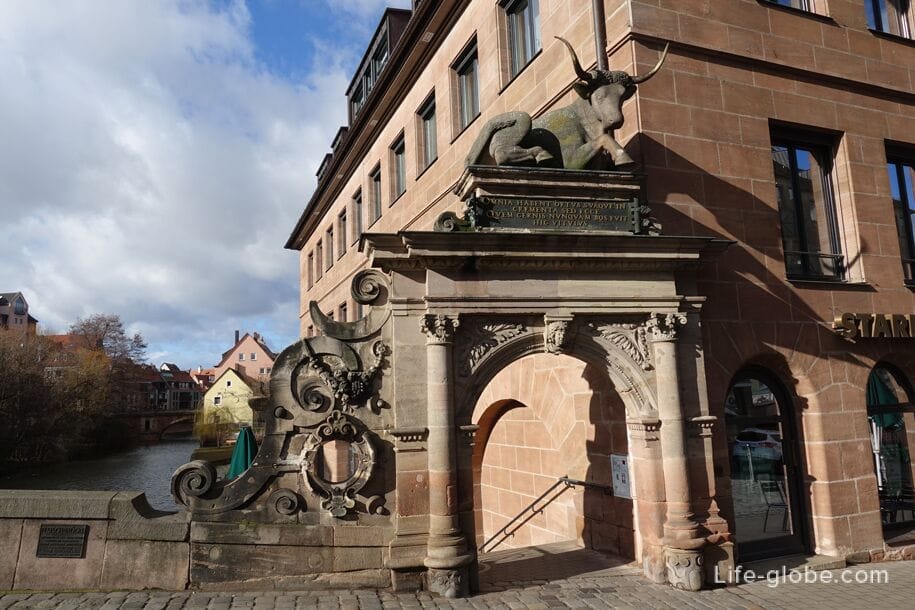
- The Hangman's Bridge (Henkersteg), which was first built in 1457. In 1595, the bridge was washed away by a severe flood. After that, the bridge was restored.
The bridge got its name "Hangman's Bridge", which literally translates from German as "The Way to the Executioner", because of the nearby Hangman's Tower.
Today, the Hangman's Bridge is a wooden covered pedestrian bridge.

The bridge of the Executioner is one of the most recognizable and visited architectural ensembles of Nuremberg, which, in addition to the bridge of the Executioner, also includes: half-timbered former wine warehouse (Weinstadel), square water tower (Wasserturm), dwukrotny the connecting bridge (Pesnicky bridge / Pegnitzüberbrückung), round tower on the wall of the Executioner (Henkerturm) and a small house of the hangman (Executioner house). More about the ensemble...
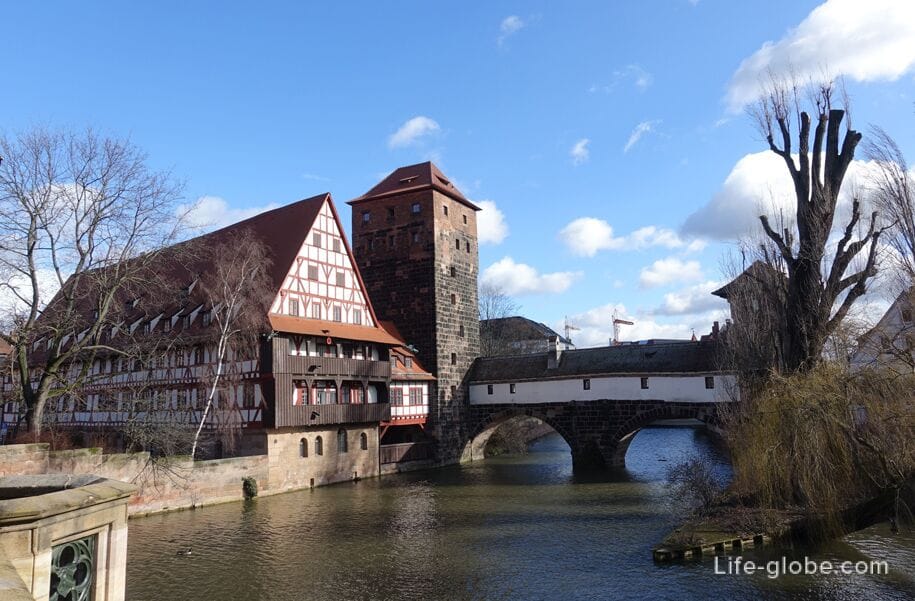
- the Maximilian Bridge (Maxbrücke / Maxbrücke), which was erected by the master builder from Rothenburg Jacob Grimm in 1457 and at that time was called the Stone Bridge.
Later, two cannon rondels were added in the middle of the bridge structure to protect the river.
In 1810, the bridge was renamed in honor of King Maximilian I Joseph of Bavaria and since then the port has been called "Maximilian Bridge". Learn more about the Maximilian Bridge...
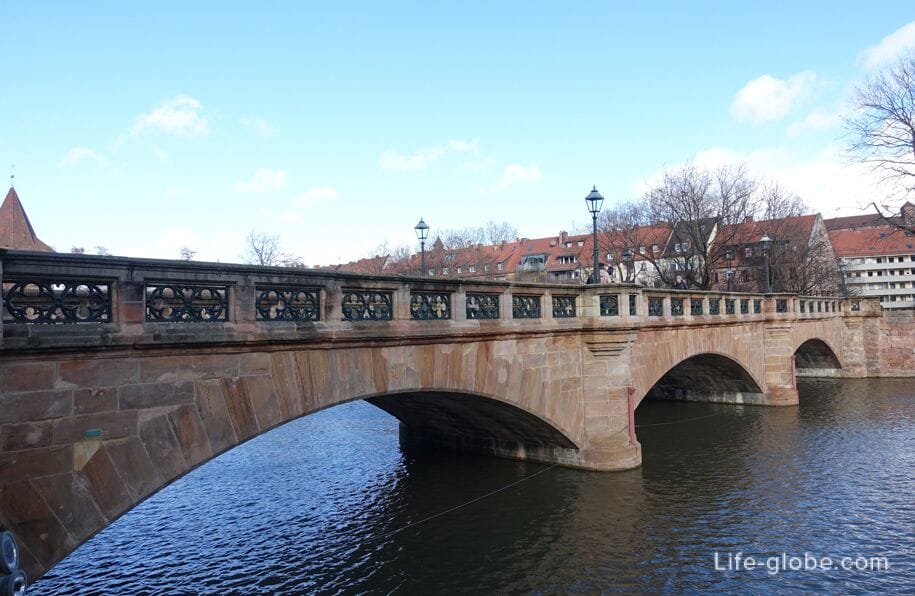
- Chain bridge (Kettensteg), which is located at the western tip of the old city of Nuremberg, near the former city walls and fortifications.
This narrow 68-meter pedestrian bridge is the oldest surviving iron suspension bridge in continental Europe.
The chain bridge was designed and built by engineer Konrad Georg Kuppler. The bridge was opened on December 30, 1824 and replaced a wooden walkway.
The bridge has two spans, an iron main structure and a wooden base for movement. Learn more about the Chain Bridge and city fortifications...
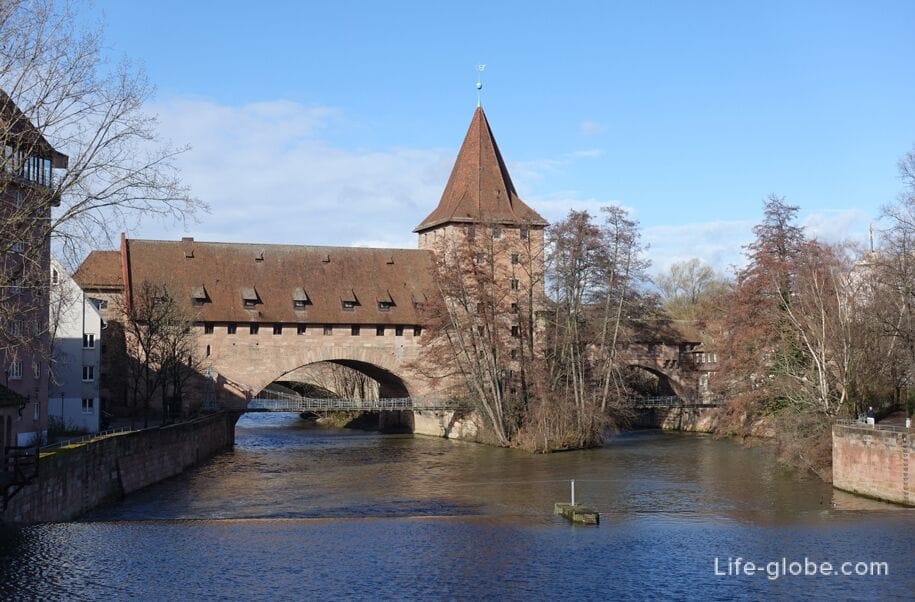
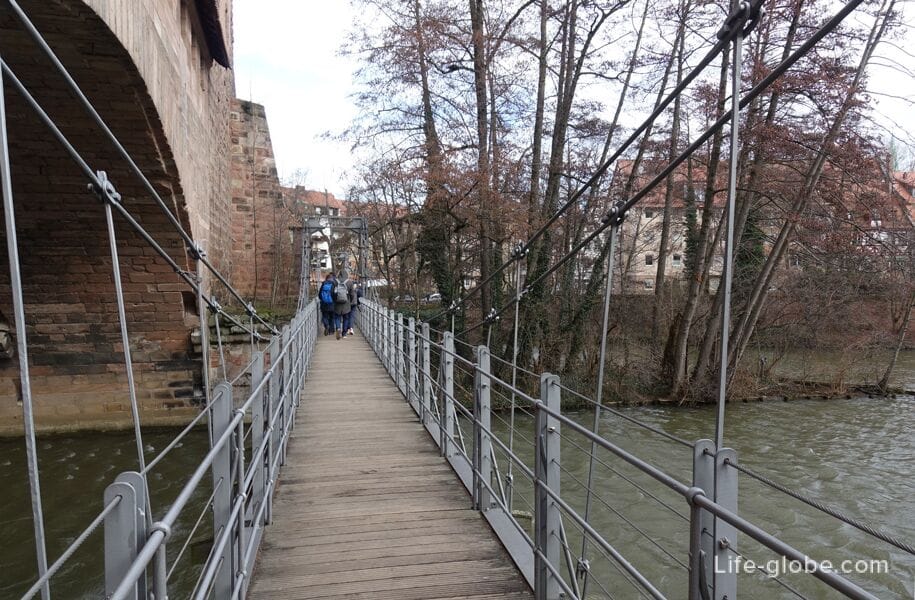
On the Pegnitz River in the old town of Nuremberg are: the island of Schütt (Insel Schütt) and the island "Flea Market" (Flea Island, Trödelmarkt), which is also known as the island of Love (Liebesinsel).
From the western side on the island of Schlütt is remarkableDebtors' Tower or Debt Tower (Schuldturm / Schuldturm).
The tower, presumably, was part of the so-called penultimate city fortifications, and was built in 1323 under the supervision of master builder Konrat Stromer.
After its construction, the tower was located within the city, and it was turned into a prison for debtors, and also used as so-called stupid houses for the mentally ill. More about the Debtors' Tower…
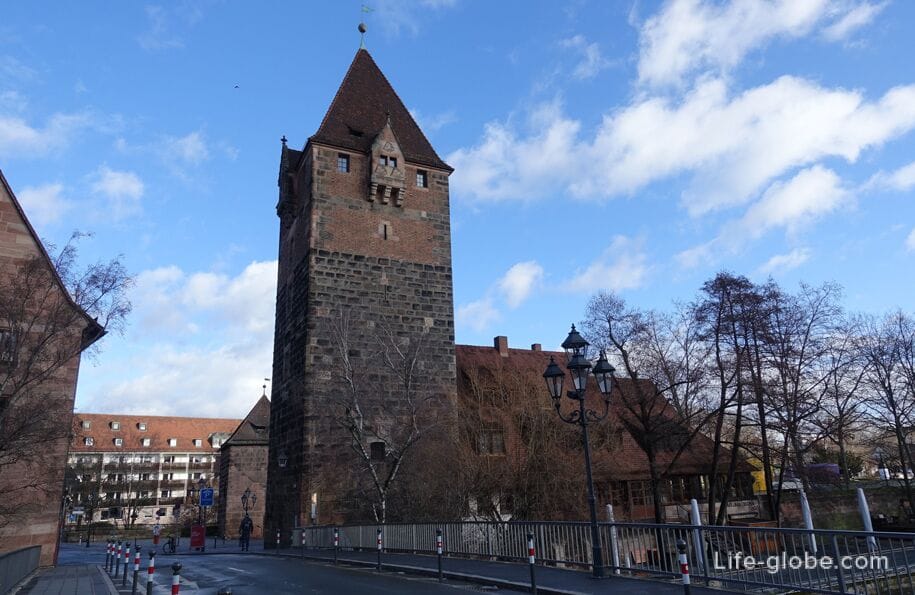
The Heilig-Geist-Spital (Heilig-Geist-Spital), the oldest and once the largest medical institution in Germany, is located on the bow of the Schlütt Island.
The hospital was built in 1332-1339 together with the church. The infirmary, as in many medieval cities, was dedicated to the Holy Spirit.
The walls of the hospital now house a nursing home and a restaurant "Heilig-Geist-Spital Nürnberg", with tables in the courtyard.
Due to the fact that the wing of the hospital is located above the waters of the river, and its arches are lowered into the water, locals also call the hospital "Nuremberg Glasses". Also noteworthy is the restored picturesque bay window with a pointed tower. More about the Hospital of the Holy Spirit...
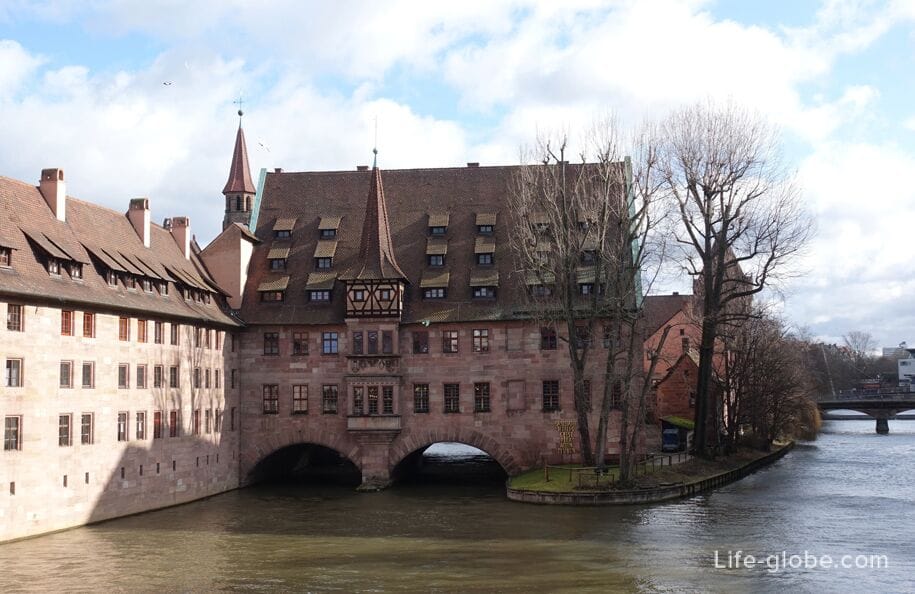
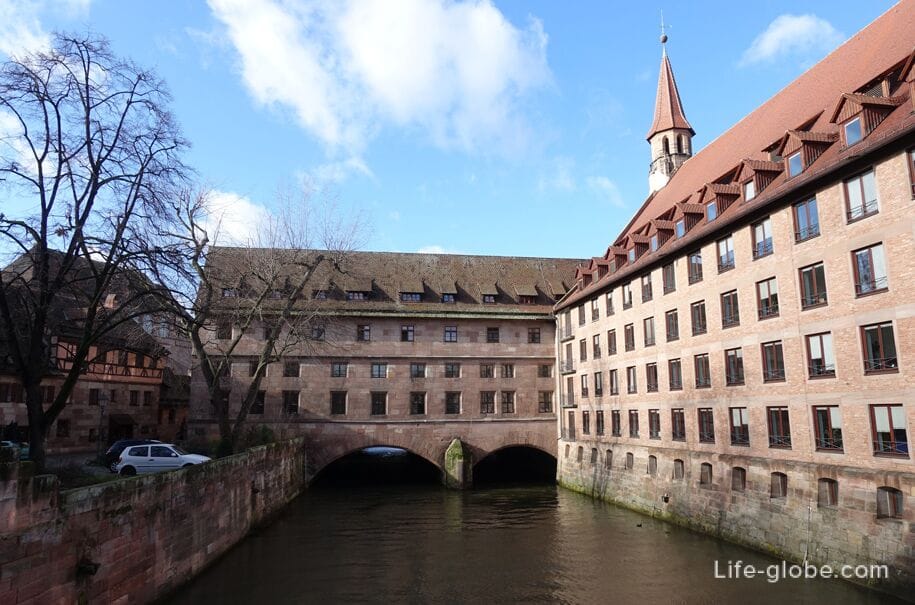
Love Island, where there was a market in the Middle Ages. At that time, pigs were traded in the market, so the trading area on the island was called "Säumarkt". Mills have been operating on the island since 1440. In 1444, a butcher shop (butcher house) was built on the island.
Since the 16th century, residents of the northern side of the old town began to trade old and used things on the island. Therefore, in 1809-1810, the island was renamed the "Flea Market".
From 1895 to 1897, a full-fledged market complex was built, which replaced the old market shops.
Today, the island "Flea Market" is no longer a market. This is a very colorful, attractive and romantic place for walking and relaxing, where you can take a walk, lie on the green lawn (the eastern nose of the island), relax on benches or admire the Pegnitz River and the buildings on its banks from one of the terraces on the island. More about Love Island...


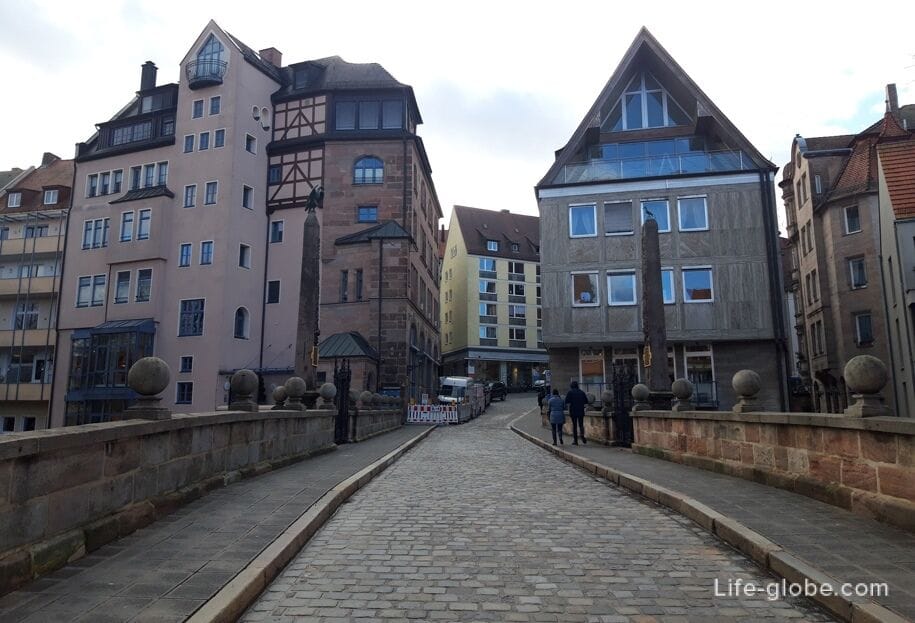
Nuremberg Fortress (Nürnberger Burg), also known as Kaiserburg Castle (Kaiserburg Nürnberg) - the former residence of the rulers.
Today, the Nuremberg Fortress is a symbol and the main attraction of the city. It is a group of medieval fortified buildings and is considered one of the most formidable medieval fortifications in Europe, which personified the power and importance of the Holy Roman Empire, as well as the outstanding role of the imperial city of Nuremberg.
Museums are located in part of the fortress premises.
The fortress is located on the rocky mountain "Nuorenberc".
The address of the fortress: Auf der Burg, 17.
Fortress website:kaiserburg-nuernberg. More about the Nuremberg Fortress...
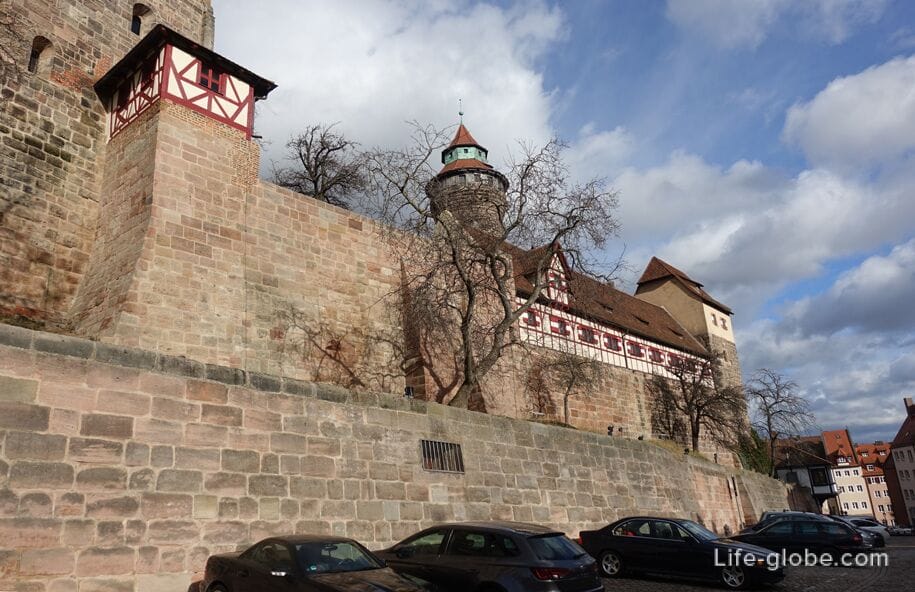
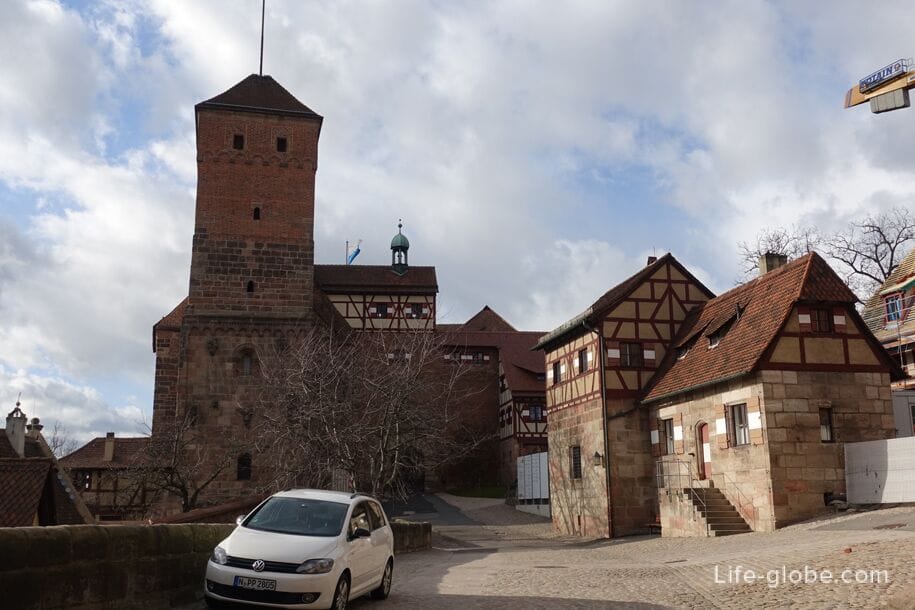
The main square of Nuremberg is the Market Square (Hauptmarkt / Hauptmarkt), which is almost entirely the pedestrian center of the city and a place where something is constantly happening - whether it's the weekly market or the main Christmas market of the city. More about the Market Square...
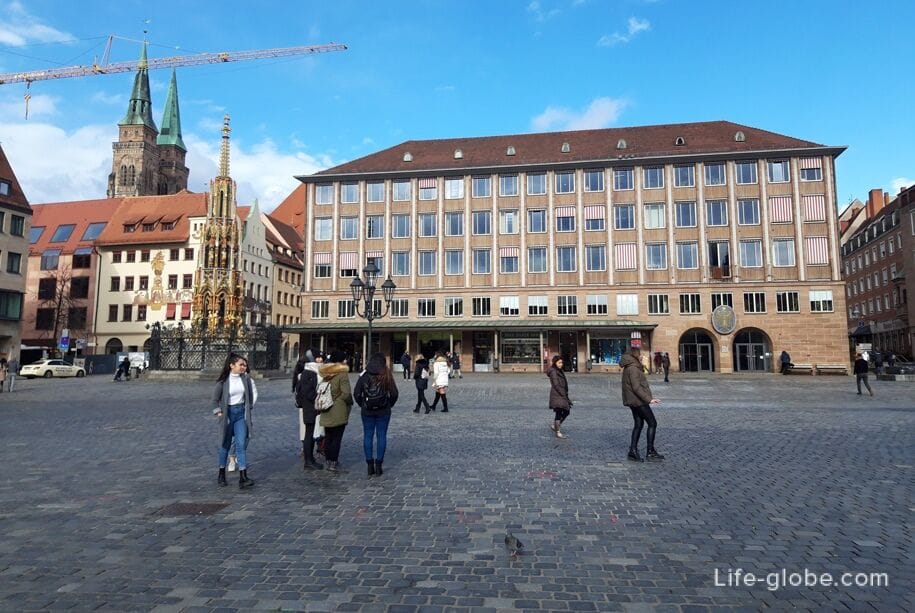
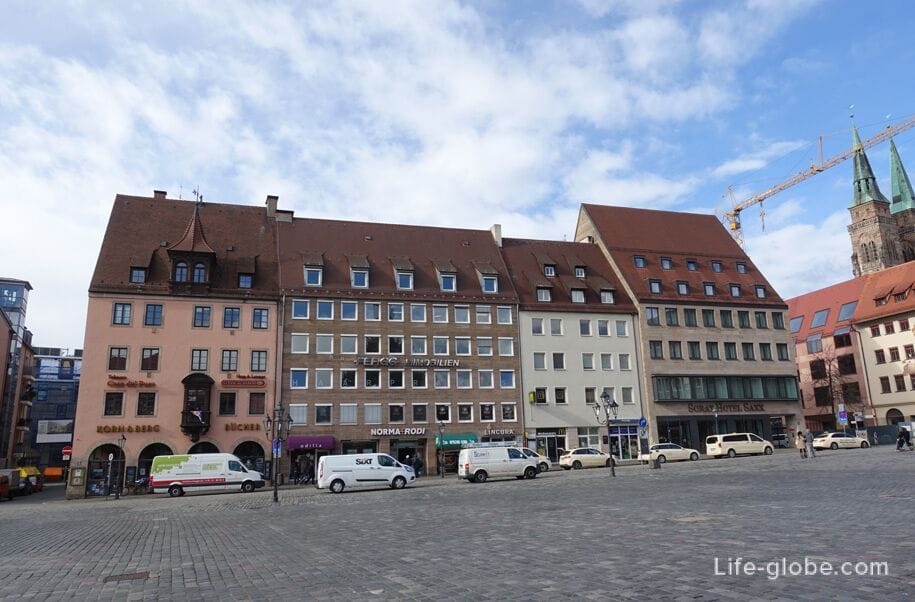
On the Market Square are notable:
- A beautiful fountain or a Beautiful fountain (Schöner Brunnen / Schoener Brunnen), built between 1385 and 1396 from sandstone.
Today on the Market Square there is a colorfully painted copy of the shell-stone fountain (1903).
The beautiful fountain has a height of about 19 meters and the shape of a Gothic church spire. It consists of four tiers, which are decorated with gilding and 40 colorful figures (statues), personifying and representing scientists, evangelists and church fathers, electors and good heroes of different times, Moses and the prophets. Gargoyles in the lower part of the fountain symbolize the seven deadly sins, and are also designed to protect the city from dishonesty.
There is a rotating brass ring on the grating of the fountain. Legend has it that if you turn the "golden" ring of a Beautiful fountain once, then three wishes will come true, and if you turn it three times, you can expect many children. More about the Beautiful Fountain...
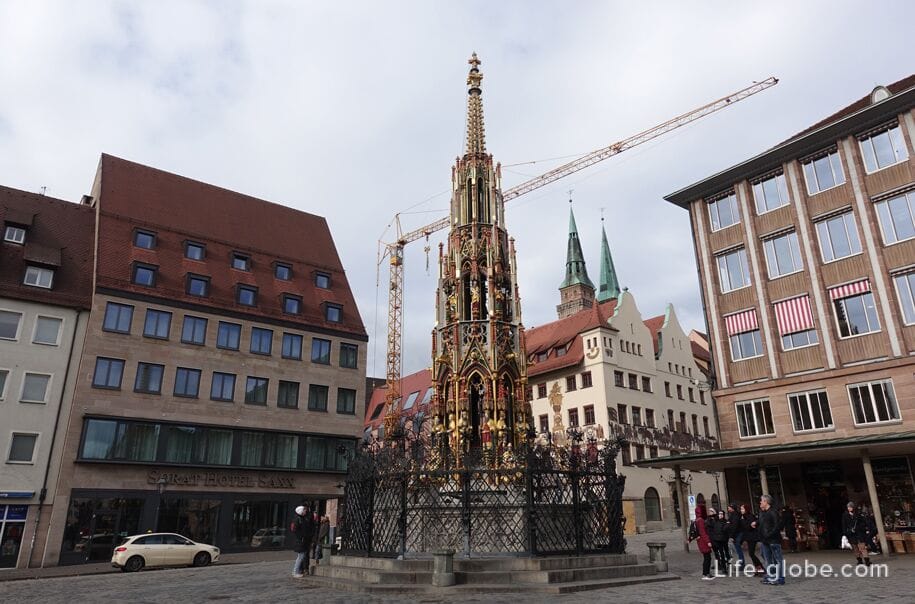
- The Church of the Virgin Mary or Frauenkirche, which is the main dominant of the square and was built as an imperial court chapel and a hall church building from 1352 to 1362 on the initiative of Emperor Charles IV.
The powerful exterior Gothic appearance of the church immediately catches the eye.
In the upper part of the facade there is an art clock with moving figures. The Christmas market opens annually on the balcony with colorful figures. Every lunch break at 12 o'clock in the afternoon, the figures on the balcony "walk" - seven electors who have the right to elect emperors pay tribute to the Roman-German emperor Charles IV.
The interior of the Frauenkirche has three naves separated by tall columns.
The interior is dominated by the organ and the main altar, as well as numerous preserved works of art, including from the Middle Ages. More about the Frauenkirche...
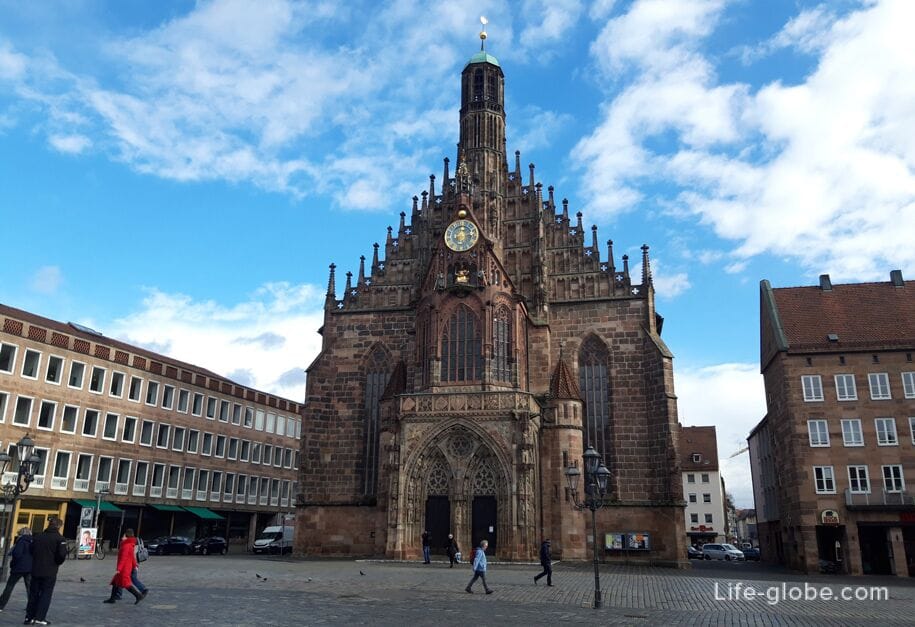

- the ensemble of Nuremberg Town Halls, consisting of the Old Town Hall and the New Town Hall.
The Old Town Hall (Altes Rathaus) is one of the most important buildings of the city, where offices and authorities have been located since the Middle Ages.
The construction of the Old Town Hall took place in several stages and also included reconstruction and expansion.
Today's architectural ensemble of the Old Town Hall consists of two parts: the oldest part of the Town Hall - Gothic, built since the 14th century (between 1332 and 1340), and later, made in the style of the Italian Renaissance - built in the 17th century.
In the basements of the Old Town Hall there is a museum of medieval dungeons (Mittelalterliche Lochgefängnisse), which consists of a historical dungeon prison, the cells of which have been used since the 14th century for interrogations and detention of prisoners before the execution of sentences.
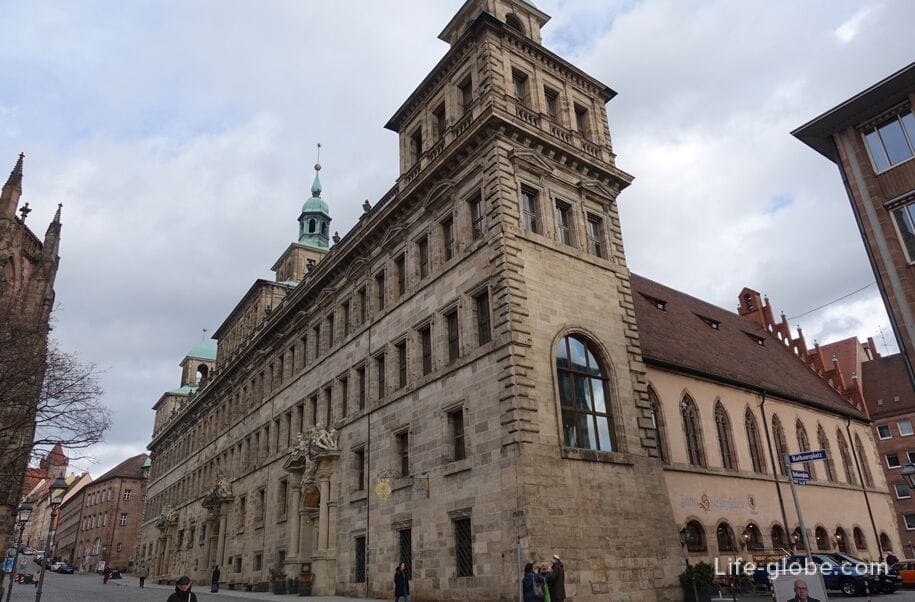
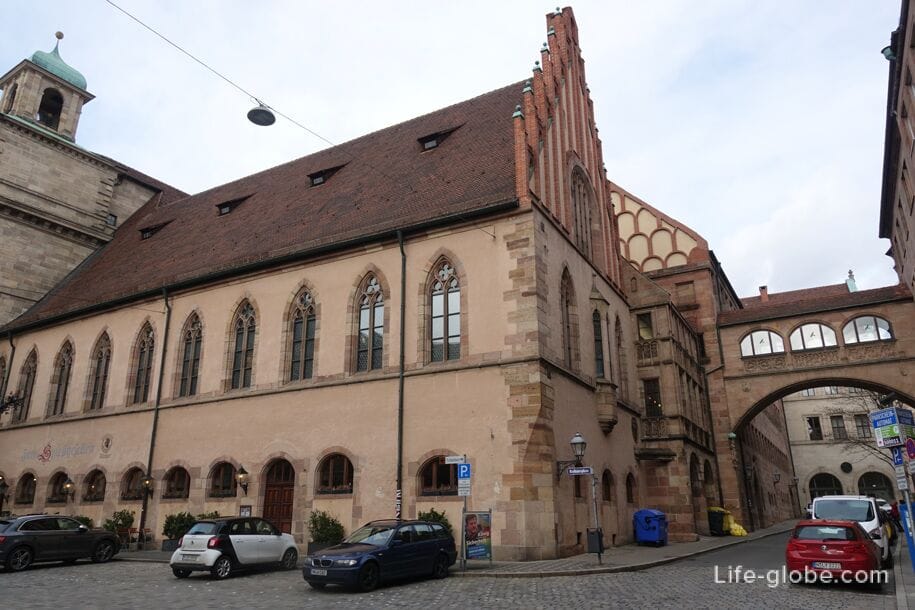
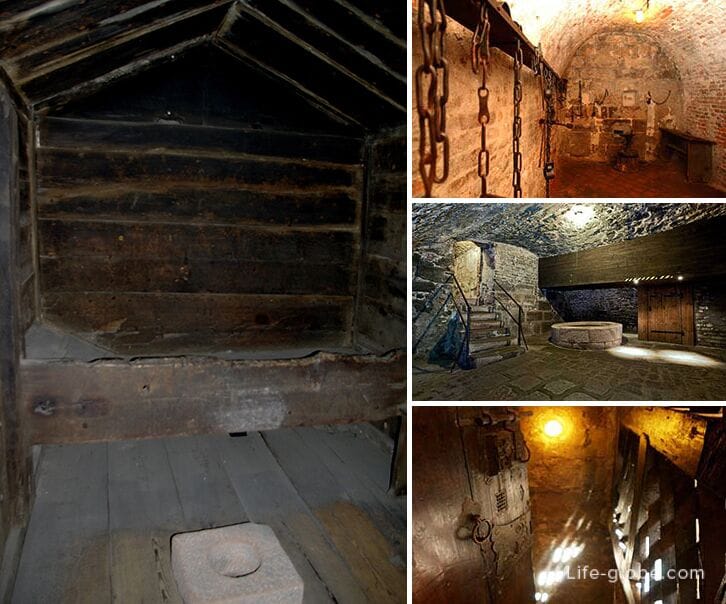
The New Town Hall (Neues Rathaus) is a detached building located on the south side of the Old Town Hall.
The main facade of the New Town Hall faces the north side of the Market Square.
The buildings between the then existing Town Hall (today the Old Town Hall) and the northern end of the main market were destroyed during World War II. In 1951, architect Kurt Schneckendorf designed a New Town Hall in their place, which is also known as Schneckendorf-Bau (Schneckendorf-Bau).
The construction of the town hall took place from 1954 to 1956. More about the town halls and the museum...
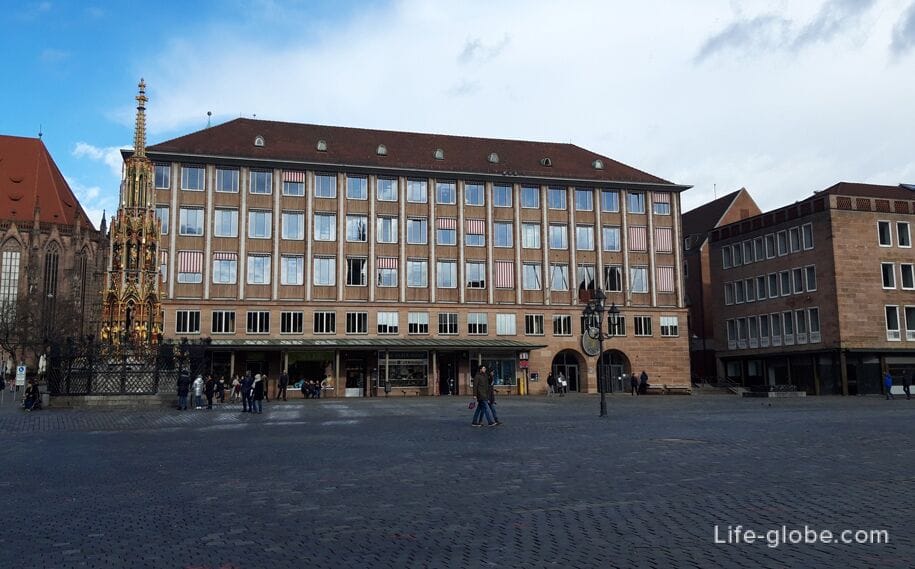
There are many attractive streets in the old town of Nuremberg, the most memorable of which are
The ensemble of the old town on Kremergassen (Krämergassen, Untere Krämersgasse) is the best preserved parts of the modern old town with artisan houses and stone buildings. The oldest house dates back to 1395.
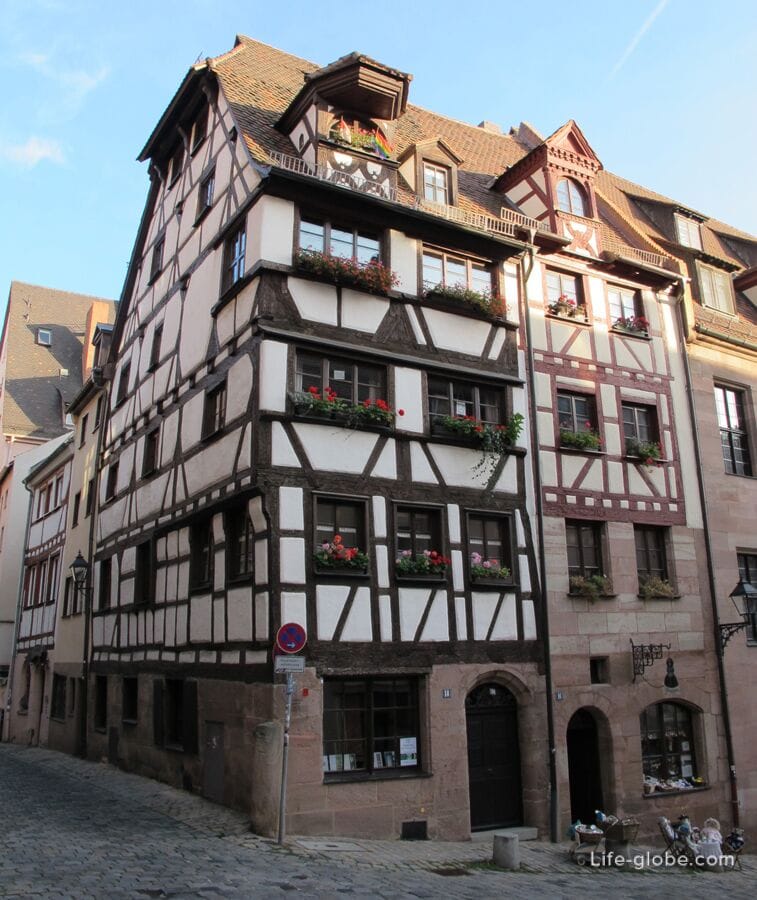
Preserved medieval artisan houses (Handwerkerhäuschen) located along the alley Am Ölberg, which runs at the foot of the rocky mountain with the Nuremberg fortress.
Back in the 11th century, the first settlements for castle craftsmen, staff and merchants were founded south of the castle. This was the starting point for the development of the city of Nuremberg.
Artisans' houses were built as small one-storey residential and workshop premises, sometimes with one or two rooms. Later they were enlarged, but their medieval essence was preserved. The original thatched roofs were banned at an early stage due to the risk of fire. Only a few of these narrow two-storey houses survived the bombing during the Second World War.
This lane also houses the oldest wooden building in Nuremberg, dating back to 1338.
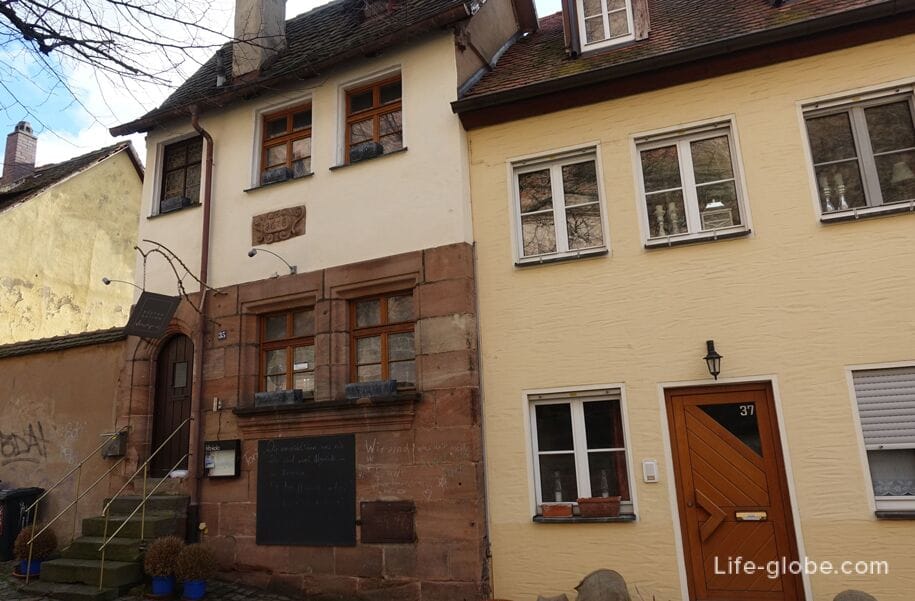

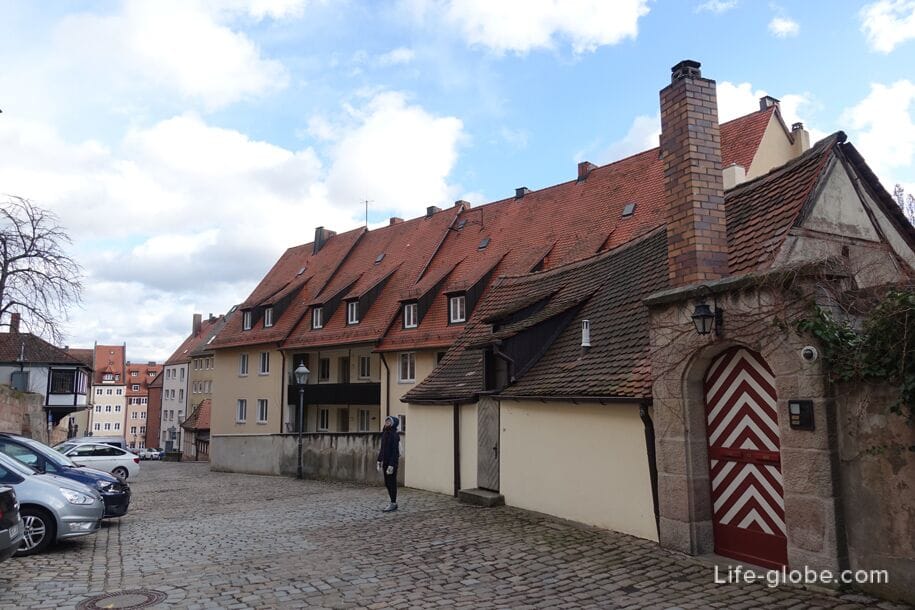
Weißgerbergasse is one of the most beautiful streets in Nuremberg, along which there are historical buildings, including half-timbered houses.
The name of the street comes from white tanners (Weißgerbern) who lived and worked in houses on the street in the Middle Ages.
More than twenty medieval artisan houses survived during the Second World War. Subsequently, they were carefully restored.
Thus, today Weissgerbergasse Street reflects a part of historical Nuremberg. And the buildings along the street are the largest architectural ensemble of medieval, and mainly half-timbered houses in Nuremberg. More about Weissgerbergasse street...
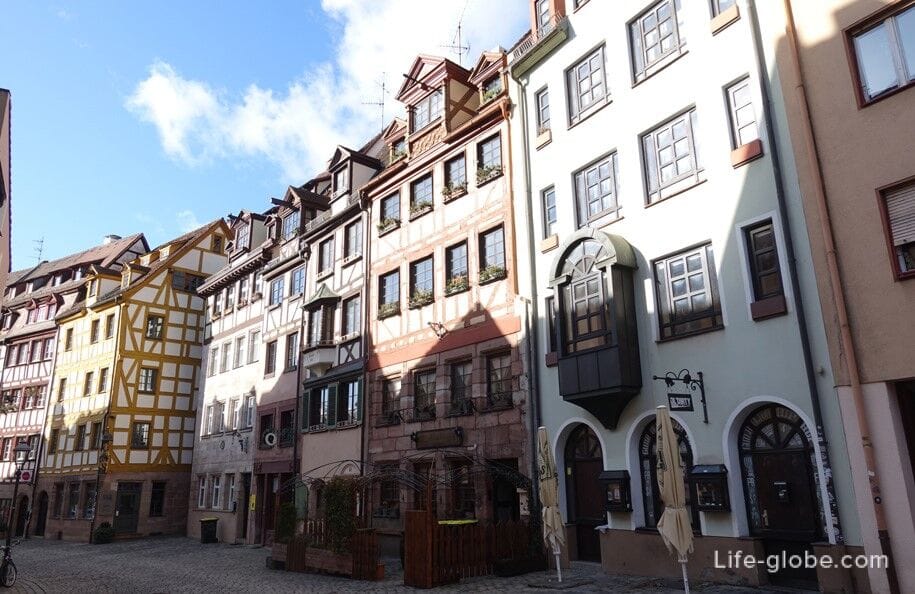
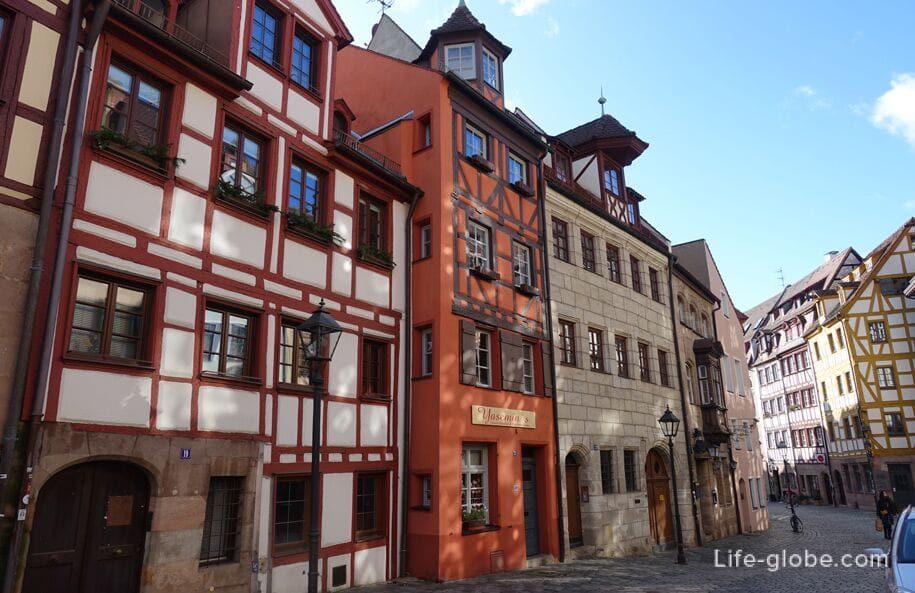
Albrecht Dürer Street (Albrecht-Dürer-Straße / Albrecht-Dürer-Strasse), named after the German painter, engraver and graphic artist Albrecht Dürer (1471-1528), who is considered the greatest artist of the Renaissance period.
Albrecht Durer and his family lived and worked in one of the houses on the street from 1509 until his death in 1528.
Today, this historic house, restored after the destruction during the Second World War, is an architectural monument and the Albrecht Dürer Museum (Albrecht-Dürer-Haus / Albrecht-Dürer-House) is located within its walls.
Address of the Durer House-Museum: Albrecht-Dürer-Straße, 39.
Museum website: duererhaus. More about the Albrecht Durer House Museum...


Durer Street itself is very picturesque. Along the cobblestone and rather narrow street, buildings are located close to each other, some of which are historical (now restored), several of which are half-timbered.
The buildings are notable for bay windows, arched windows and doorways, as well as mansard pitched roofs.
Apartments, offices and shops are located in the houses, there are several cafes and restaurants. More about Albrecht Durer Street...
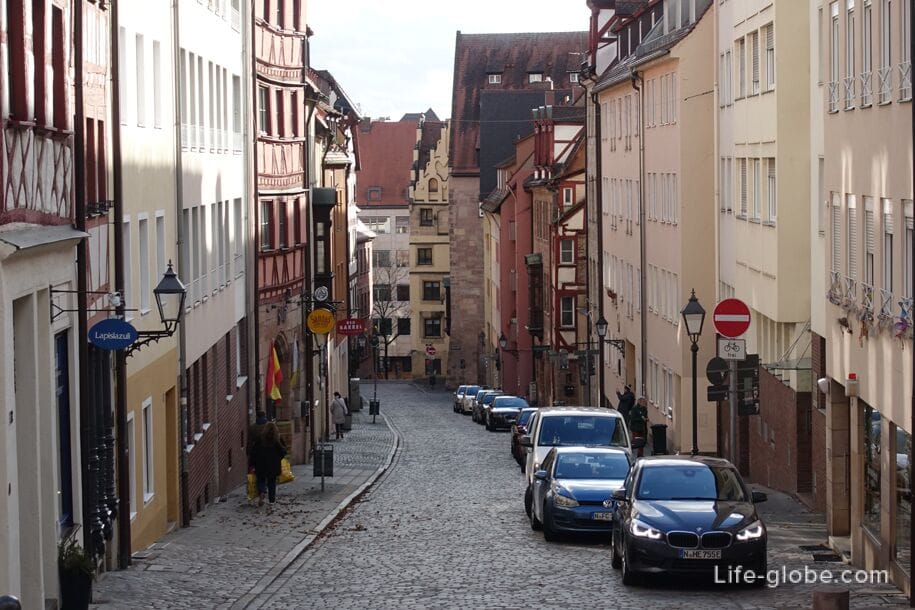
Human Rights Street or Human Rights Road (Straße der Menschenrechte), which is a monument in the form of a monumental sculptural composition located outdoors on Kartäusergasse Street.
On the street, the entrance three-arched gates and a sculptural composition dedicated to the "Universal Declaration of Human Rights" are noteworthy and, according to the Nuremberg Human Rights Office, is "both an accusation of the crimes of the National Socialists and a reminder that human rights are still massively violated in many countries of the world." Learn more about Human Rights Street...
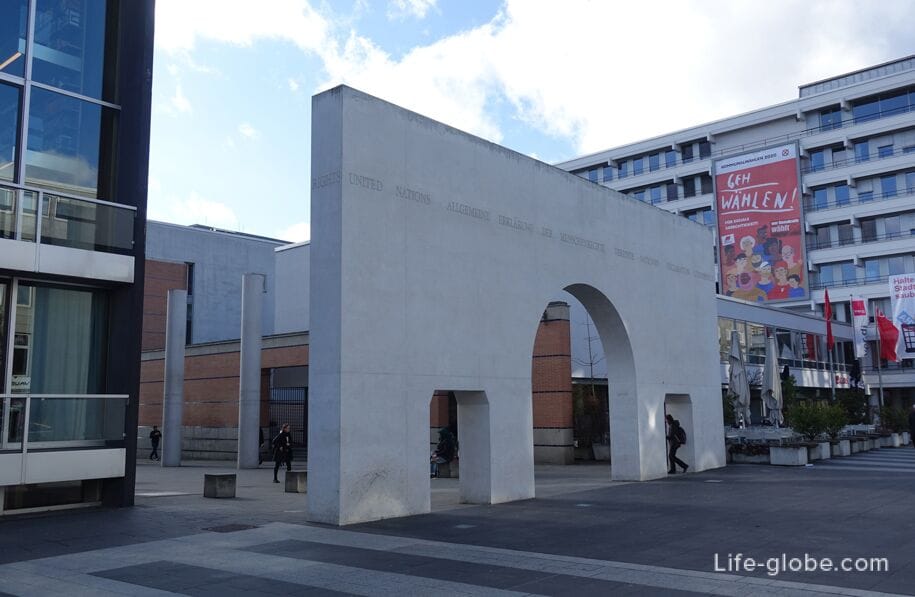
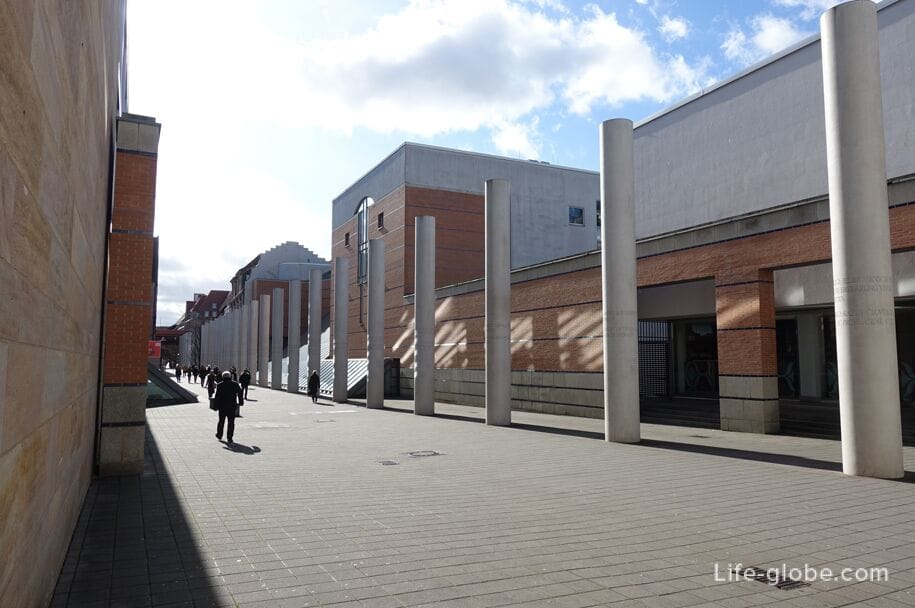
The eastern side of Human Rights Street is occupied by buildingsThe German National Museum (Germanisches Nationalmuseum) is the largest museum of the cultural history of German-speaking regions in Germany.
The museum's collections showcase the history, culture and art of the regions where German is spoken or was once spoken, from prehistoric times to the present day.
The buildings of the museum represent an ensemble, part of which forms the former Carthusian monastery, and part - more modern buildings.
The museum's website: gnm.de . More about the German National Museum...
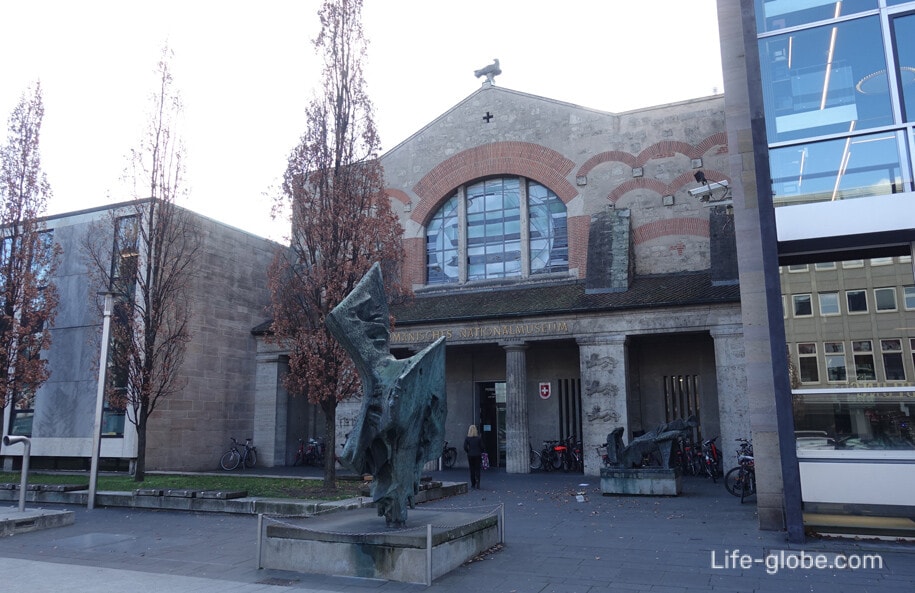

The Nuremberg Red Light Street (Frauentormauer) runs along the western part of the inner city wall of the old city.
There is nothing particularly remarkable on the street. Girls can be seen in the windows of rooms on the first floors of buildings.
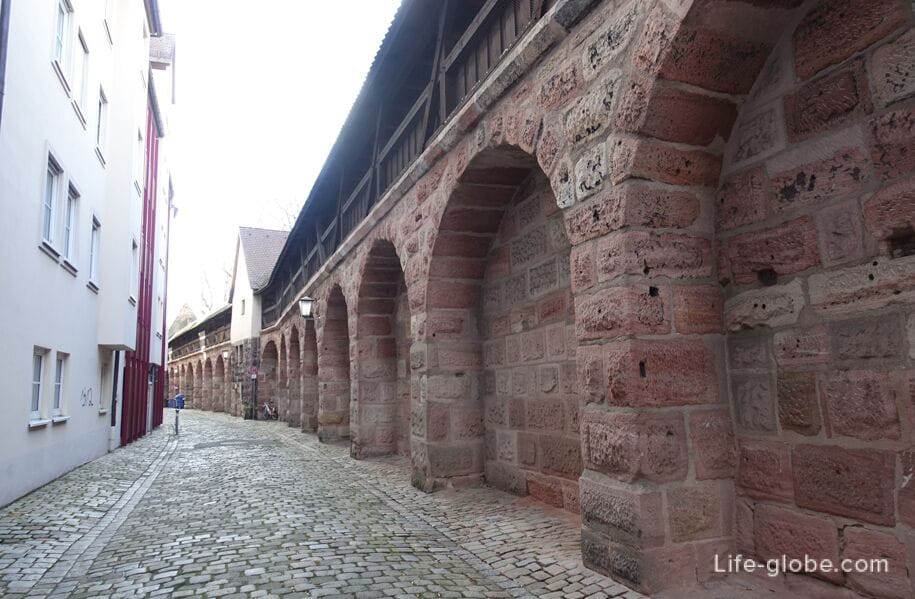
The Artisans' Yard or Craft Yard (Handwerkerhof Nürnberg / Handwerkerhof) is a remarkable corner in Nuremberg, located on the southeastern outskirts of the old town, opposite the Central Railway Station (Nürnberg Central Station).
The characteristic structures of the Craft Yard are small buildings with imitation half-timbered facades.
Craft and souvenir shops, shops, cafes and restaurants are located in the houses, which offer such specialties as: Nuremberg sausages, Franconian beer and specialty wines, Nuremberg gingerbread, as well as wooden and tin toys, local souvenirs and other goods, including handmade. Learn more about the Craft Yard...
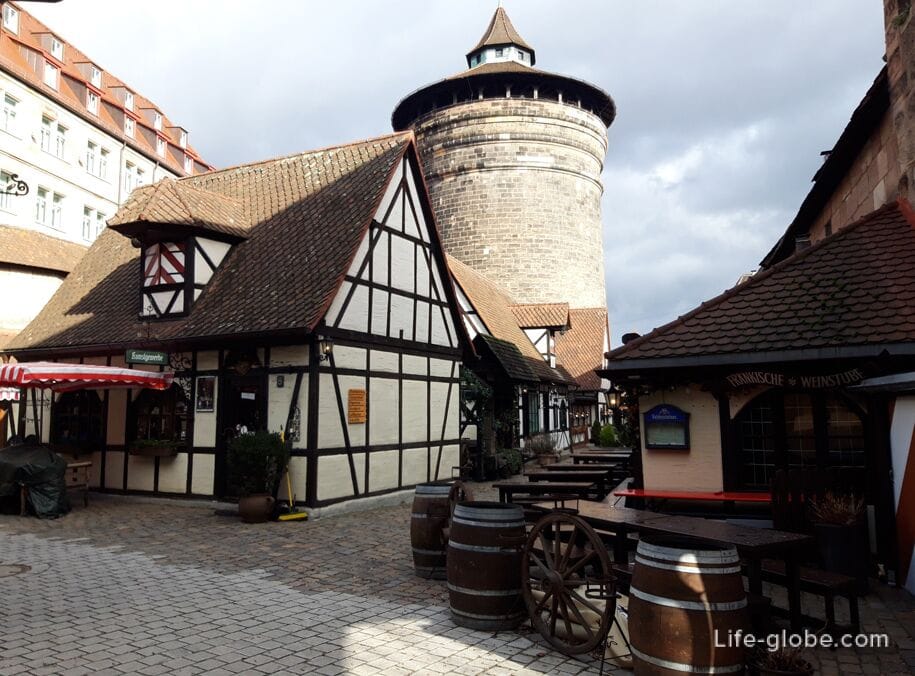

The Kunsthalle building is an art gallery in Nuremberg.
The gallery was opened in 1967 as a place to showcase international contemporary art. The museum building was built in 1912 according to the plans of the architect Otto Seegy as an exhibition hall "Kunstausstellungshalle am Marientor".
Today, the museum organizes exhibitions of contemporary and international artists.
Address of the Kunsthalle: Lorenzer Str., 32.
Museum website: kunsthalle.

The church of St. Martha (Marthakirche) dates back to the 14th century and has a Gothic style. There is an organ inside.
The hidden location of the church is noteworthy - in the gap between two houses.
Services and concerts are held in the church.
Church address: 79 Königstraße.
Website: stmartha.
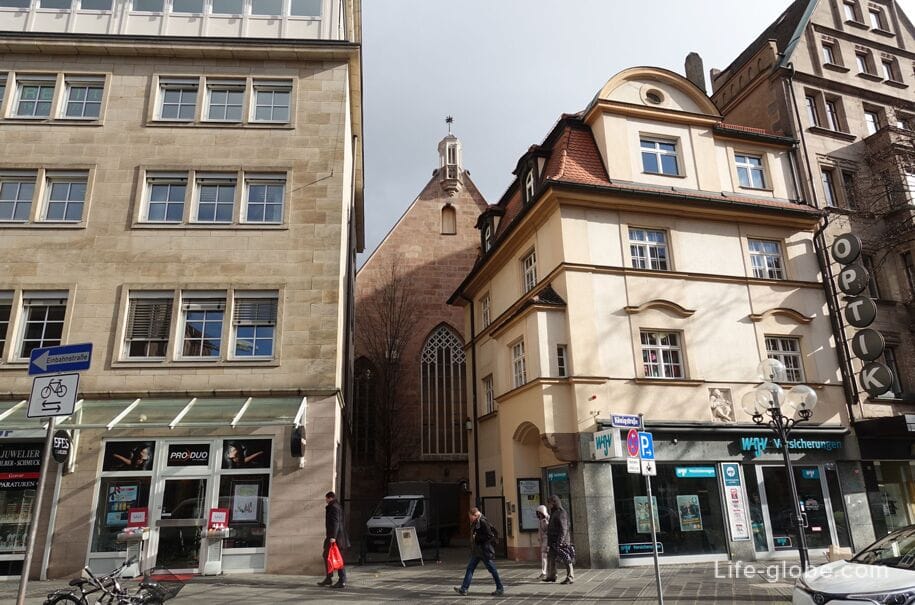
The Church of St. Clara (Offene Kirche St. Klara / St. Claire) or Klarakirche (Klarakirche) is a Roman Catholic church, which is one of the oldest preserved sacred buildings in Nuremberg.
The construction of the Romanesque-style church was started in 1270. The consecration took place in 1274.
Since 1996, St. Clare's Church has been an open church without a parish with a wide range of spiritual and cultural offerings and events.
Today, the architecture of St. Clare's Church appears to be mainly a Gothic building with few Romanesque elements - the arch of the main portal, the remains of the cornice, individual Romanesque arched windows.
Church address: 64 Königstraße.
Website: st-klara-nuernberg. More about St. Clare's Church...

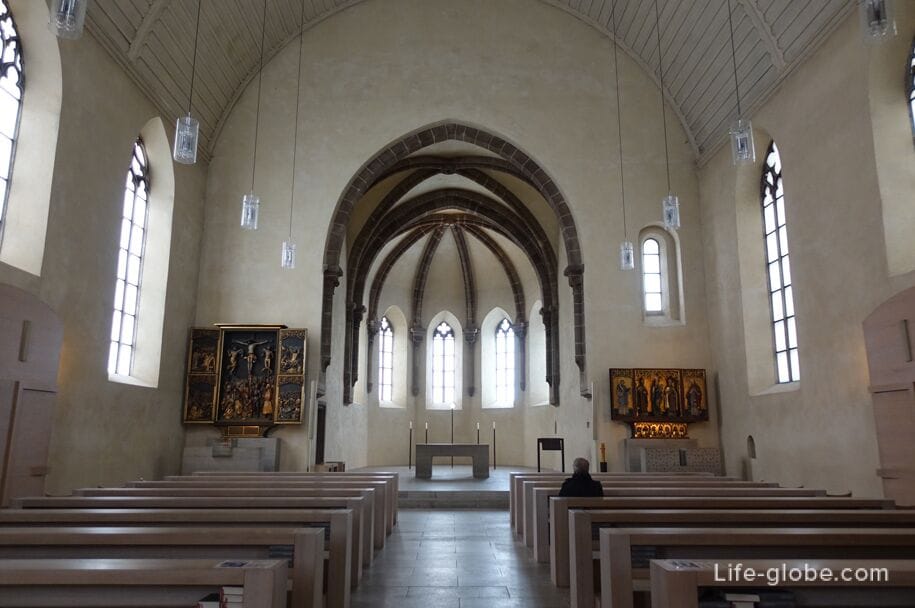
The Customs Chamber (Mauthalle, Mauthalle) is one of the most important buildings in "medieval Nuremberg".
The building was built in 1498-1502 by architect Hans Beheim the Elder. It was the largest granary in the city.
In 1571-1572, the imperial city customs and weighing office moved into the building, the basement of which served as a wine shop "Herrenkeller". The name "Mauthalle" was given to the building in the 19th century, when it was used as the main customs house.
In 1898, the building was converted into a commercial building. The basement has been used for gastronomic purposes since 1929, and for decades it housed a traditional Franconian restaurant, beer and wine bar.
After the building was damaged during the war, it was rebuilt in a simplified form from 1951 to 1953 and is now used as a commercial building.
The five-story gable roof of the building with two six-story cores is placed on a three-story sandstone building. The eastern side of the building is decorated with a pointed arched portal with the image of the imperial eagle and the coat of arms of the city. The basement is a three-nave vault of the hall, supported by columns.
The building is located on the north side of An der Mauthalle Square.
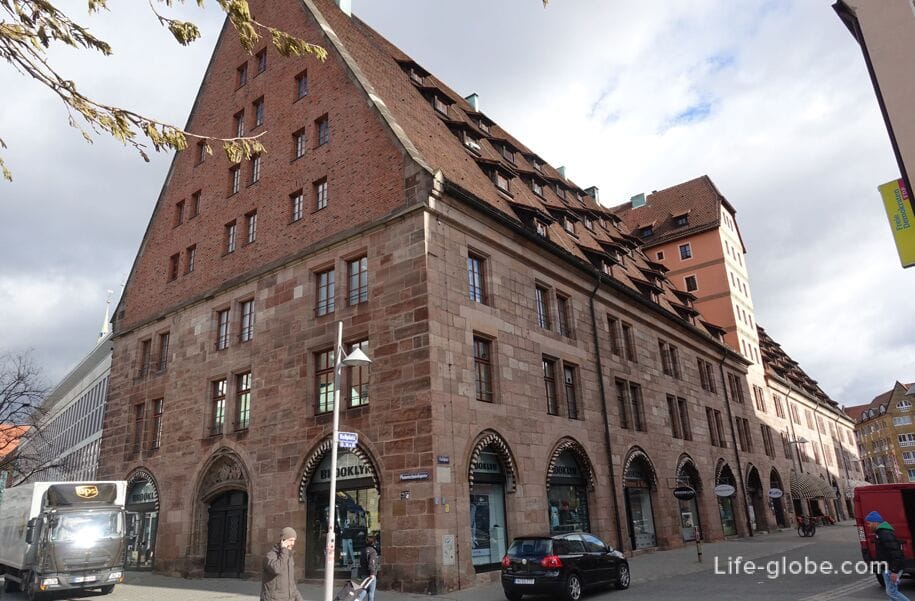
The Tseykhhouse is an ancient armory, which was intended for storing weapons and military ammunition, as well as food for military personnel. It was built of hewn stone and was used for its intended purpose from about the middle of the 16th century.
Most of the building burned down before the Second World War, and only the front part of the Zeichhaus was preserved in its original form. After the Second World War, the building was partially restored.
Building address: Pfannenschmiedsgasse, 24.

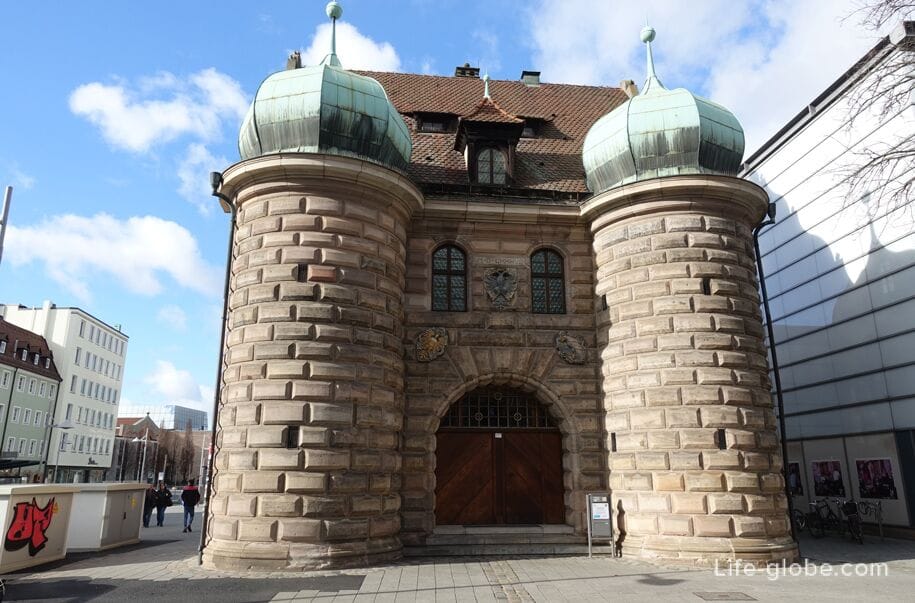
St. Lawrence Church (Lorenzkirche / Lorenzkirche) is one of the first churches in Germany to become Lutheran (since 1529).
The construction of the church took place in the period, presumably between 1243 and 1315, on the site of a former chapel in the Romanesque style. Subsequently, the church was expanded.
Today, the Gothic Lorenzkirche is one of the most outstanding buildings in Nuremberg.
The interior of the three-nave church impresses with its rigor and abundance of details. Powerful columns with arched ceilings complement the overall Gothic ensemble.
Church address: Lorenzer Platz, 1.
Website: lorenzkirche. More about the Lorenz Church...
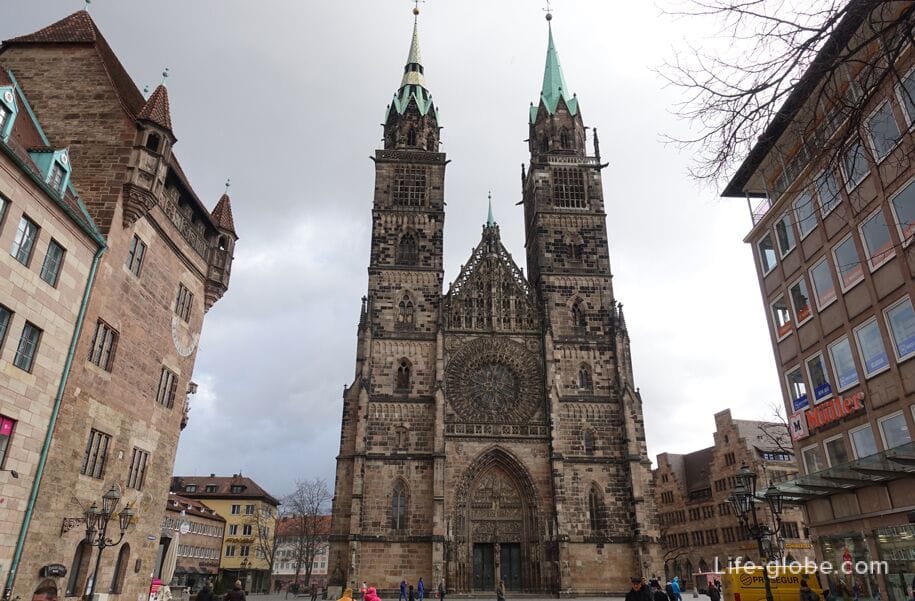
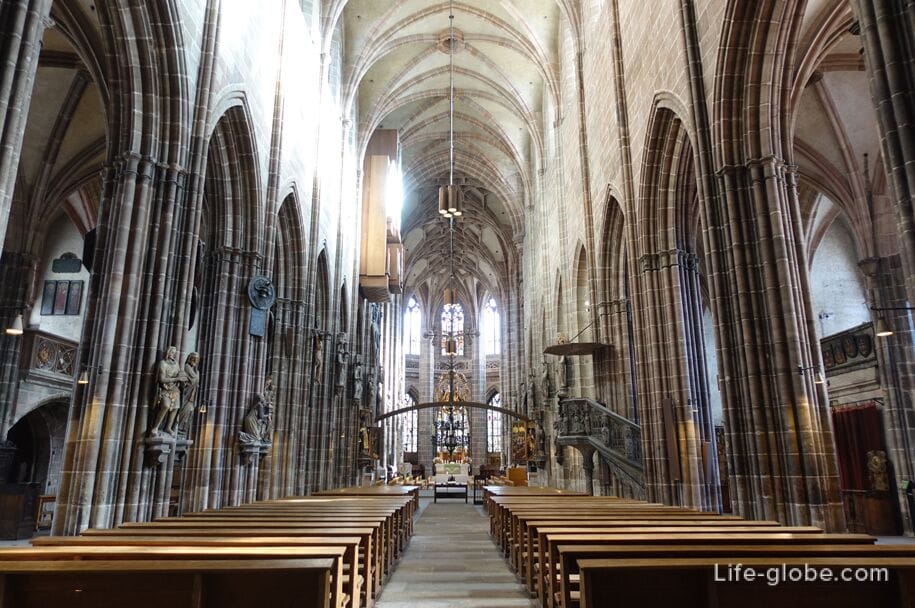
Next to the Church of St. Lawrence are notable: the pastoral house of the church (Lorenzkirche Pfarrhof) and the fountain of Virtues (Tugendbrunnen / Tugendbrunnen).
The Fountain of Virtues was created in 1585-1589 by the Late Renaissance German sculptor Benedikt Wurzelbauer (Benedikt Wurzelbauer) by order of the City Council of the Free Imperial City of Nuremberg. Initially, the fountain, powered by its own water supply stations, supplied the residents of the old town of Lorenz with water until the central water supply was introduced.
Fountain sculptures represent the seven cardinal virtues: three Christian theological virtues (so-called theology) - faith (the figure with a cross and a chalice), hope (with an anchor) and love (with two children); and four so-called "cardinal virtues" (from the Latin word cardo "rod") - courage or bravery (with the lion), moderation (from a jar), patience (with lamb) and justice (Justice, virtue) - a figure which rises above the other six, depicted with a blindfold, a sword and scales in her hands. A heron holding a stone behind the back of virtue symbolizes vigilance. The sculptural composition also includes six putti with pipes holding the coats of arms of the city of Nuremberg.
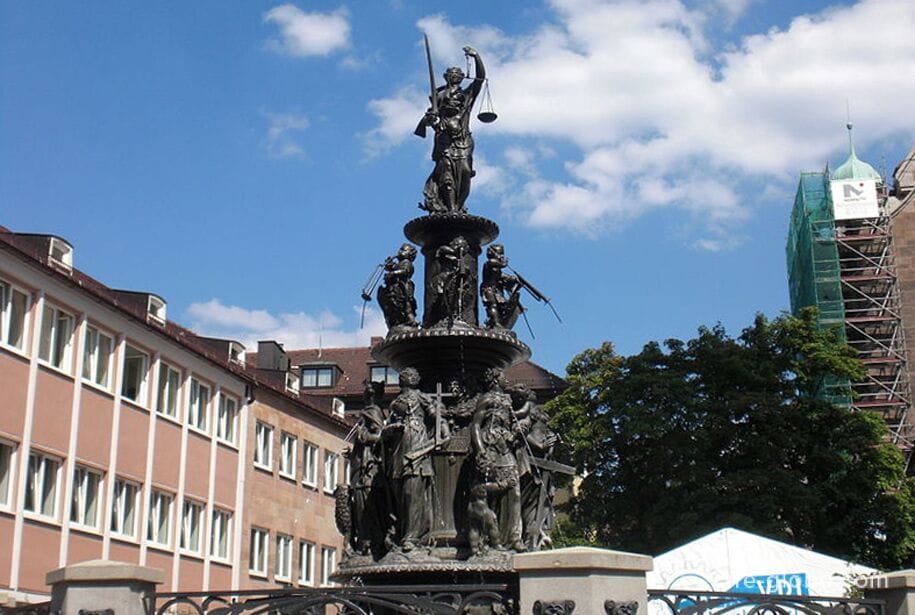
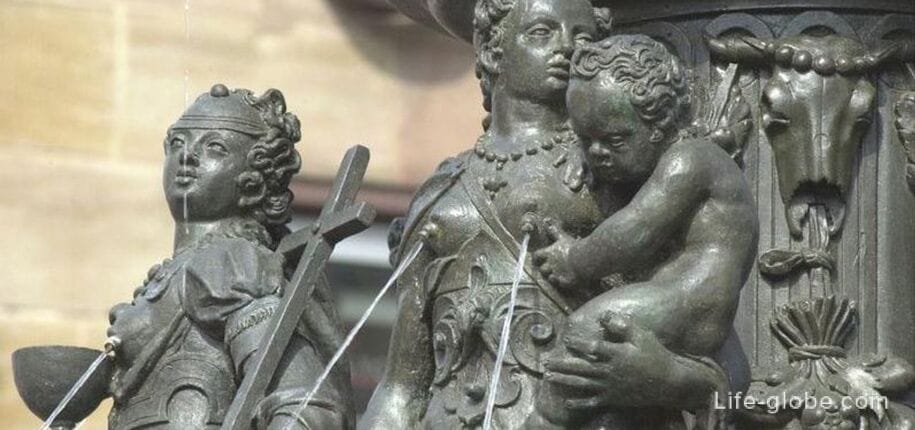
The Nassau House, also known as the Schlusselfelder Foundation House (Schlusselfeldersche Stiftungshaus) is a medieval residential tower, which is the only surviving residential tower in Nuremberg, and is considered one of the few examples of Romanesque architecture in the city.
The Nassau House has a corner location and is built in a row with other buildings. It is made of red sandstone on the model of northern Italian residential towers. It has four floors and a gallery, which is crowned by a high roof.
Address of the house of Nassau: Karolinenstraße, 2. More about the House of Nassau...
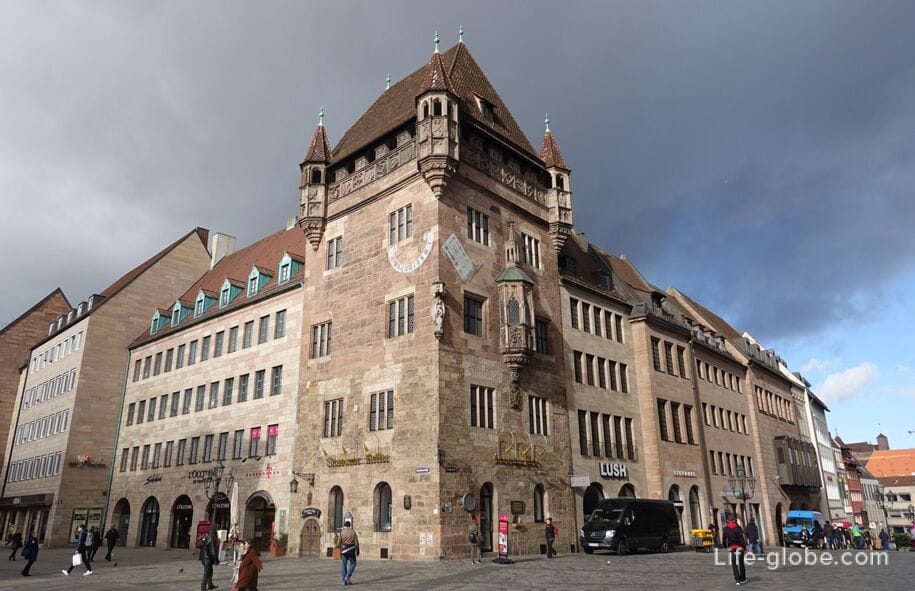
The ruins of the Church of St. Catherine (Katharinenkloster) are part of the ruins of the former convent of the Dominican Order in Nuremberg, famous for its medieval library.
The monastery was founded at the end of the 13th century. The monastery church was consecrated in 1297.
After the Reformation, the monastery lost its functions and was closed in 1596. Then it was used for various purposes.
In 1945, the monastery was destroyed and today the ruins of the former monastery church of St. Catherine, due to the special acoustics, are used for open-air concerts.
The address of the ruins of the church: Am Katharinenkloster, 6.
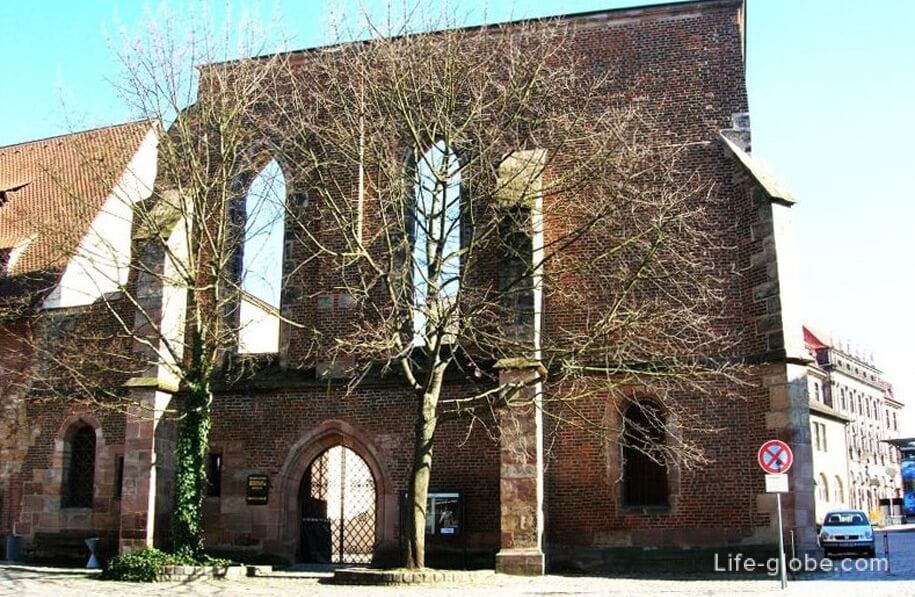
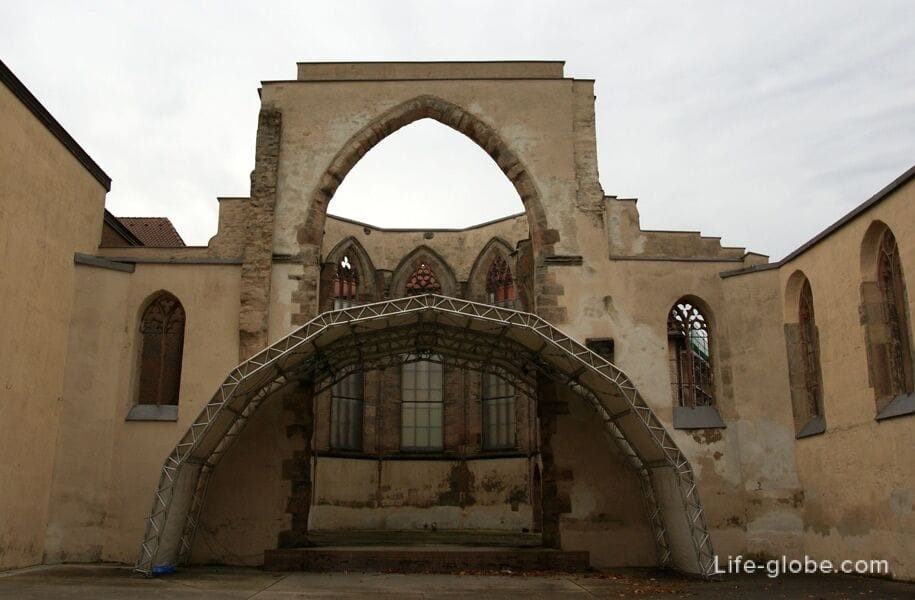
The fountain "Marriage Carousel" (Ehekarussell / Ehebrunnen) is a large-scale architectural fountain designed by the German sculptor Jurgen Weber on behalf of the city of Nuremberg in the period from 1977 to 1981 and built in 1984.
The large sculptural composition of the fountain, made of bronze and marble, which is placed in the marble bowl of the fountain, represents six sculptural groups dedicated to and illustrating the images of the work of the German Meistersinger and playwright Hans Sachs (16th century) - "Bittersweet Family Life", written for his wife.
The sculptural pedestal depicts Hans Sachs himself, in a dancing pose.
The fountain is located on Ludwigsplatz Square. More about the fountain "Marriage carousel"...
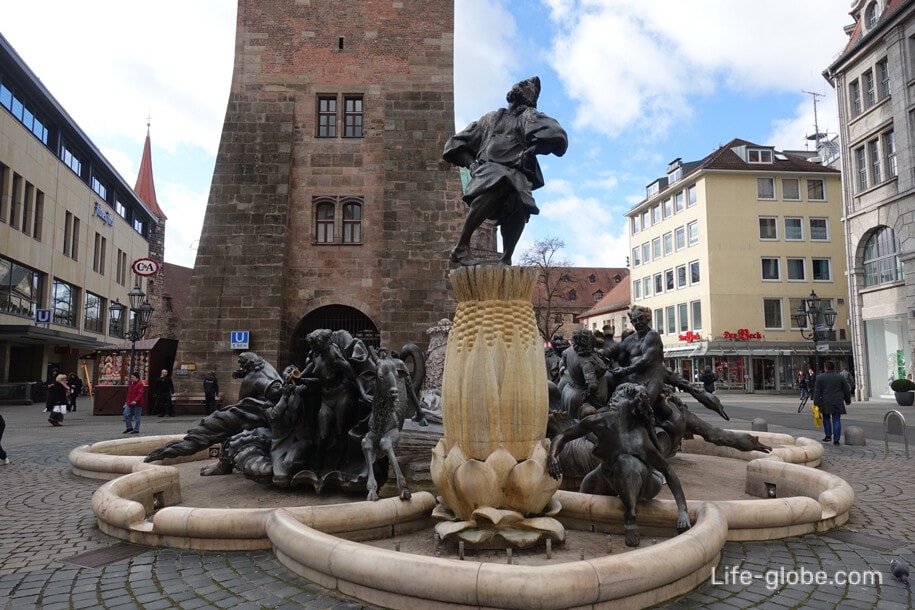
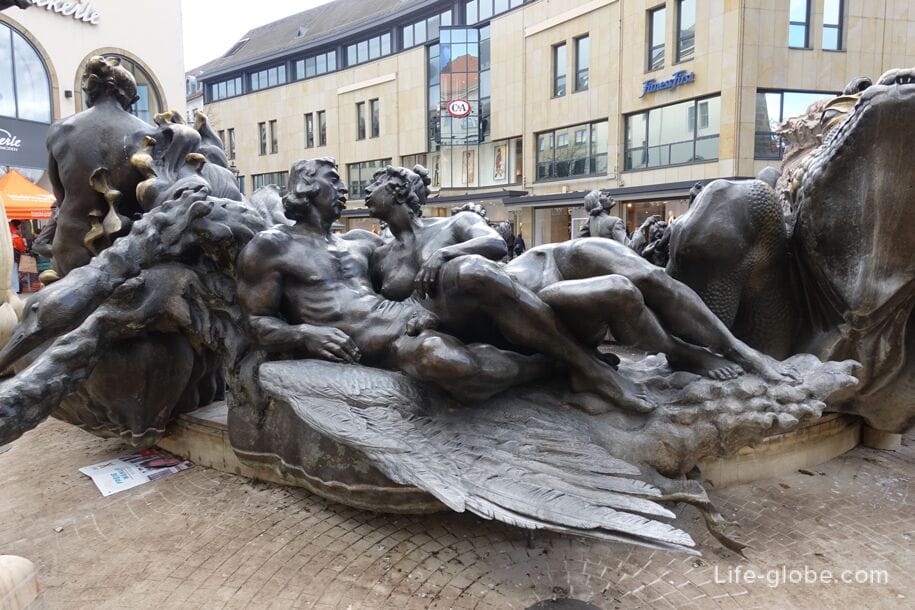
The White Tower (Weißer Turm) is a historical tower that was part of the penultimate city fortifications of Nuremberg, and was also the gateway to the city.
The tower was erected around 1250 and served for the defense of the gate.
The tower is a block structure of brick and sandstone with a pointed archway and alternative niches. There is a barbican on the southwest side of the tower. In the upper parts of the tower, on the south-western and north-eastern sides, there is a clock. On the north-eastern side of the tower, facing the old town, there are coats of arms, including the city of Nuremberg.
The White Tower is located on Ludwigsplatz Square. Learn more about the White Tower...
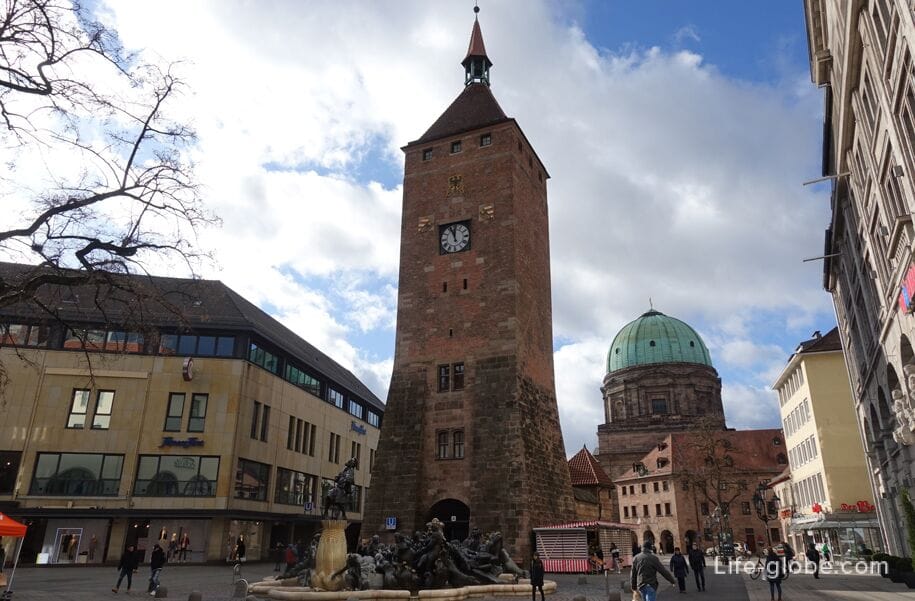
The Church of St. Elizabeth (St. Elisabeth Church / St. Elisaber) or Elisabethkirche (Elisabethkirche) is a Catholic church, which is distinguished by a clear and simple geometry and is one of the few buildings in the Classical style in the center of Nuremberg.
The current church was built between 1785 and 1903.
Today's massive rear church with an impressive dome 50 meters high has a high portal framed by columns with pilasters and pediment.
The interior of the church attracts attention with marble-lined columns with golden pilasters. There is a crypt in the church.
Church address: Jakobsplatz, 7-7a. More about St. Elizabeth's Church...
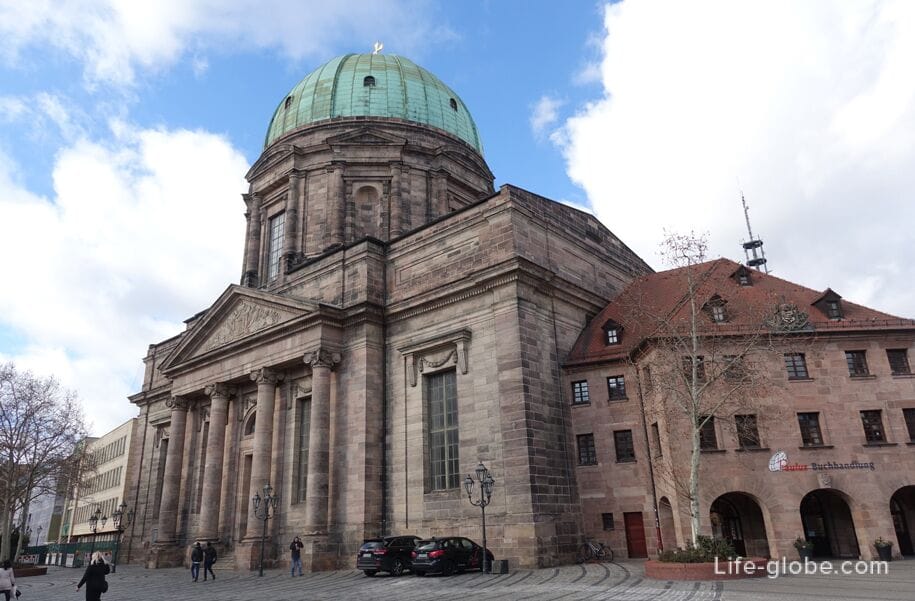
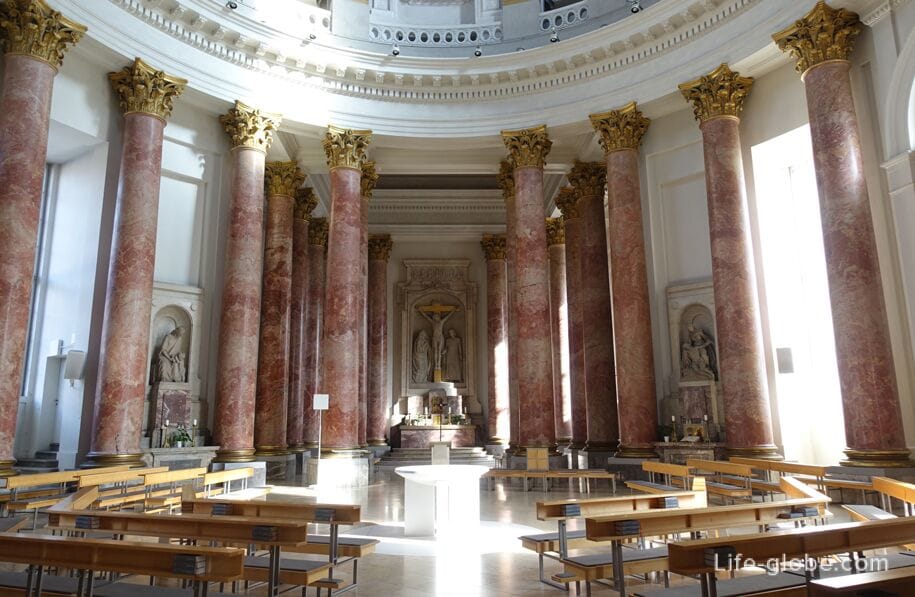
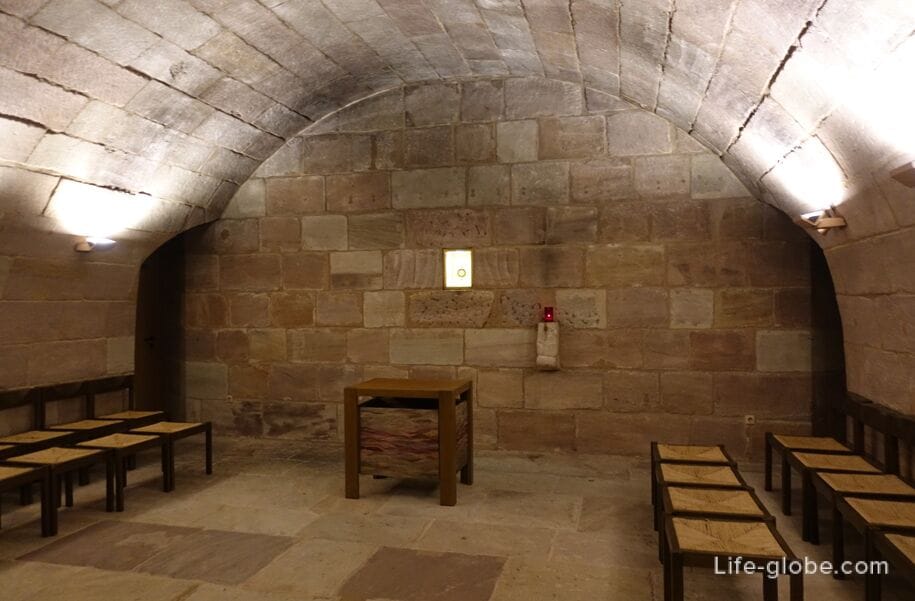
The Church of St. James, or St. Jacob (Kirche St. Jakob / St. Jacob) is an Evangelical Lutheran church built in the 13th century on the site of a small chapel. In the 17th century, a large-scale reconstruction of the shrine was carried out.
The Jacobskirche is a typical structure of the Gothic era with a pointed belfry tower with four bells.
The interior of the one-nave church is simple and strict.
Church address: Jakobsplatz, 1.
Website: jakobskirche-nuernberg. More about St. Jacob's Church...

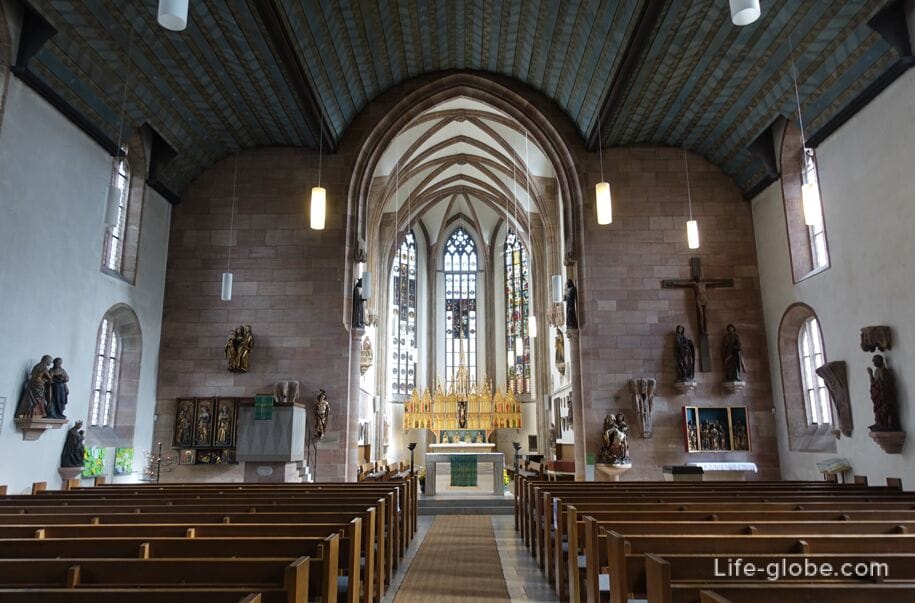
Fat Square (Unschlittplatz) with an ensemble of medieval buildings is one of the important historical attractions of the center of Nuremberg.
After the Second World War (in 1972), several medieval houses on the square that survived the war had to be demolished, but the resistance of the activists of the city prevented the demolition. The houses were restored in the period from 1976 to 1981, and since then their ensemble resembles the former appearance of the square. Learn more about the Fat area...
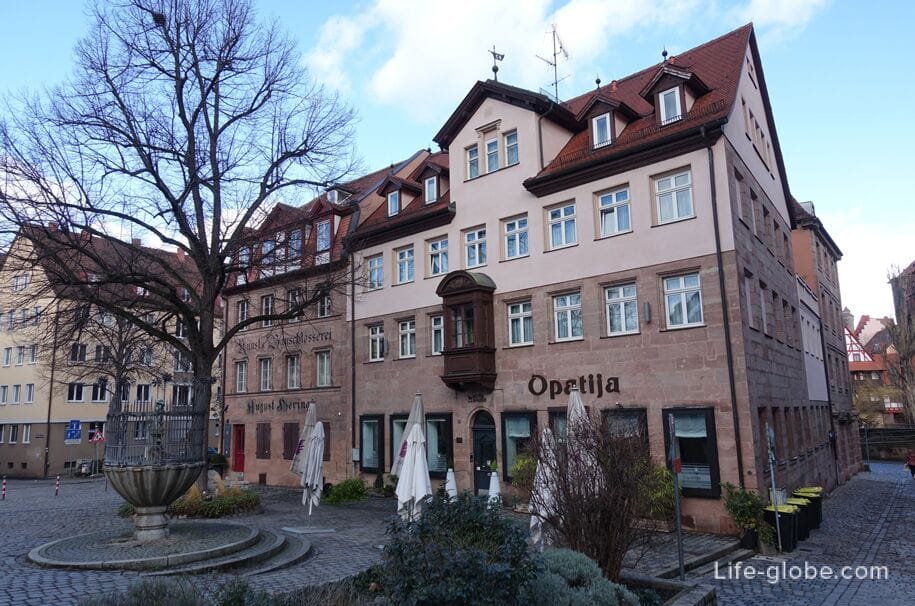
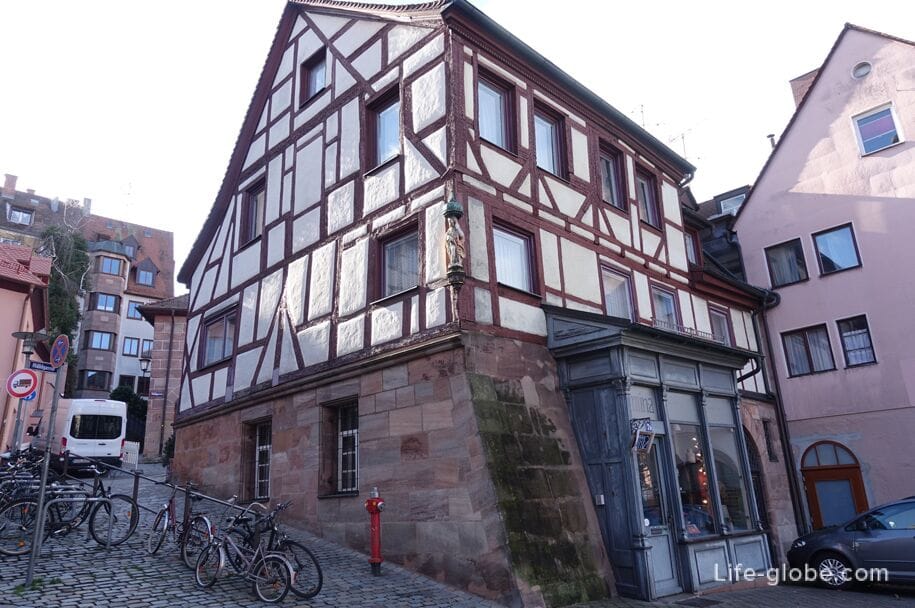
The name of the square "Unschlittplatz", which means "Fat Square" or "Greasy Square", comes from one of the historical buildings located around the square - Fat House or Greasy House (Unschlitthaus / Unschlitthaus).
The building was erected by Hans Beheim the Elder in 1490-1491 as one of the granaries of the city.
Between 1562 and 1835, the building housed the city monopoly authority for the sale of fat (lard). Up until the 19th century, lard was of great importance as a raw material for the manufacture of tallow candles, soap, automobile grease and shoe wax.
Today, the historic building impresses with its massive structure, carefully thought out and perfectly fitting into the overall architecture of the building with a Gothic portal on the south side, an openwork Gothic stepped pediment and an overhanging roof.
The Fat House is located on the eastern edge of the Fat Square, at the address: Obere Wörthstraße, 26. More about the Fat House...

The fountain "Ship of Fools" (Narrenschiffbrunnen) is a well-known fountain in Nuremberg, the peculiarity of which is that, despite the name - "fountain", it has never been such, in the literal sense of the word and purpose, has never been fed with water.
The sculpture of the fountain was created in 1984-1887 by the sculptor Jurgen Weber and cast in two copies. One copy is located in Hameln (Hameln), Germany. The second one was shown in 1987 at an art exhibition in Nuremberg. Philanthropist Kurt Klutentreter bought the sculpture and presented it to the city of Nuremberg.
In 1988, the fountain sculpture "Ship of Fools" was installed on a small artificial hill in the historical center of Nuremberg.
In 1990, Kurt Klutentreter attempted to complete the sculpture as a fountain - "the ship would be a bowl, and water would flow from the figures of a galleon, a crow and a wine glass." But the water supply system was not properly laid and the idea failed, thereby leaving the fountain "Ship of fools" - like fools, without a single drop of water.
The sculpture of the fountain is a picturesque depiction of engravings by Albrecht Durer, which were created based on the famous medieval satirical and didactic poem "The Ship of Fools" ("Das Narrenschiff"), written by Sebastian Brant in 1497.
Addresses of the fountain landmarks: Plobenhofstraße, 1-9 / Spitalgasse, 2. More about the fountain "Ship of fools"...

The Church of St. Sebald (Sebalduskirche / Sebaldkirche) is the oldest parish church in Nuremberg and one of the most prominent church buildings in the city.
The construction of the Late Romanesque basilica with two choirs began in 1225-1230, on the foundation of the walls of the previous church, presumably dedicated to St. Peter.
By 1379, the side aisles of the church were expanded, the towers were raised in the high Gothic style and the altar of the late Gothic hall was built. Two towers were added in the 15th century.
Especially popular is the Schreyer-Landauer Epitaph (Schreyer-Landauer-Epitaph), located near the northeast end of the building.
The interior of the church has three naves separated by powerful columns with arched ceilings.
The interior reflects more than seven centuries of faith and the history of Nuremberg art.
Church address: Winklerstraße,26.
Website: sebalduskirche. More about St. Sebald's Church...

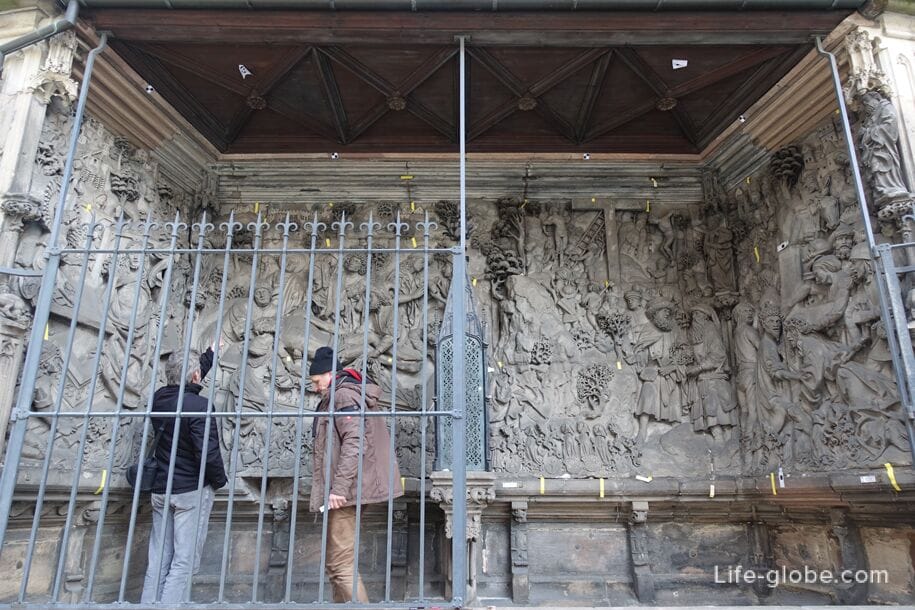
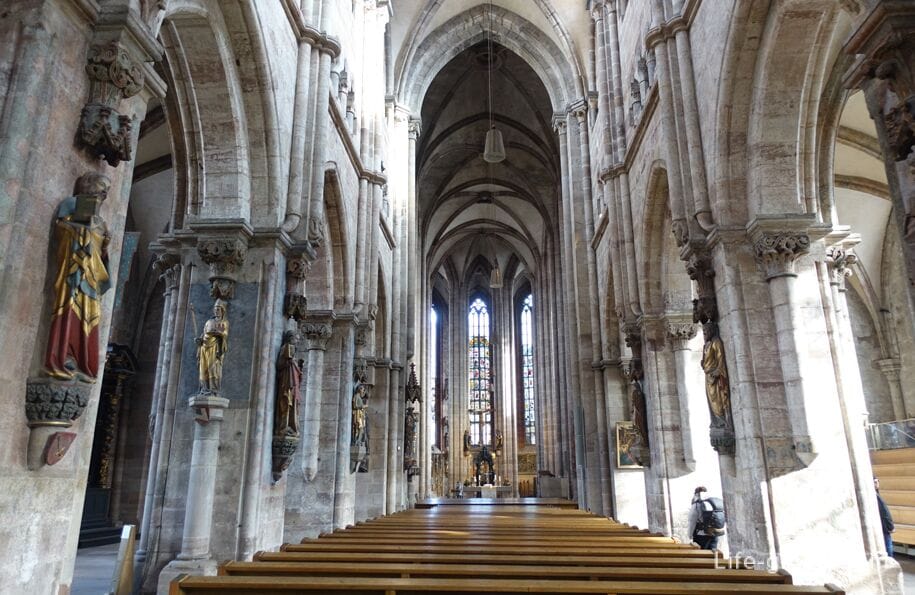
Next to the church of St. Sebald is the pastoral yard of the church (Sebalder Pfarrhof).
The house was built around 1361-1379, and once the clergy of the church lived in it: preachers, deacons and administrators.
The main decoration of the building is a Gothic bay window for the "Chörlein" home altar with scenes from the life of the Virgin Mary. Today it is a copy of 1898-1902, the Gothic original can be seen in the German National Museum.
The courtyard of the house is usually accessible.

Schürstabhaus (Schürstabhaus) is a former patrician house, which is considered one of the most important urban houses in northern Bavaria of the Gothic period.
The building was built around 1270 as two separate houses, which were later merged into one.
The house got its name from the Shurstab family, who owned the house from 1328 to 1478.
The architecture of the house is notable for sculptures, a small portal and a carved bay window in the Nuremberg style. On the southwest corner of the house there is a Gothic sculpture "Mary with the Baby" from 1482, the original of which is kept in the German National Museum.
Today, some rooms in this house can be rented for events.
House address: Albrecht-Dürer-Platz, 4.
Website: schuerstabhaus.
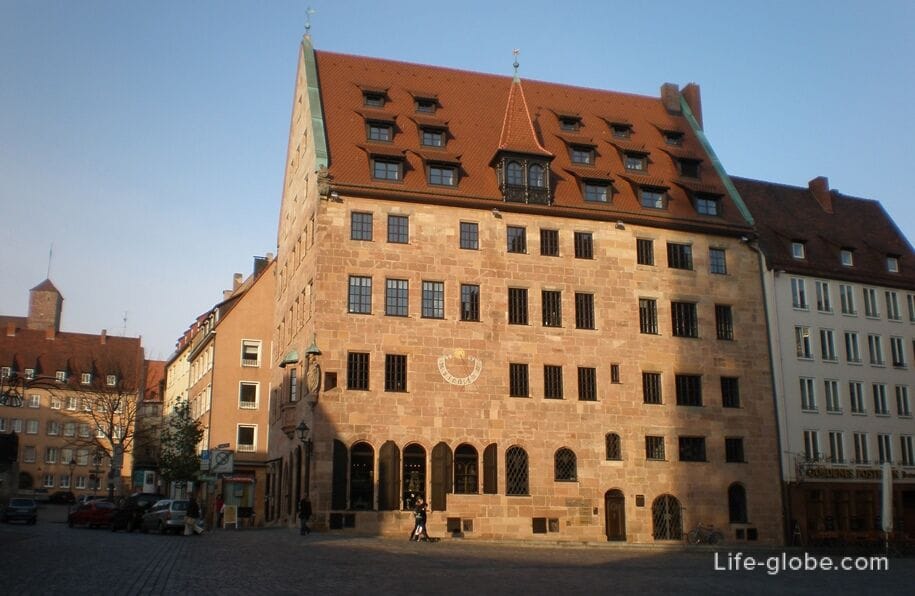
The Fembo House (Fembo-Haus / Fembohaus) is the only large merchant's house of the Late Renaissance preserved in Nuremberg, in the walls of which the Nuremberg City Museum (Stadtmuseum) is now located / Stadtmuseum).
The house was built in the period from 1591 to 1596, presumably according to the plan of Jacob Wolf the Elder on behalf of the Dutch merchant Philip van Oerl, on the site of a previously existing building.
During its history, the house has changed several owners who have made their own changes to the interior of the building. The exterior of the house did not change.
House address: Burgstraße, 15.
Museum website: fembohaus. More about the Fembo House and the Nuremberg City Museum...
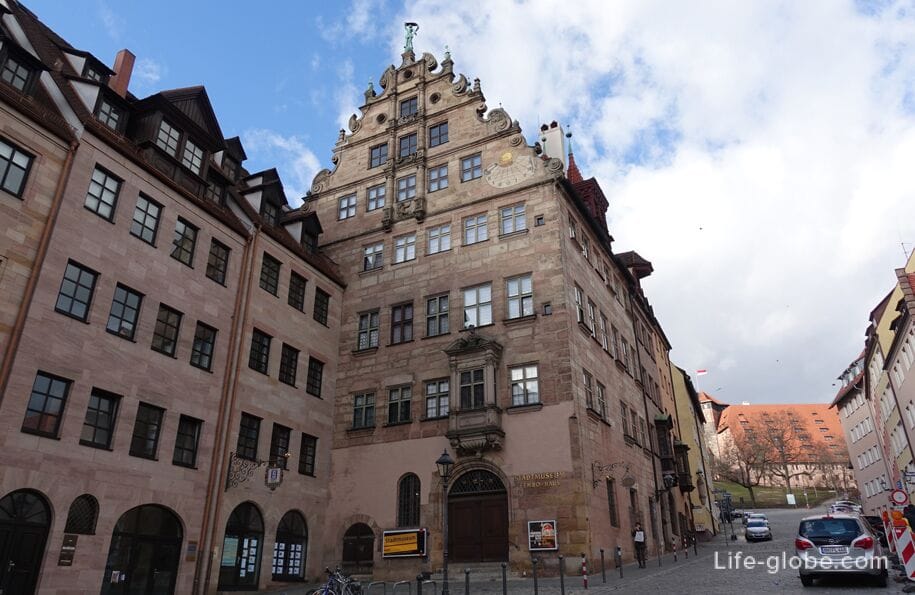
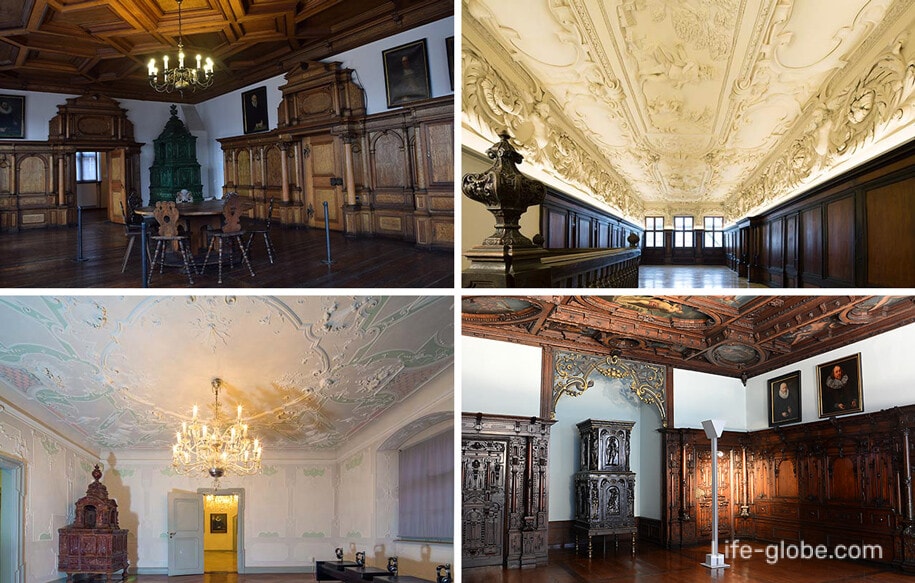
The Hallersches Haus was built in 1517 as an estate for the noble Nuremberg Haller family.
The exterior of the house is notable for the bay window, which was erected around 1720. The stepped pediment with scrolls and turrets is made in the German Renaissance traditions.
Today, the Nuremberg Toy Museum (Spielzeugmuseum) is located in the historic building, which is one of the most famous museums of its kind in the world.
The museum's collection displays the cultural history of toys from ancient times to the present day and contains about 87,000 exhibits, of which only a part can be seen on the museum's exhibition areas.
House address: Karlstraße, 13-15.
Toy Museum website: toy-museum. More about the toy house and museum...

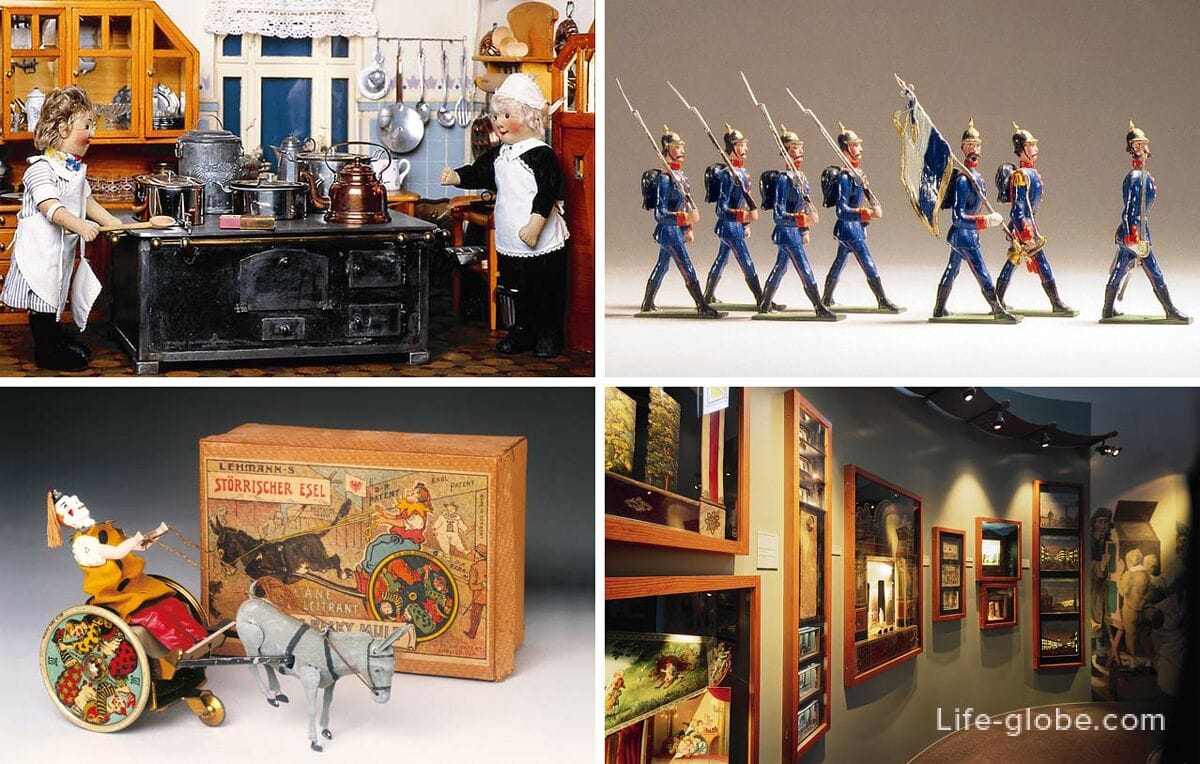
The German Museum of Nuremberg (Deutsches Museum Nürnberg) is the Nuremberg branch The German Museum of Masterpieces of Science and Technology in Munich (Deutsches Museum).
The museum has several thematic exhibitions dedicated to the following topics: work and everyday life, body and soul, system city, system earth and space and time.
The museum is informative and interactive.
Museum address: Augustinerhof, 4.
The museum's website: deutsches-museum.de/nuernberg .
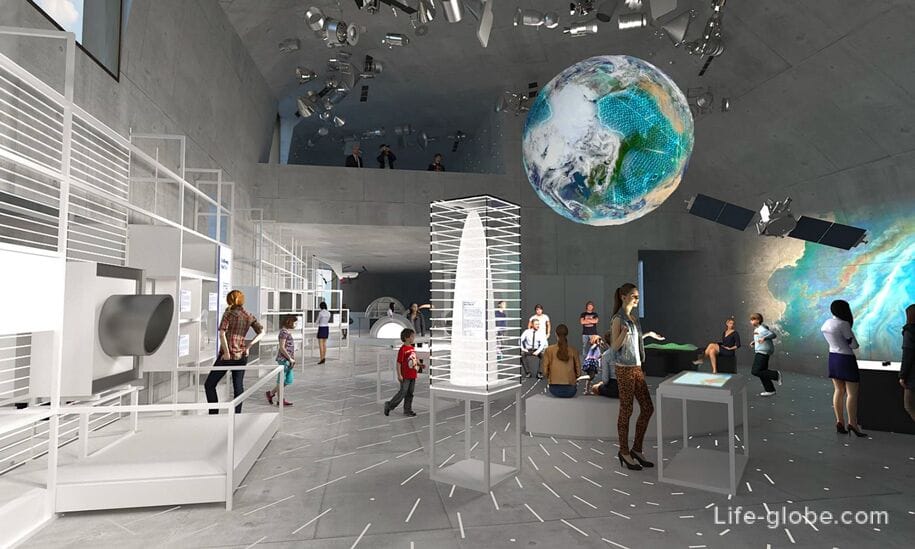
Maximilian Square (Maxplatz / Maksplatz) is an elongated square that originally had a Baroque style, recognizable today only in its infancy.
The Triton Fountain (Tritonbrunnen / Tritonbrunnen) is notable on the square, which is the only Baroque fountain in the old town of Nuremberg.
Also on the square is the classic fountain of Dürer-Pirkheimer (Dürer-Pirkheimer-Brunnen).
Historical buildings surround the square.
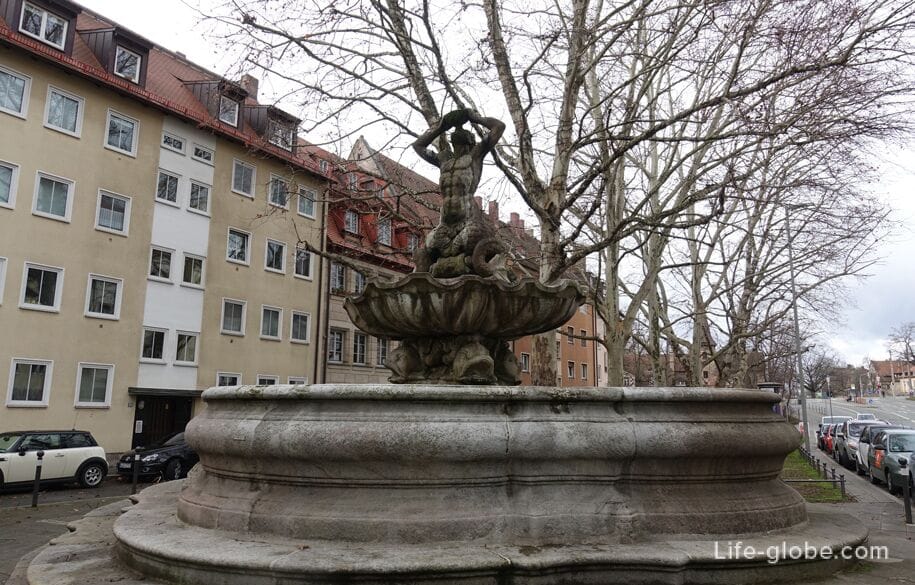

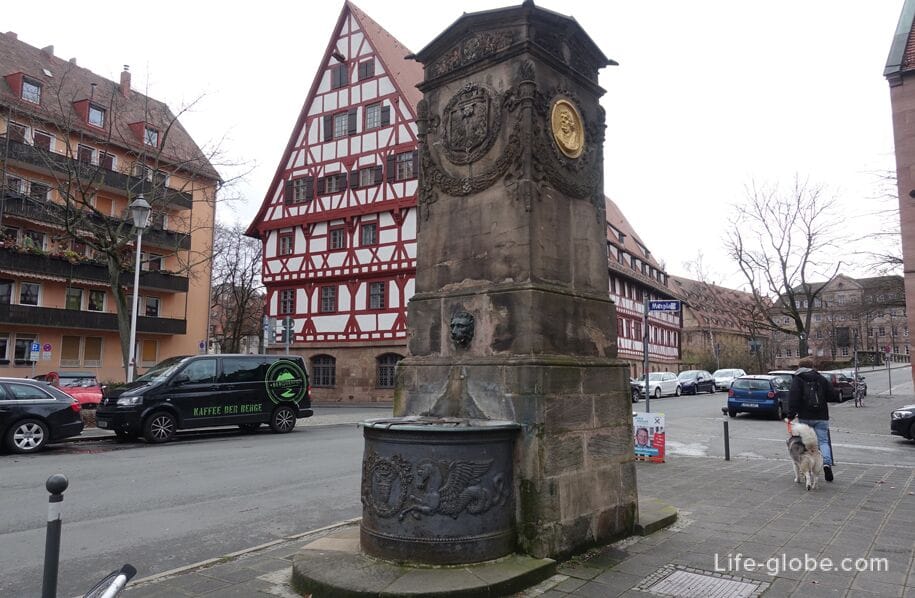
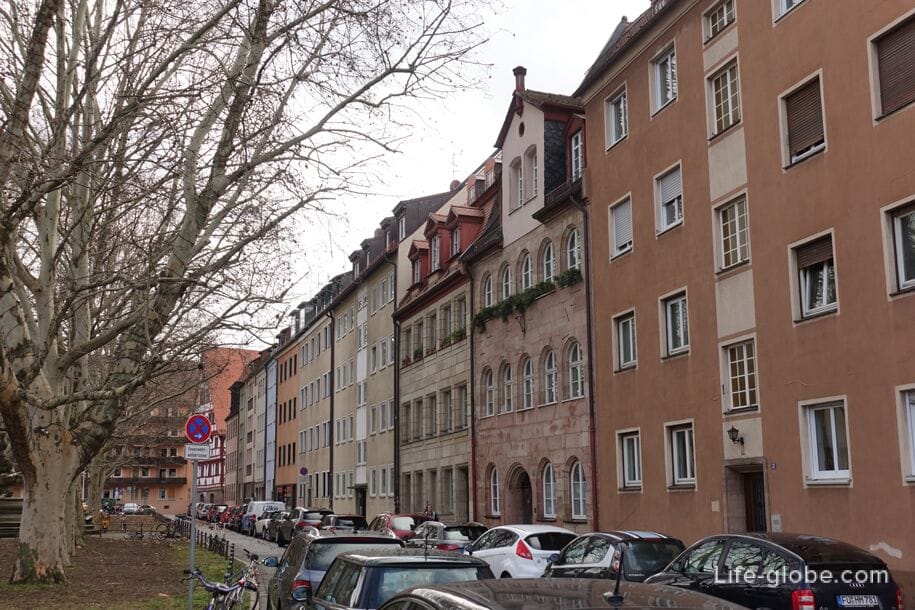
Pilate's House (Pilatushaus) is a town house, which is one of the few surviving town houses in the late Gothic style and one of the most important architectural monuments of the old city of Nuremberg.
The house was built in 1489 and originally belonged to an armory blacksmith (Plattner) Hans Grunwald, who made knight's armor and equipment.
For this reason, the house was also called "the house of the man in armor". On the southeast corner of the building there is a statue of St. George, dressed in knight's armor and standing on a defeated dragon.
During the history of the building has often changed hands. Since 1931, the house belongs to the city of Nuremberg. Today the house is used for temporary exhibitions of contemporary art.
Pilate's House is located on Tiergärtnertorplatz. More about Pilate's house...
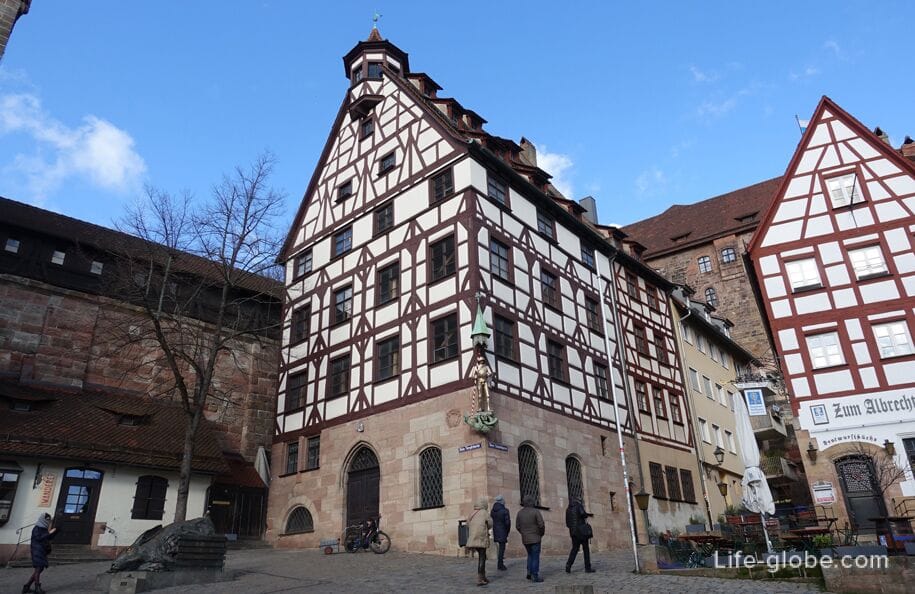
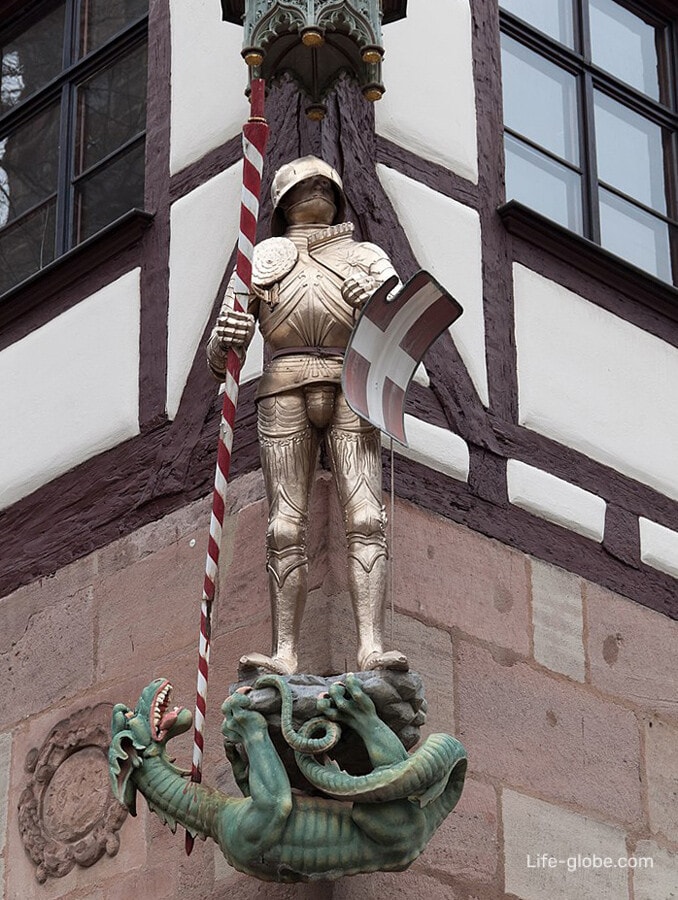
Near Pilate's house there is a sculptural composition "Durer's Hare" (Dürer-Hase Skulptur), created in 1984 by the German sculptor Juergen Goertz (Juergen Goertz) as a tribute to Albrecht Durer.
The sculptural composition consists of two groups:
- in the upper part of the composition, on a pedestal, there is a bronze sculpture of a huge hare, which looks more like a mutant and gets out of a wooden box;
- on the second, smaller pedestal, there is a bronze sculpture of a small and cute bunny. More about the sculpture "Durer's Hare"...
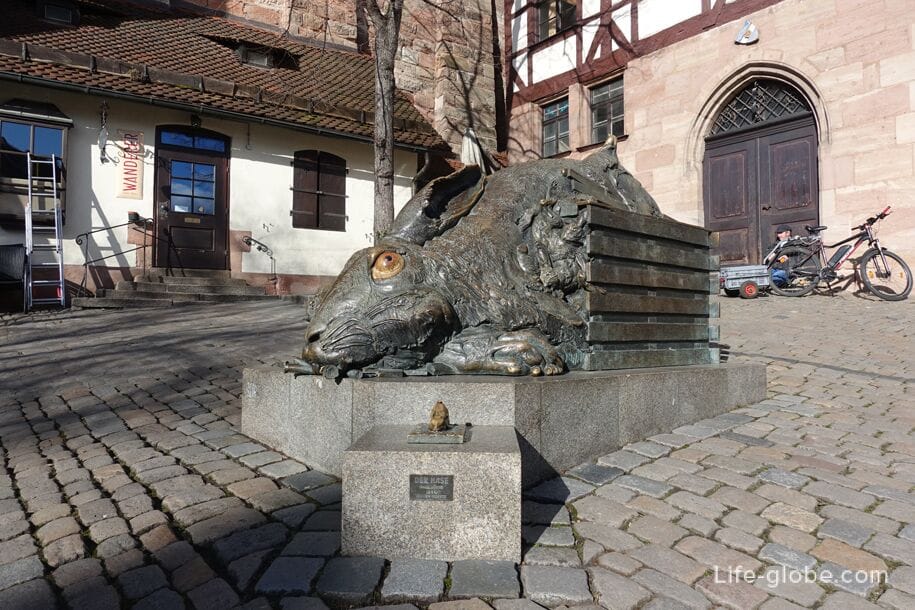
The entrance to the museum "Bunker of Historical Art" (Historischer Kunstbunker / historical Kuntsbunker) is through an unremarkable building. However, the museum itself is located in a rock under the Nuremberg Castle - a former beer cellar, in which, at a depth of up to 24 meters, during the Second World War, Allied troops discovered a Nazi bunker-cache with art objects and valuables taken from the occupied territories.
The museum offers guided tours of the Nuremberg dungeons.
Museum address: Obere Schmiedgasse, 52.
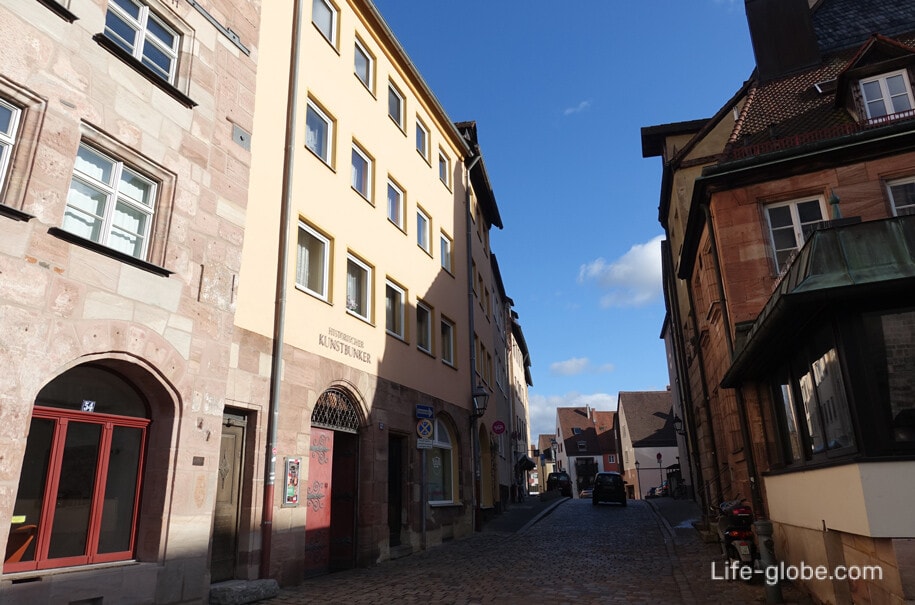
In addition to the bunker of historical art, other excursions to the dungeons (casemates) are held in the old city of Nuremberg.
In the Middle Ages, passages and rooms were laid under the Nuremberg fortress, bastions and defensive city wall (since 1545) - the so-called casemates (Kasematten) and rock passages (Felsengänge).
During the history of the casemates were used for various purposes: as hidden passages, emergency exits, a secret system of water pipes, beer cellars (warehouses for beer) and even as a prison.
Today there are guided tours of the casemates.
Website: felsengaenge-nuernberg. The site contains information, including about excursions to the historical bunker.
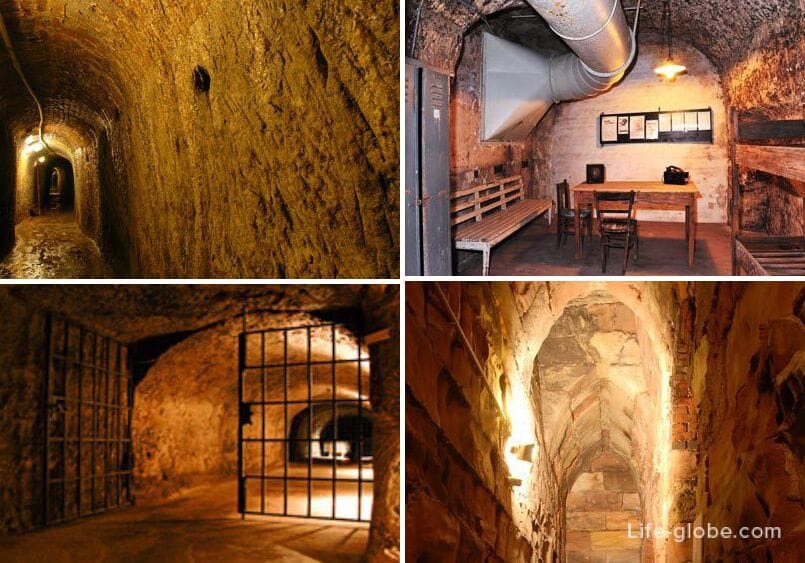
The Peller House (Pellerhaus), also referred to as the "Mayersches Pellerhaus" in relation to the post-war building, is a building that has an attractively restored historic ground floor and part of the courtyard integrated into the new building.
The building in the style of Italian palaces was built for Martin Peller according to the plans of architect Jacob Wolf the Elder from 1602 to 1605 on the site of the former estate.
During the Second World War, the Pellerhaus was almost completely destroyed. Subsequently, only the arched walls up to and including the first floor and partially the courtyard of the former outstanding mansion were preserved and reconstructed. In 1957 they were integrated into a new building.
The address of the Peller house: Egidienplatz, 23. More about the Peller House...
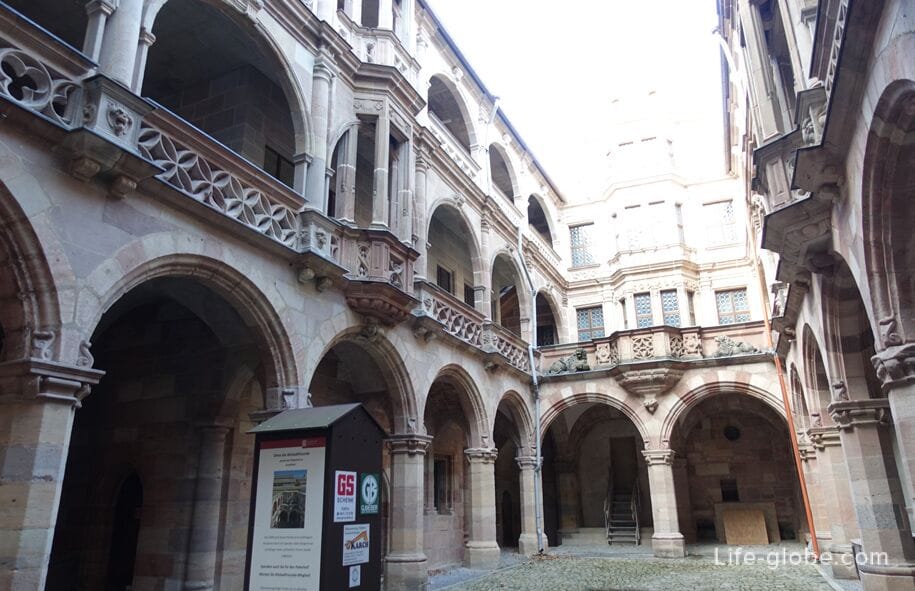
The Church of St. Egidien (Die Kirche St. Egidien) is one of the oldest and only Baroque churches in Nuremberg.
The church was built in the period from 1711 to 1718, on the remains of a medieval monastery church, rebuilt in the early 12th century and almost completely destroyed by fire from 6 to 7 July 1696.
The interior of the shrine is made in classical and Corinthian styles. The coats of arms of the Nuremberg patrician families are framed with stucco.
The church has an organ whose history dates back to 1460. Today's main organ was built in 1963 by the Rieger Orgelbau organ company.
Church address: Egidienplatz, 12.
Website: egidienkirche.
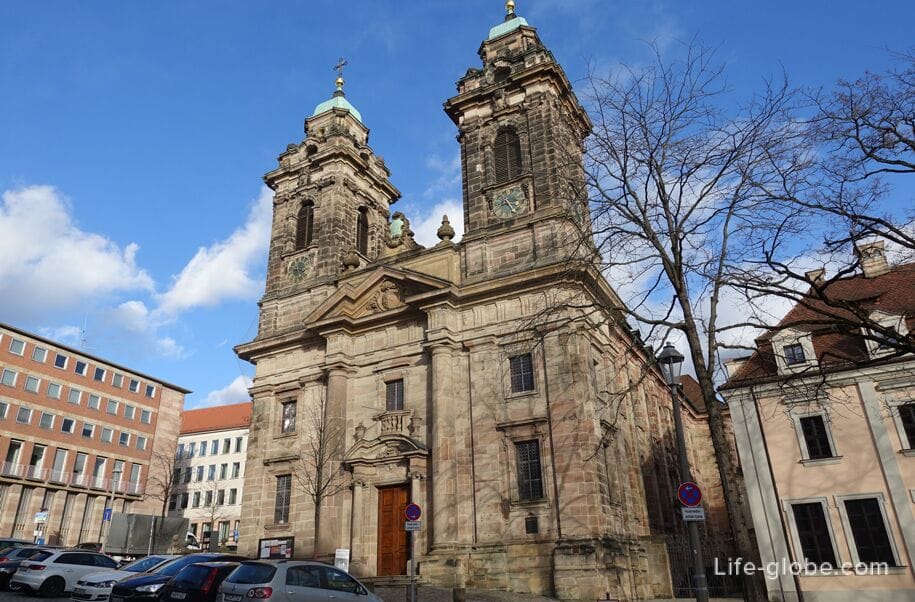

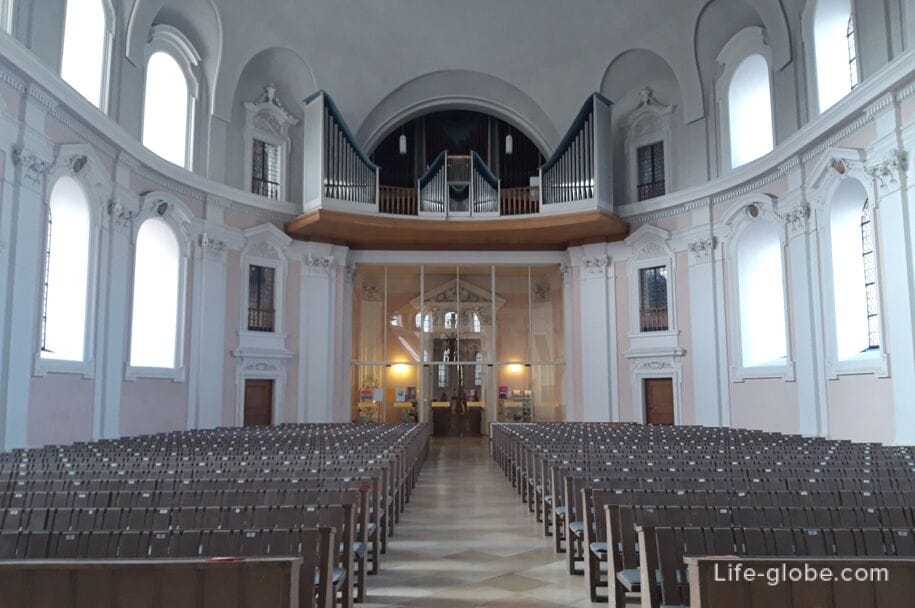

The Peller House and the Church of St. Egidien are located on the Egidienplatz square, the center of which is decorated with an equestrian monument to William I.
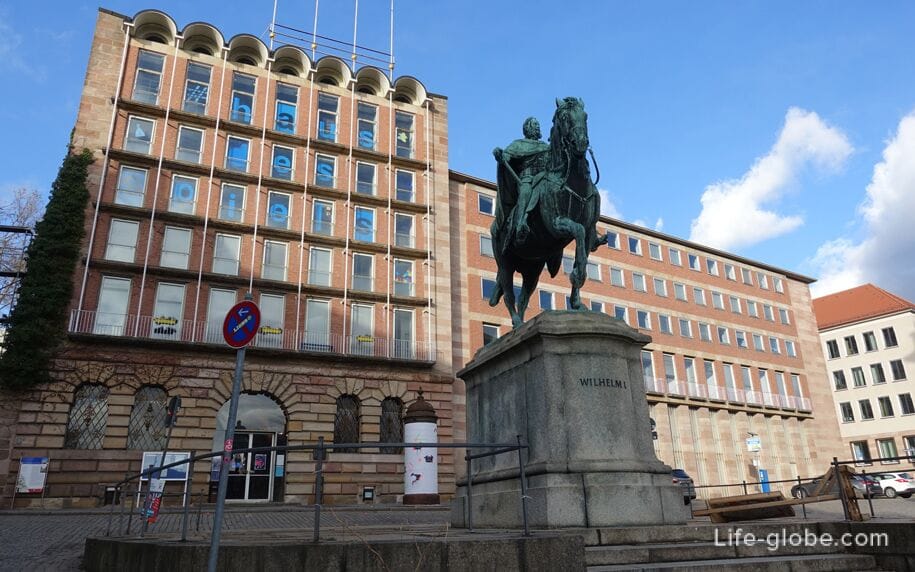
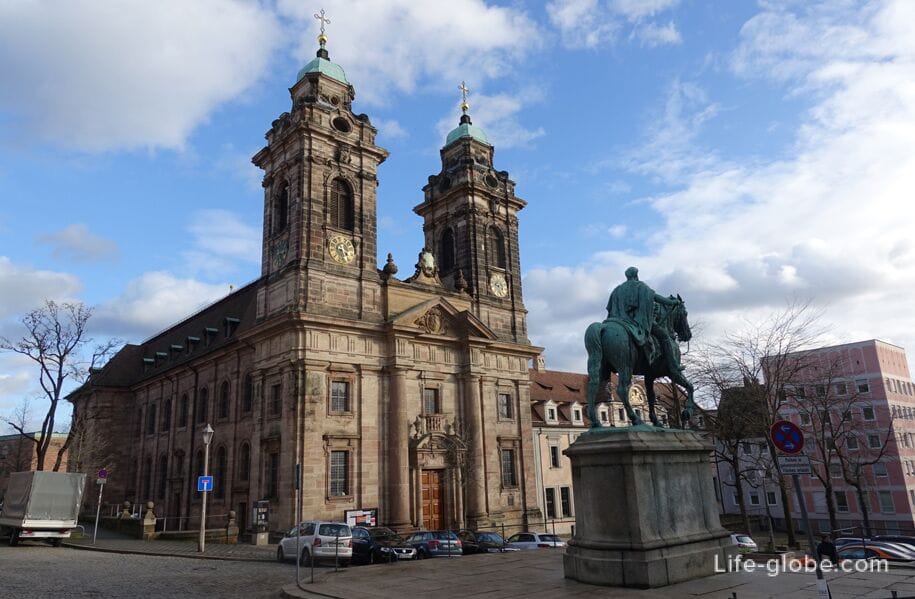
The Martin Behaim Memorial is dedicated to the German (Nuremberg) scientist, great navigator and creator of the oldest surviving globe - Martin Behaim (October 6, 1459 - July 29, 1507).
On a neo-Gothic sandstone pedestal there is a statue of Martin Boeheim 3 meters high, surrounded on the left and right by two seated people personifying trade and science.
A three-tiered granite base leads to the pedestal.
The bronze monument was cast in the Lenz art workshop by Johann Ressner. The memorial was opened on September 17, 1890.
The memorial is located on Theresienplatz.
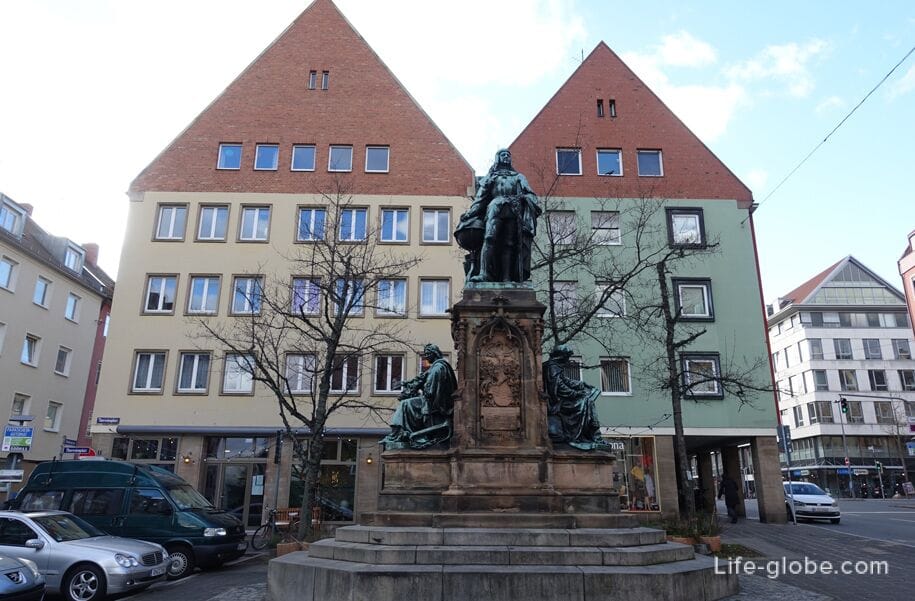
In addition to the listed monuments and fountains, there are other fountains, sculptures and monuments in the old city of Nuremberg.
For example, the monument to Albrecht Dürer (Albrecht-Dürer-Denkmal), the fountain of Vultures (Geiersbrunnen), the sculpture "Sleeping Rhinoceros" (Das schlafende Nashorn), the sculpture "Blue Riders" (Blauer Reiter) and others.
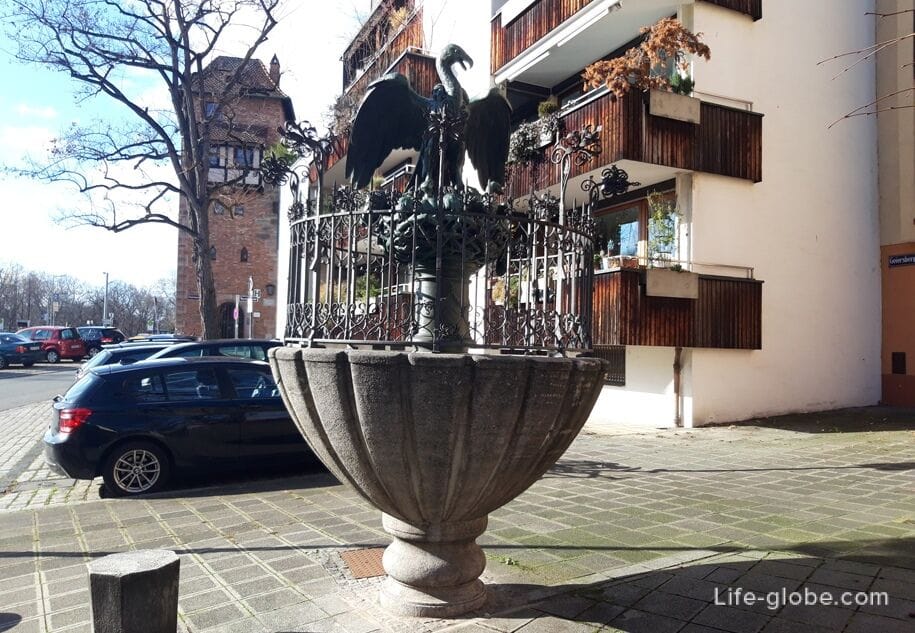

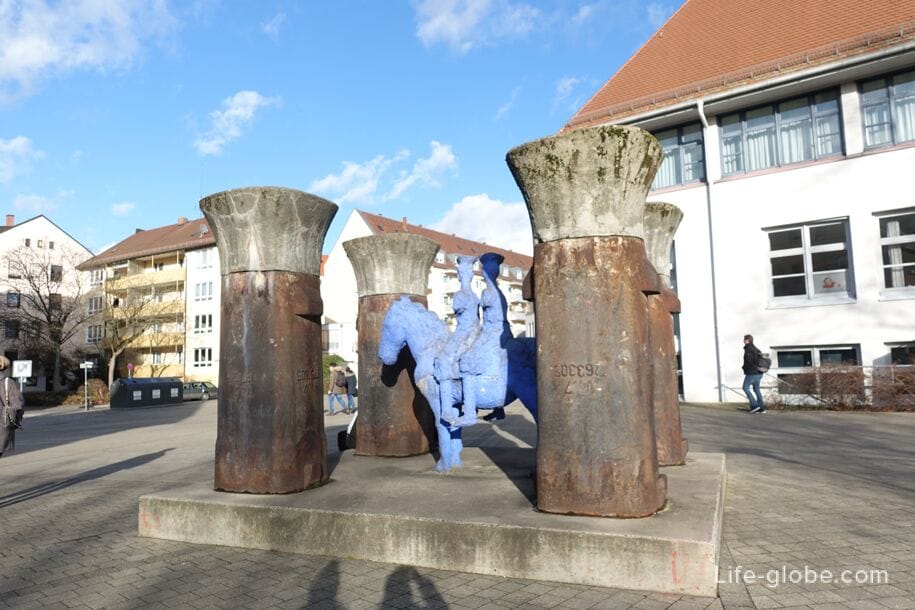
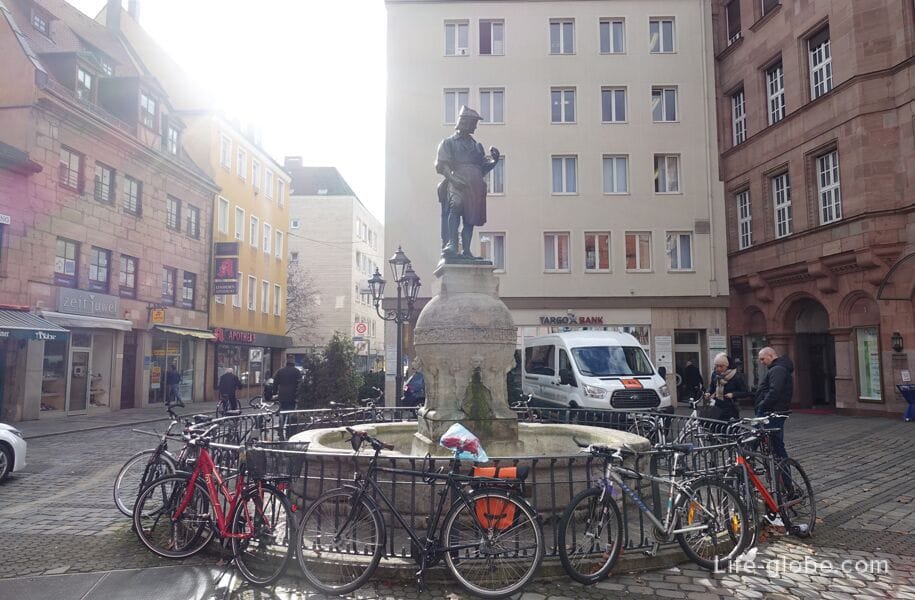
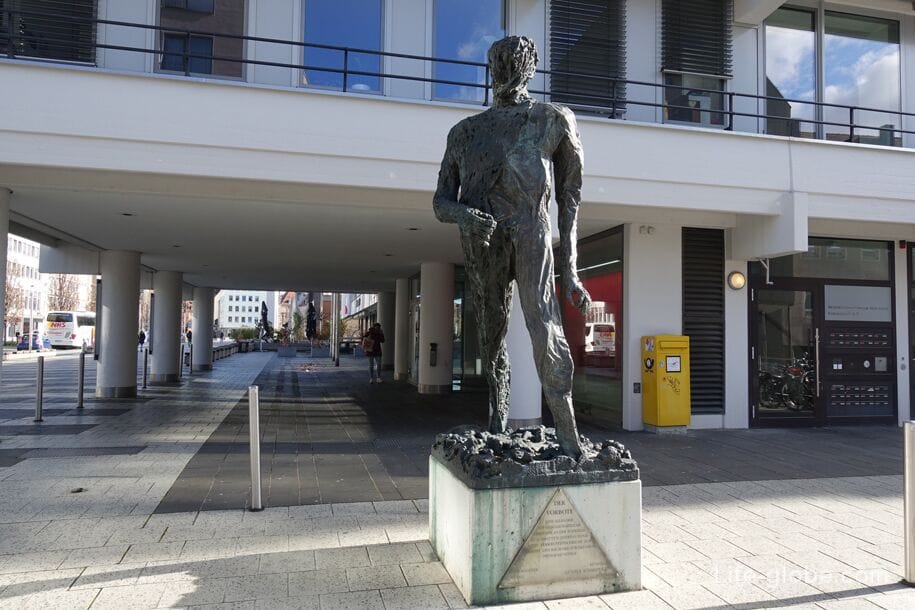
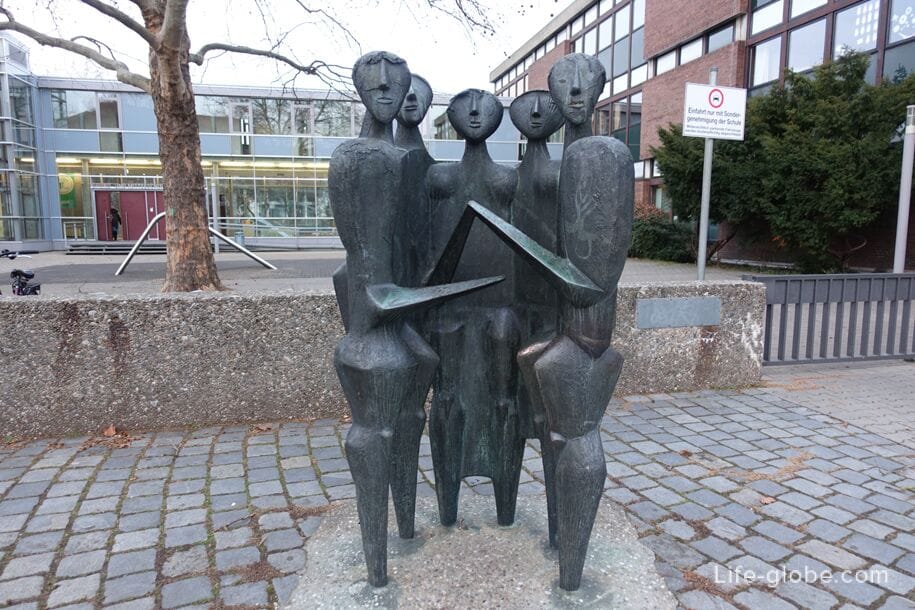
The shooting house, also known as the men's shooting house or shooting range for men (Herrenschießhaus / Herrenschiesshaus) is a historical building built for the Nuremberg shooting society by the master builder Hans Dietmayr from Schaffhausen in 1582-1583, above the existing shooting range (which was erected, presumably in 1462), near the moat where the penultimate city fortifications were located.
Typical Renaissance elements are visible in the architecture of the house: a horizontal structure without protruding parts of the building, an arched strict portal with a triangular pediment and pilasters, as well as a side pediment with snail curls.
Also notable are the arched basements. And on the massive pitched roof of the building there are windows and two bay windows decorated with patterns and pointed roofs that look like turrets.
House address: Am Sand, 8. More about the shooting club house...
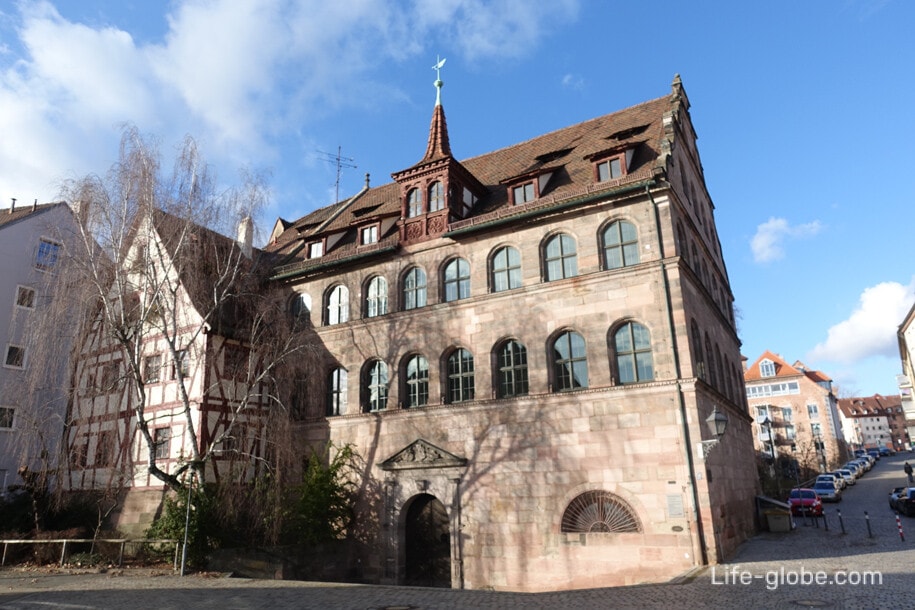
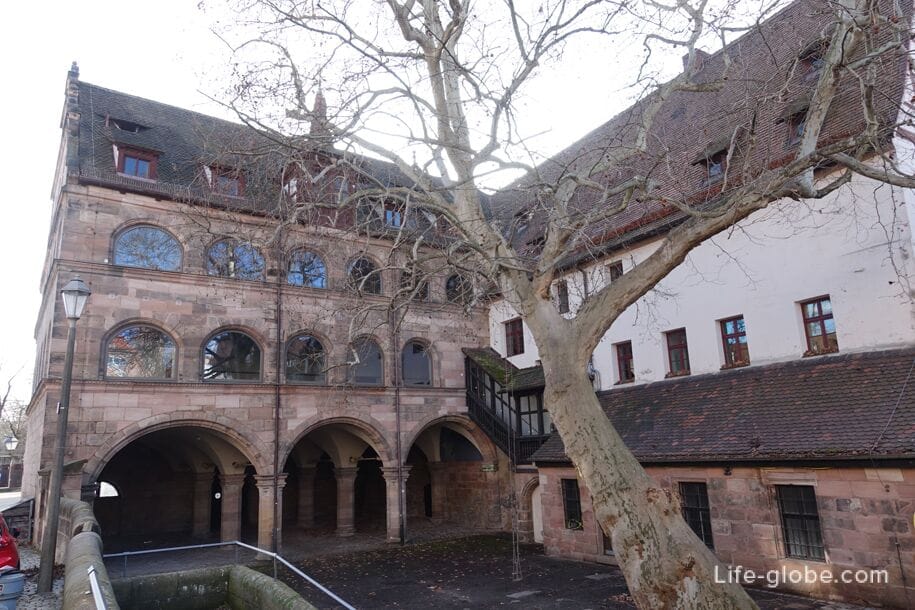
Seven Rows or Seven Lines (Sieben Zeilen / Sieben Zeilen) is the name of the historical workers' village (quarter) in Nuremberg.
In the period from 1489 to 1524, houses were built in several rows on the filled-in moat of the former defensive fortifications of the city, as social housing for weavers from Swabia.
Today, the house that survived during the war in the former village of weavers, which was later rebuilt, is one of the important architectural monuments of the city.
Building address: Webersplatz / Sieben Zeilen. Learn more about the Seven Rows...

The Castle of Tuchers (Tucherschloss) is the historical residence of the noble patrician family of Tuchers (Tuc).
The residence was built by Lorenz Tucher in 1533-1544, according to the designs, probably, of Paulus Boeheim, who designed the building based on the castles of the French Renaissance.
Today, a museum is located within the walls of the former residence. The public castle garden is adjacent to the museum.
Castle address: Hirschelgasse, 9-11.
Museum website: tucherschloss-nyurnberg. More about the Tuher Castle and the museum...
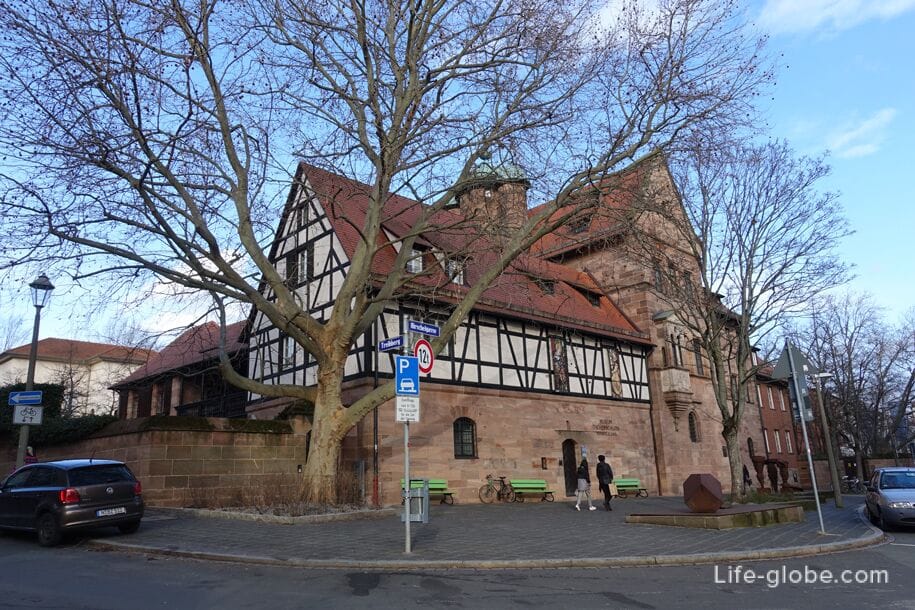
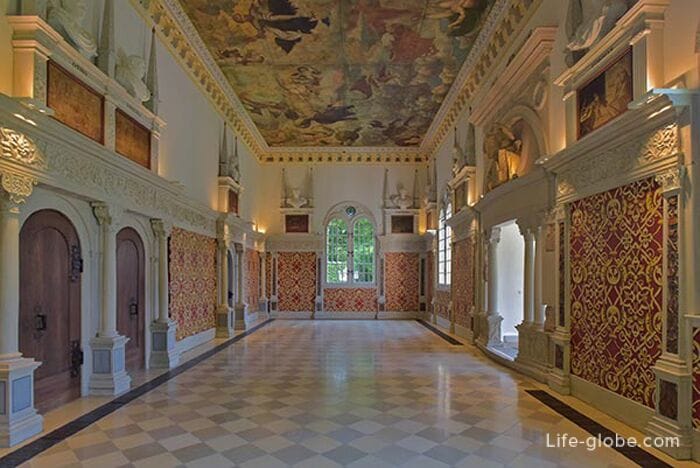
The Clock Tower, also known as the "Laufer Shock Tower" (Laufer Schlagturm) is a historical gate tower that was part of the penultimate city fortifications of Nuremberg and was also the gateway to the city.
The tower originally dates back to the 13th century and was probably erected in about 1250.
Today, this tall tower with an arched passage, a clock, niches and a pointed roof, to which a small fragment of the city defensive wall adjoins on the north side, and on the south side there is a structure with a gable roof and three arched openings (passages), two of which are driveways.
The tower is located on Innerer Laufer Platz (Innerer Laufer Platz). Learn more about the Clock Tower...
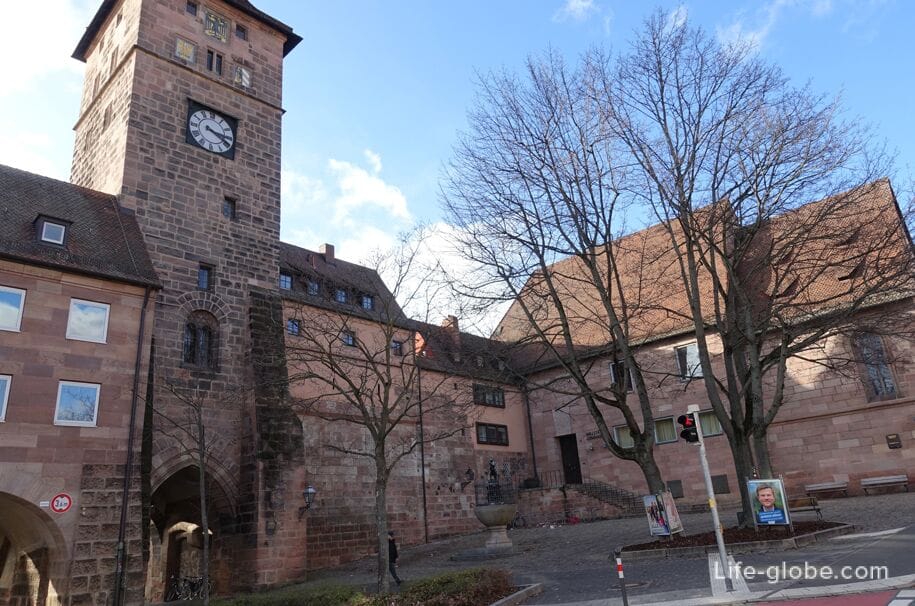
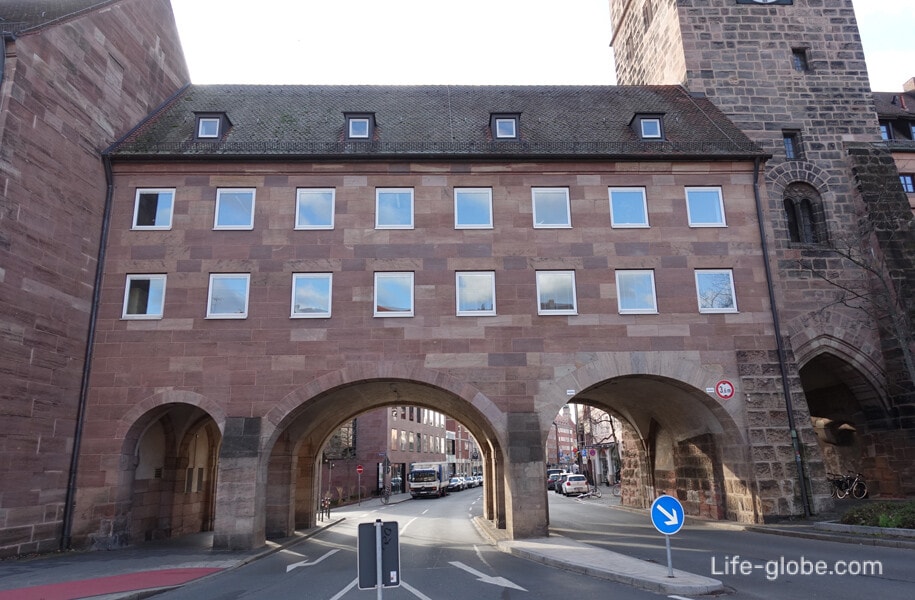
In front of the Clock Tower, as part of the ensemble, there are:
- Grübelsbrunnen fountain dedicated to the Nuremberg folk poet Konrad Grübel (Johann-Konrad Grübel, 1736-1809).
The Rococo fountain was designed by Friedrich Wanderer and installed in 1881;

- The Landau Chapel (Landauerkapelle), also known as the Chapel of All Saints (Allerheiligenkapelle) is a late Gothic building built according to the plan of the Nuremberg architect Hans Beheim the Elder between 1501 and 1510 as the chapel of the House of the Twelve Landauer Brothers.
Albrecht Durer created the painting "Adoration of the Holy Trinity", also known as the "Landauer Altar" (Allerheiligenbild, Landauer Altar), in 1511 for the chapel commissioned by Matthias Landauer. The painting is now in the Kunsthistorisches Museum Wien, the original frame is in the German National Museum in Nuremberg (Germanisches Nationalmuseum). A copy of the painting can be seen in the chapel itself.
In the chapel is the burial of merchant Matthias Landauer;

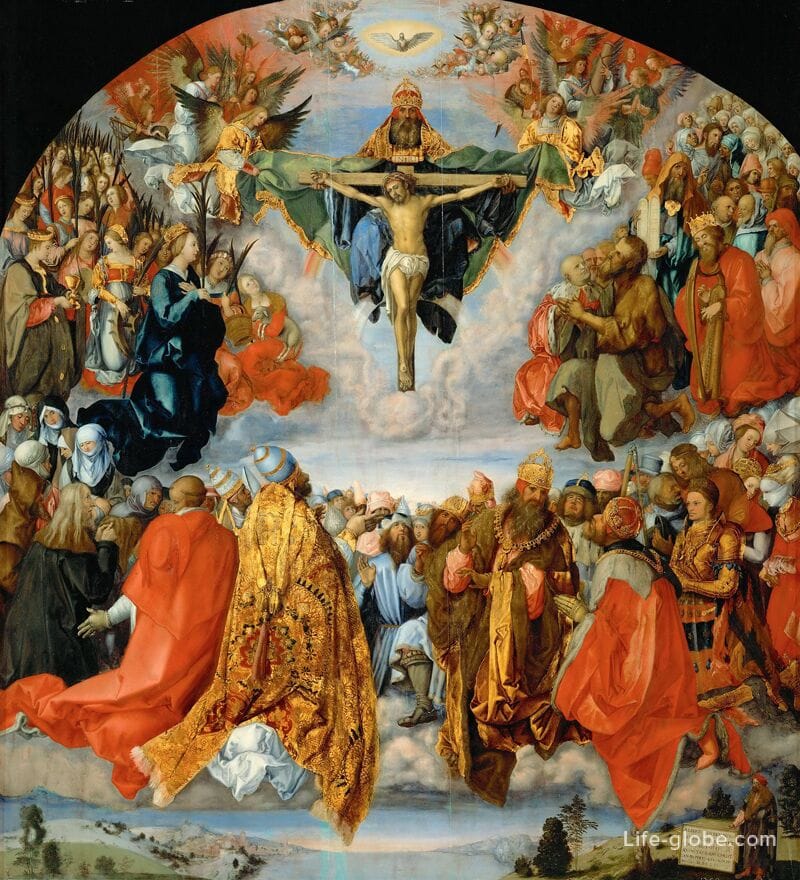
- Willstätter Gymnasium, which is adjacent to the west side of the chapel and was built in 1955-1956 to replace a house destroyed during World War II.
The gymnasium is named after its former student, Richard Willstätter, winner of the Nobel Prize in Chemistry.

The synagogue monument (Synagogendenkmal) perpetuates the main city synagogue on Hans-Sachs-Platz, which was opened in 1874, had a Moorish-Byzantine style and was considered one of the most beautiful in Europe.
On August 10, 1938, the synagogue was blown up by the Nazis because it "spoiled the beautiful German ensemble of the city."
Today, on the site of the synagogue there is a memorial consisting of a relief of a defunct synagogue, created by Reinhard Heiber (1988), and a memorial stele in front of it, created by August Hofmann (1970).
To the left of the synagogue memorial is a plaque commemorating the execution of German businessman of Jewish origin Leo Katzenberger.
The monument is located near the Hospital Bridge (Spitalbrücke / Spitalbrücke) on the island of Schütt.

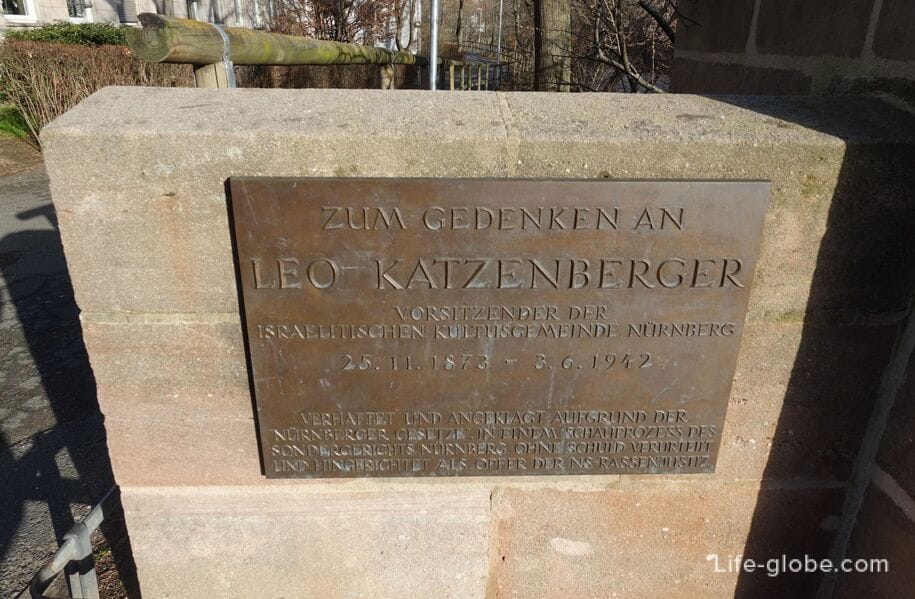
Hat Museum (Hutmuseum) is a private museum in old Nuremberg, which tells about the production of hats and their properties.
The museum is located in the former workshop of a hatter and is considered the smallest museum in Nuremberg.
In 1878, the hatter Johann Bremme opened his first workshop in Innere Laufer Gasse. After World War II, the company expanded under the name "Hut-Brömme" with additional branches in Nuremberg and Erlangen. Horst Bremme, the fifth-generation owner, opened a private hat museum in the headquarters with old trading equipment and workshop on May 3, 2003 for the 125th anniversary of the company.
In the vaulted basement there is an old trading equipment and a workshop with historical exhibits. The production process of hats using original tools and various materials is also shown.
Museum address: Innere Laufer Gasse, 33.
Museum website: das-museum.
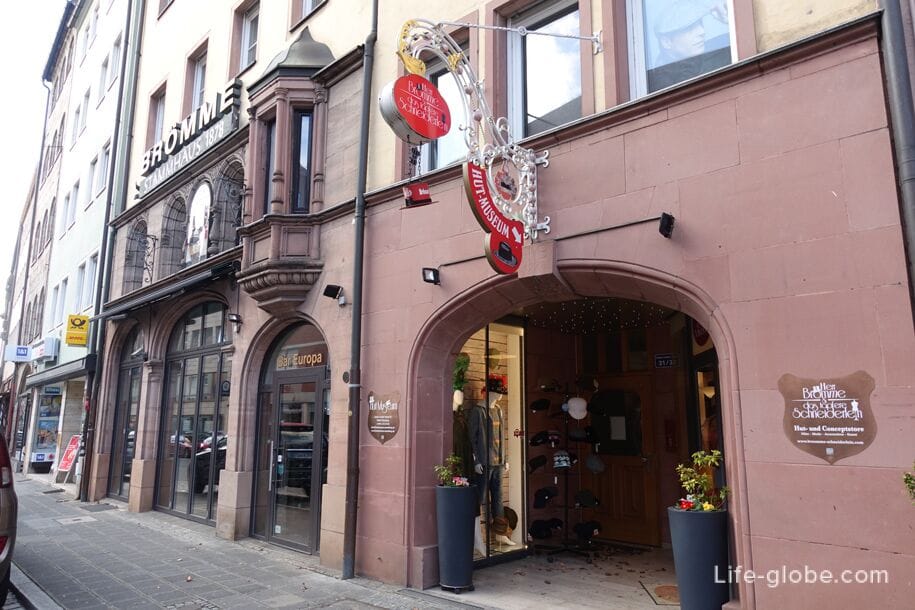
In addition to these, there are other museums in the old city of Nuremberg, including private ones.
For example,The new Museum of Art and Design (Neues Museum - Staatliches Museum für Kunst und Design Nürnberg), a small museum and amber shop (Bernsteinmuseum Nürnberg), the archive of German games (Deutsches Spielarchiv Nürnberg), the museum tower of feelings with an interactive museum (turmdersinne), the Museum of Natural History (Naturhistorisches Museum).
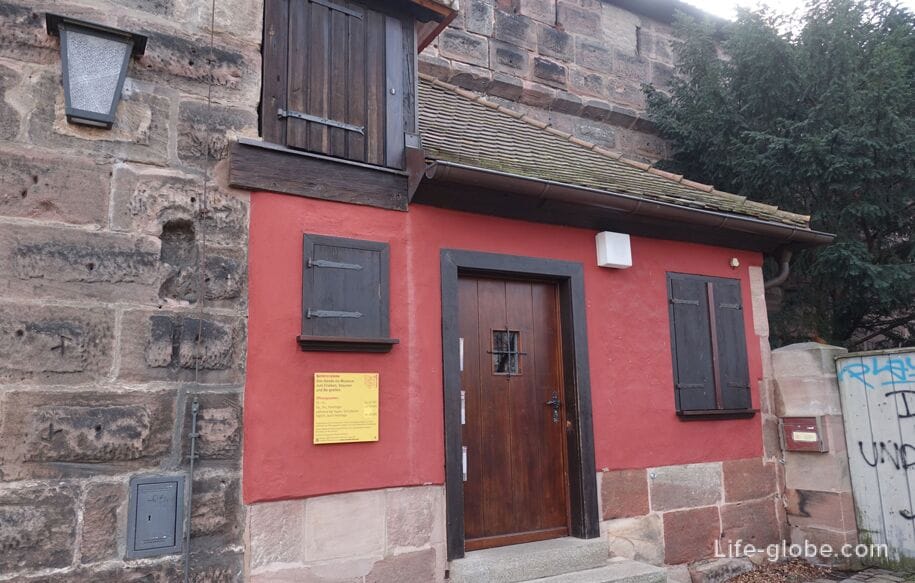
For the convenience of visiting attractions and museums in the city of Nuremberg, you can purchase a Nuremberg card (NÜRNBERG CARD + FÜRTH) with which you can visit some museums and attractions for free. Free public transport is also included.
You can take a trip around the city by hop-on hop-off tour bus or by sightseeing train to the sights of Nuremberg.
You can view the cost and buy tourist maps, tour bus routes and buy tickets, as well as other excursions, tours and tickets in Nuremberg here →
All accommodation facilities in Nuremberg, including in the old town and more remotely from it, can be viewed and booked here
